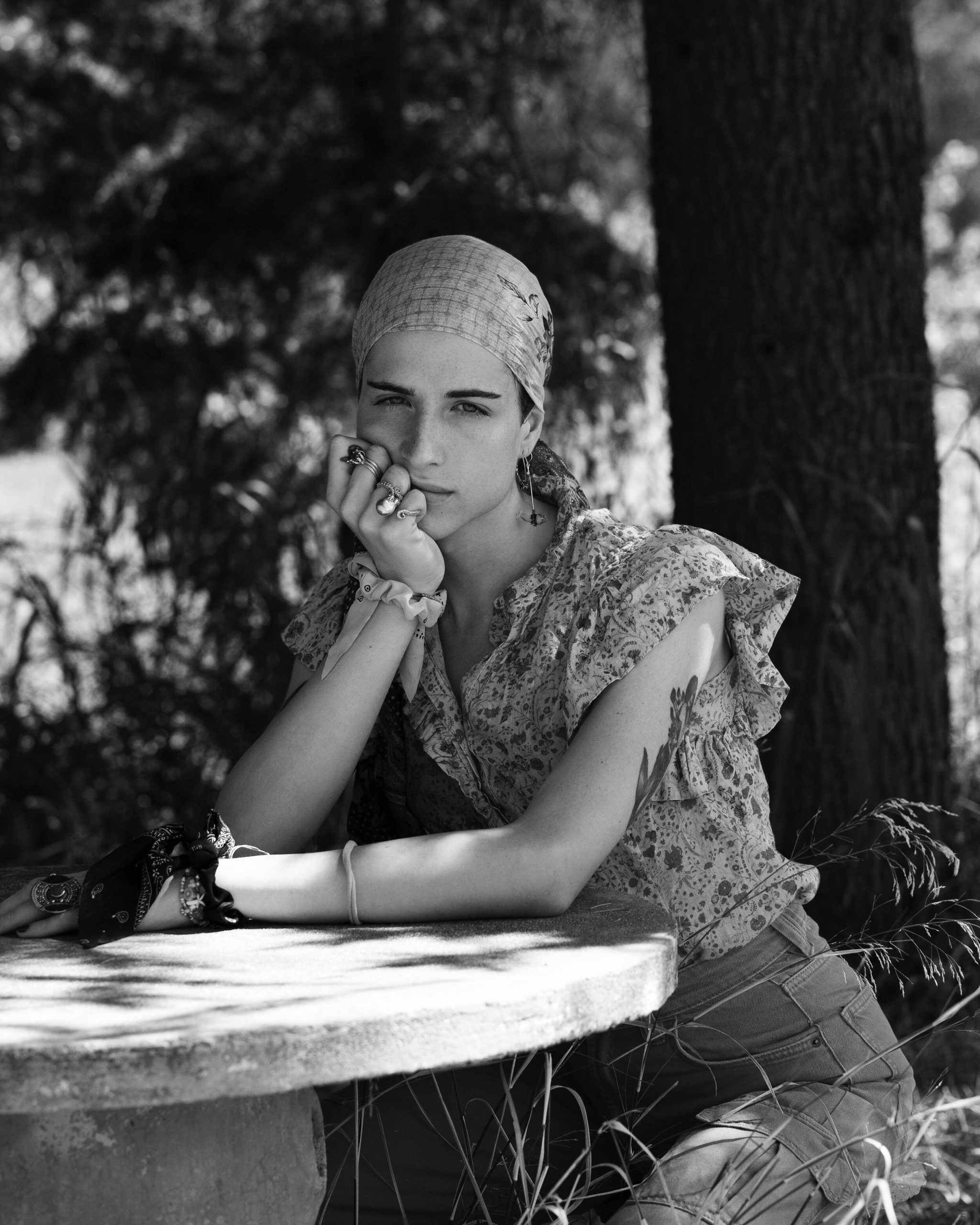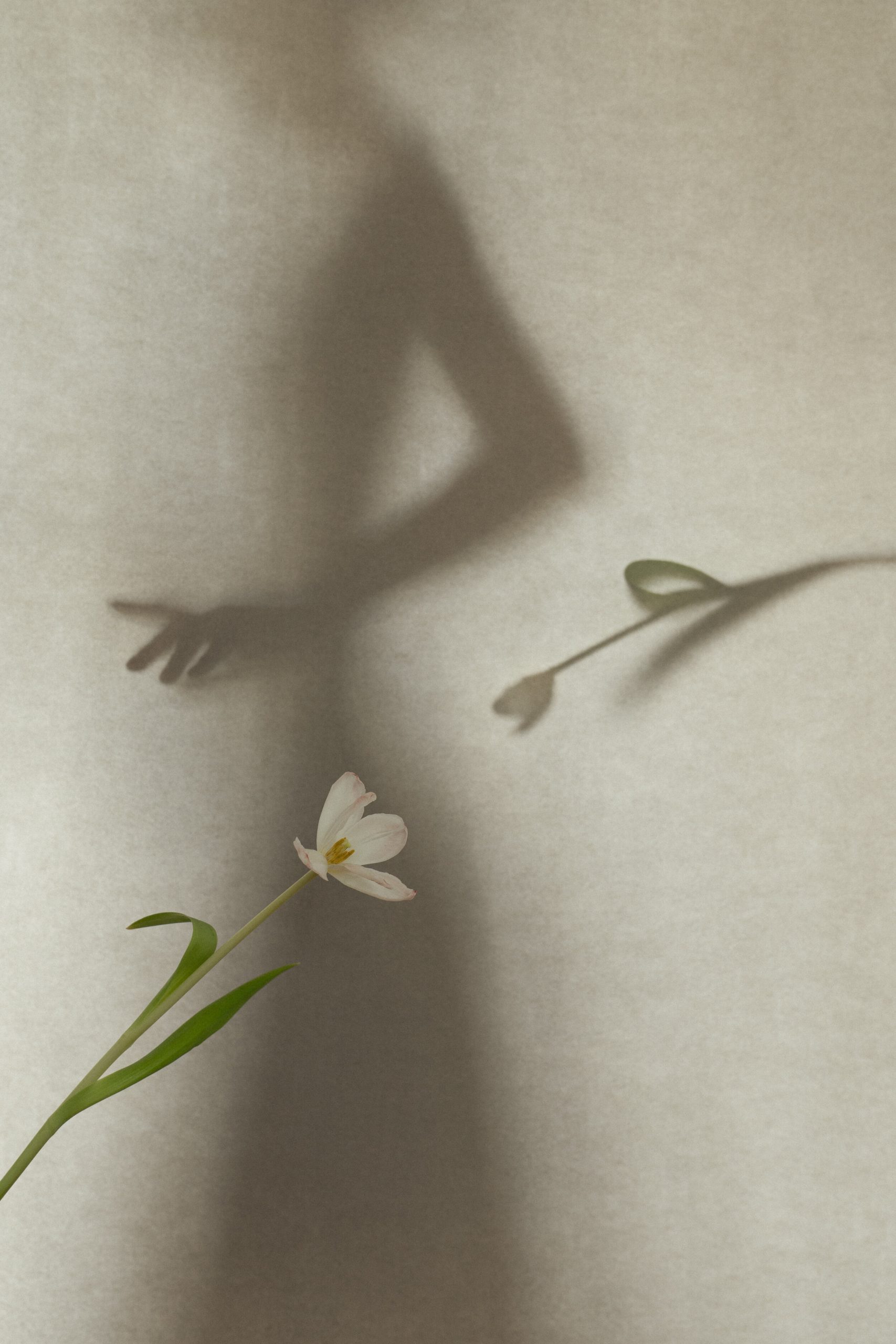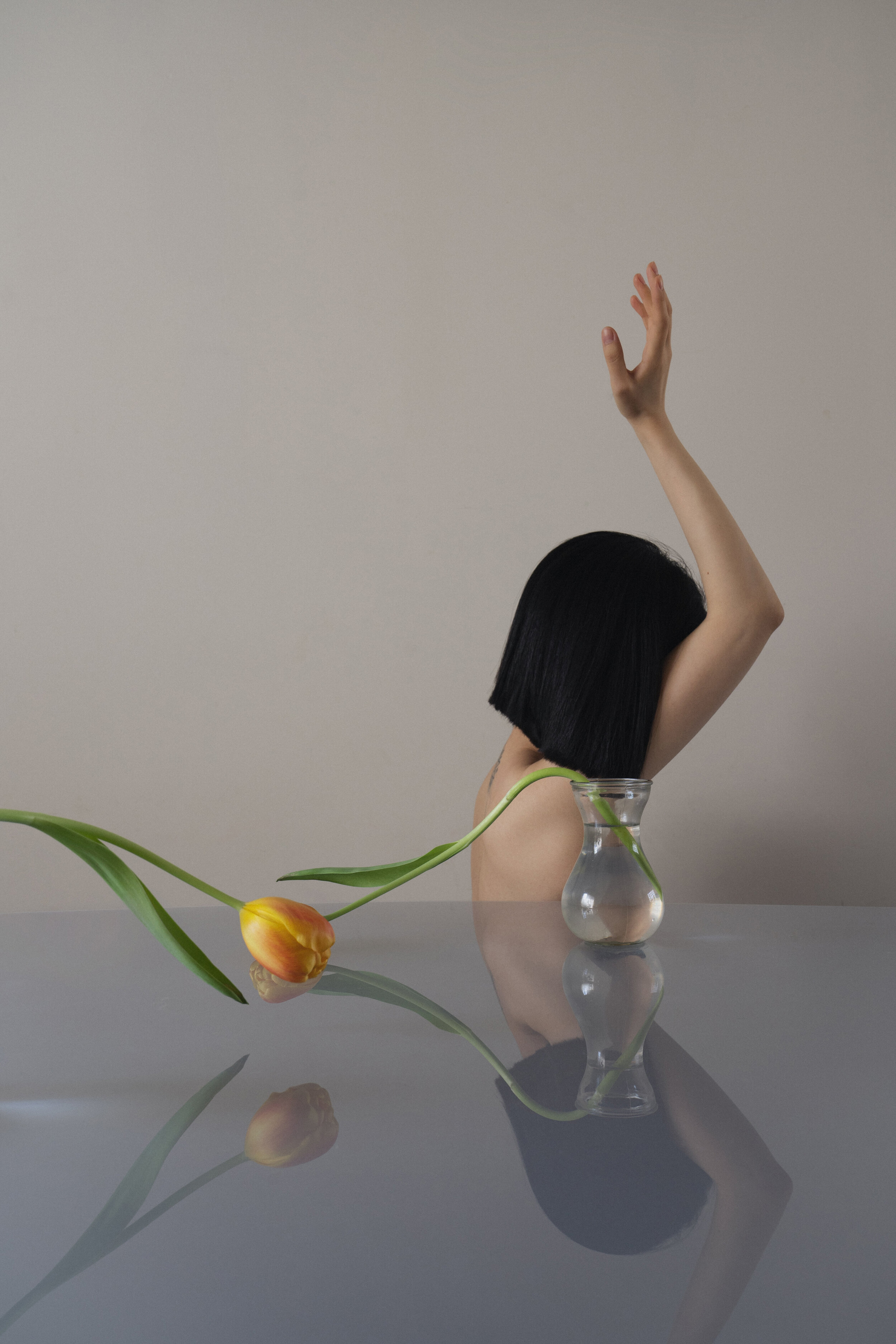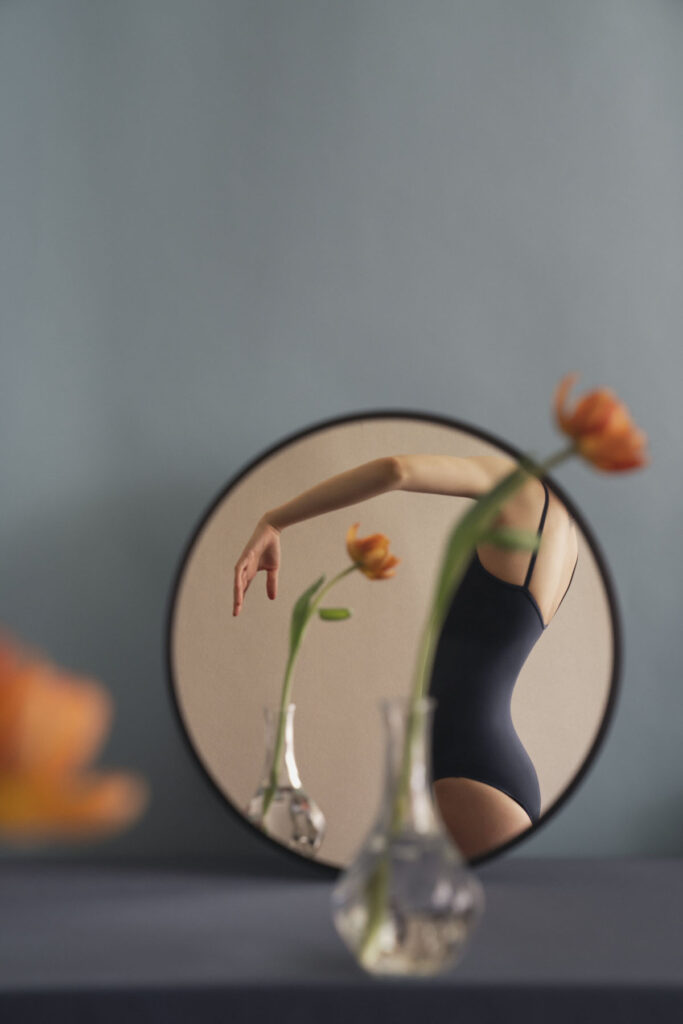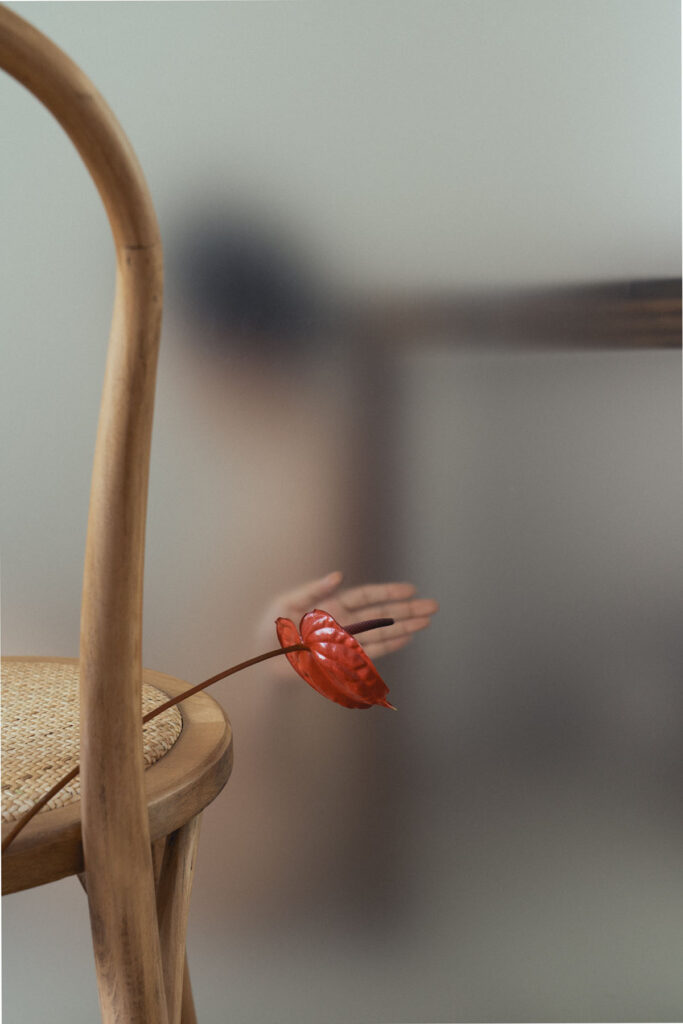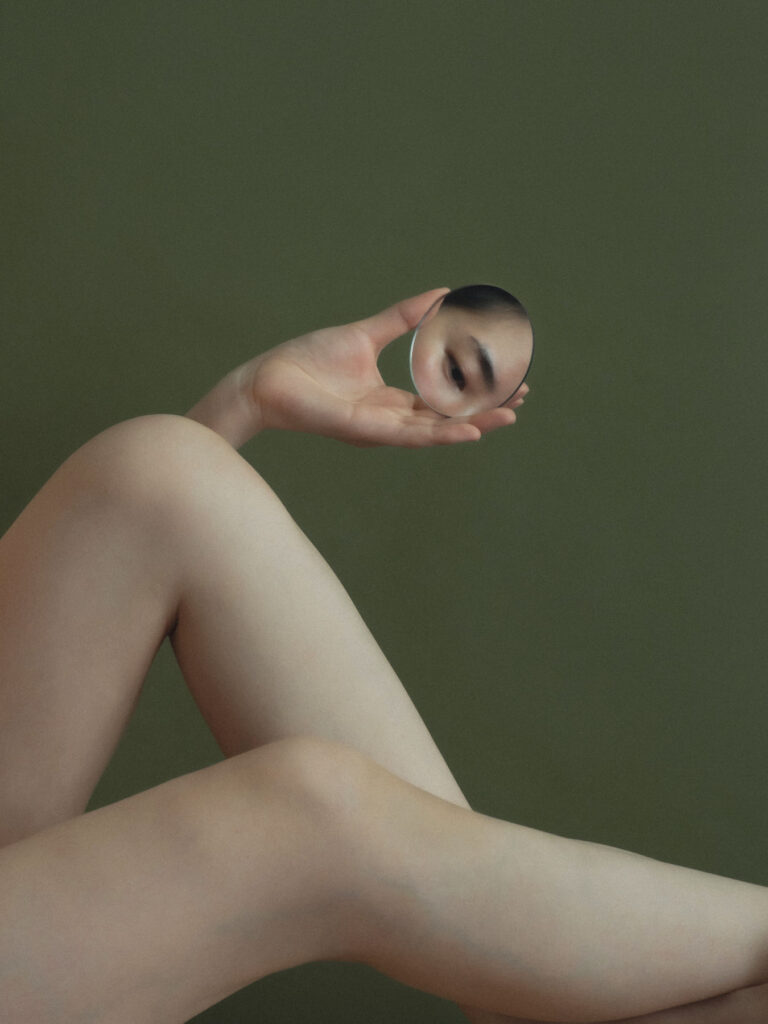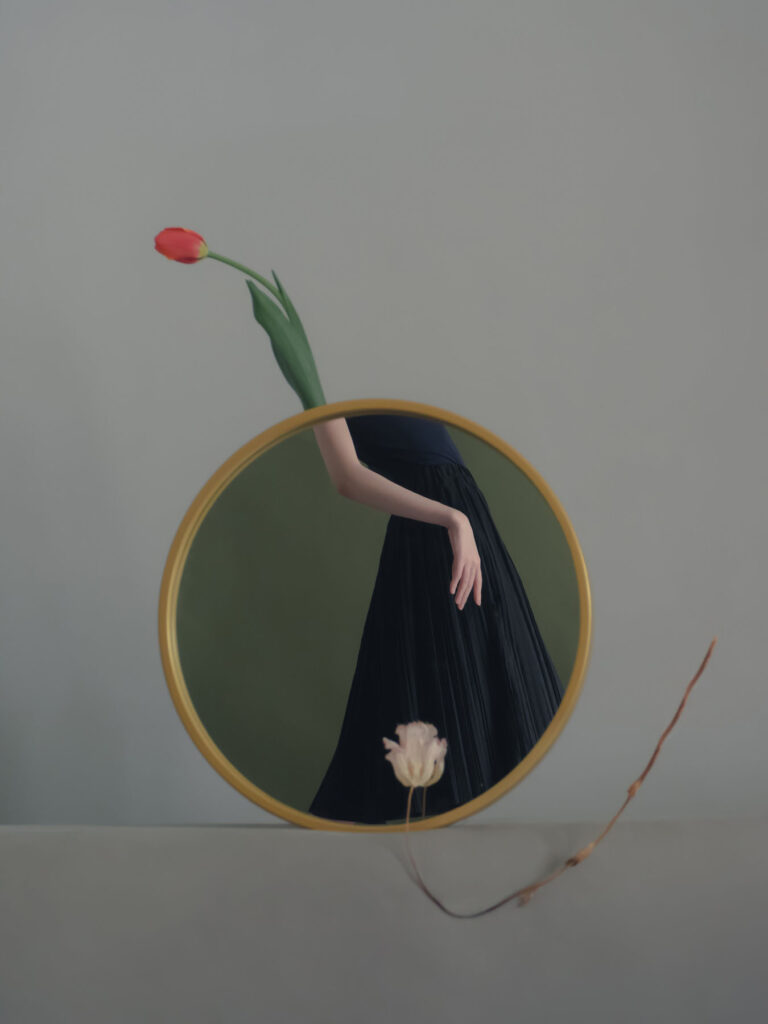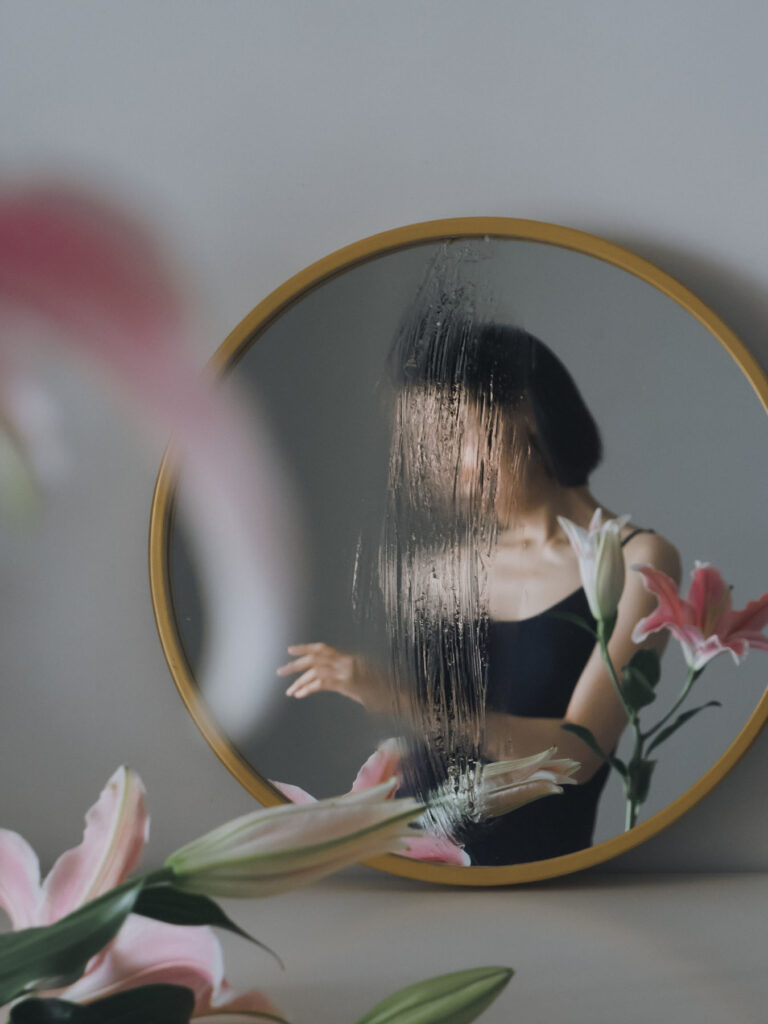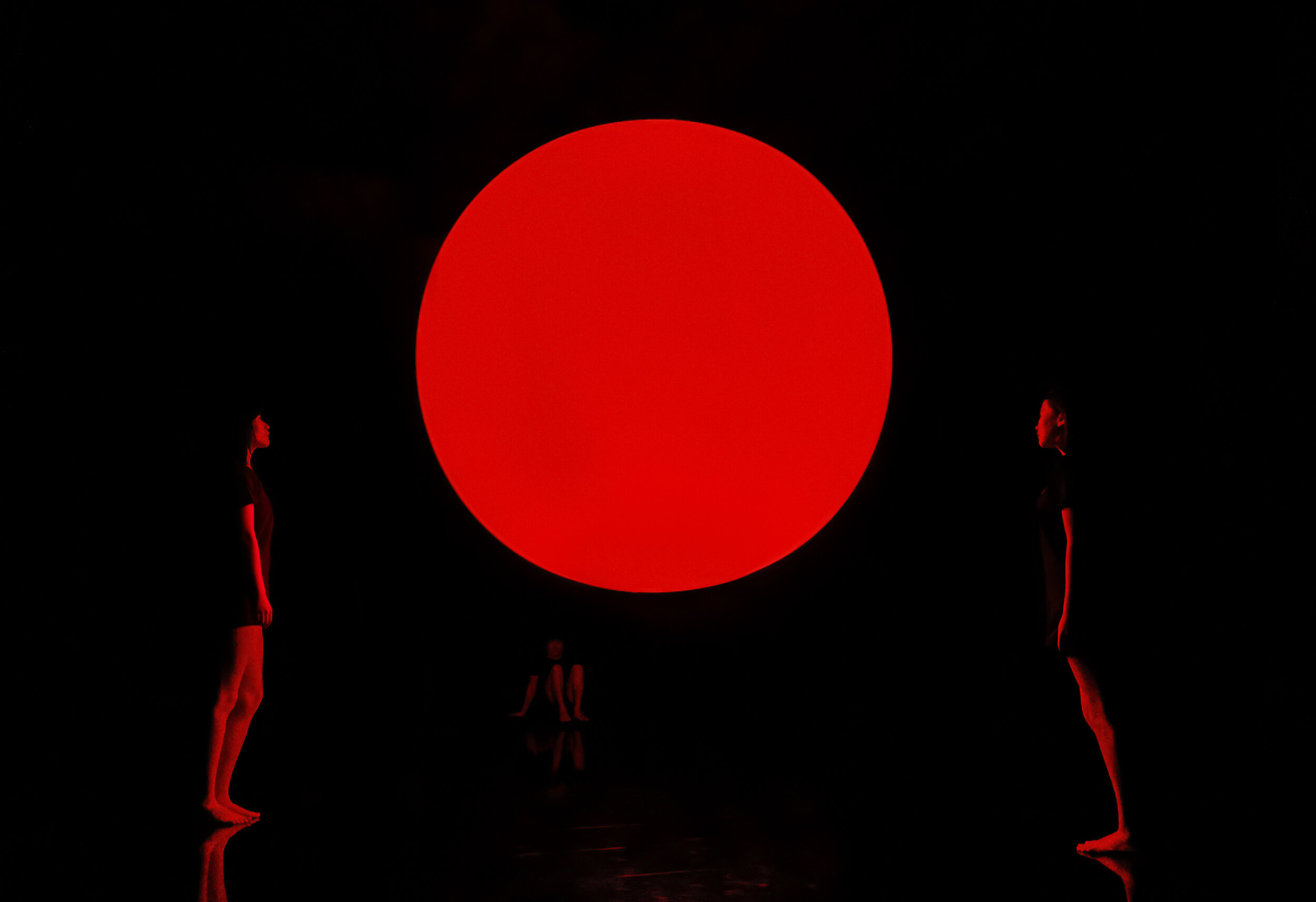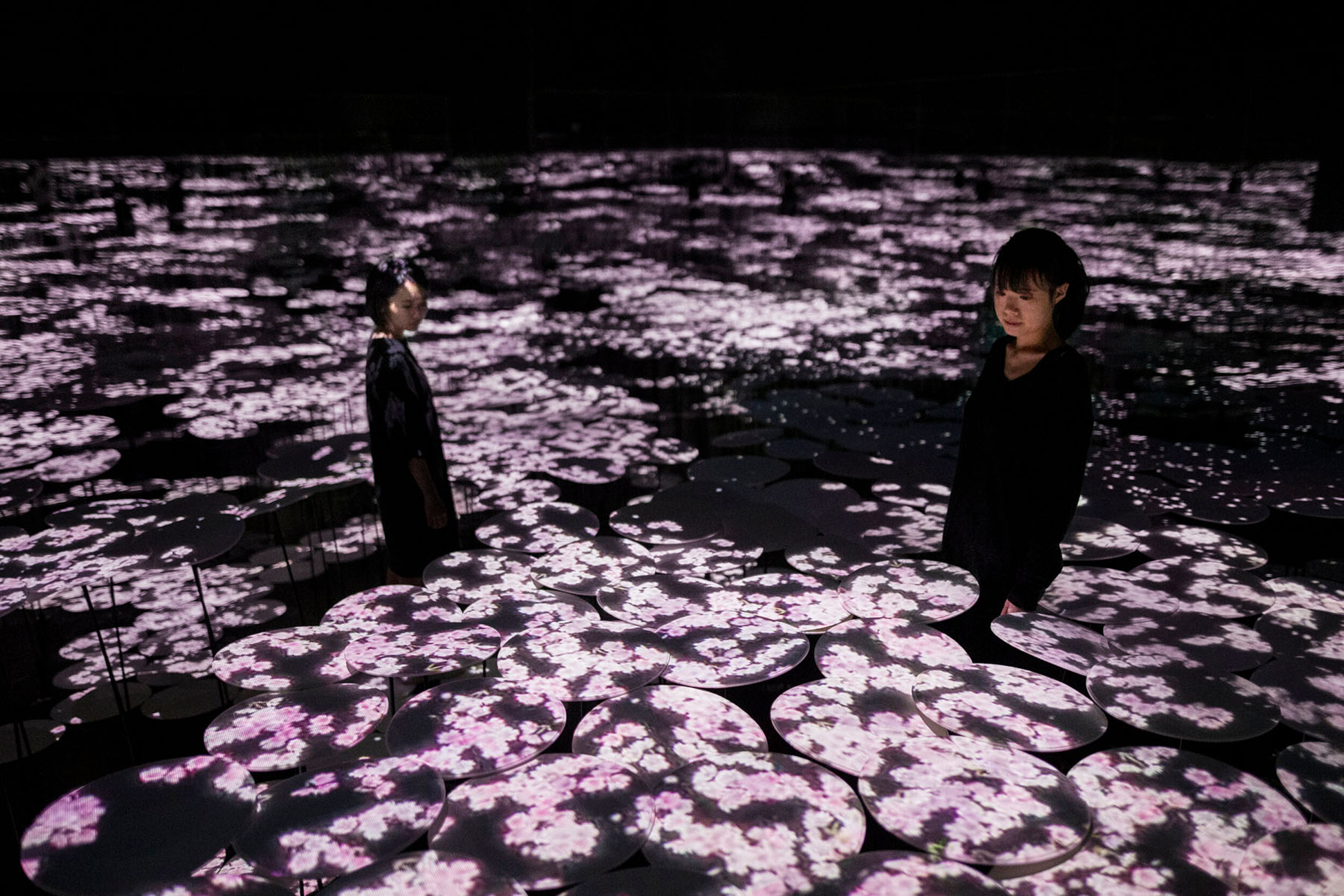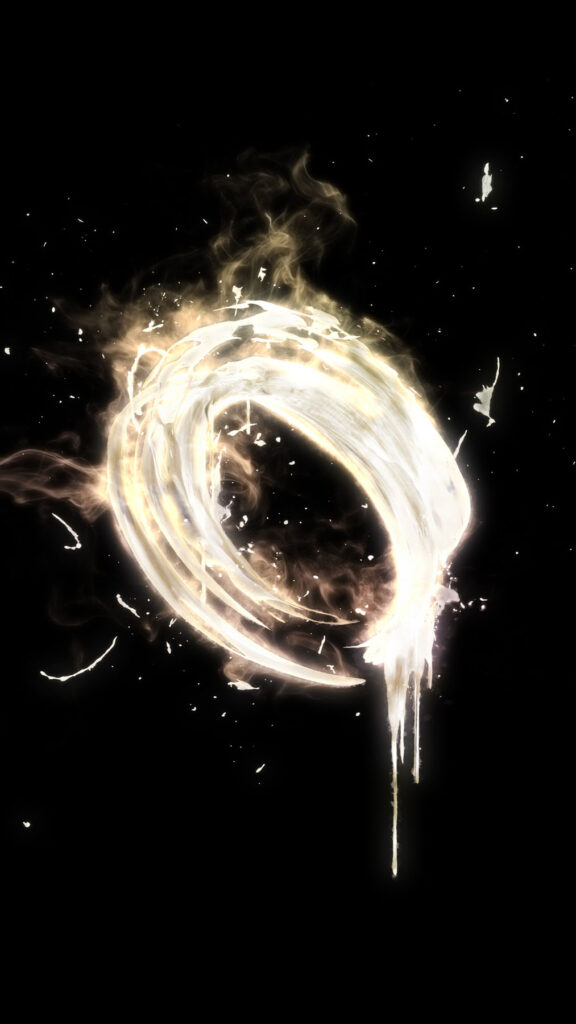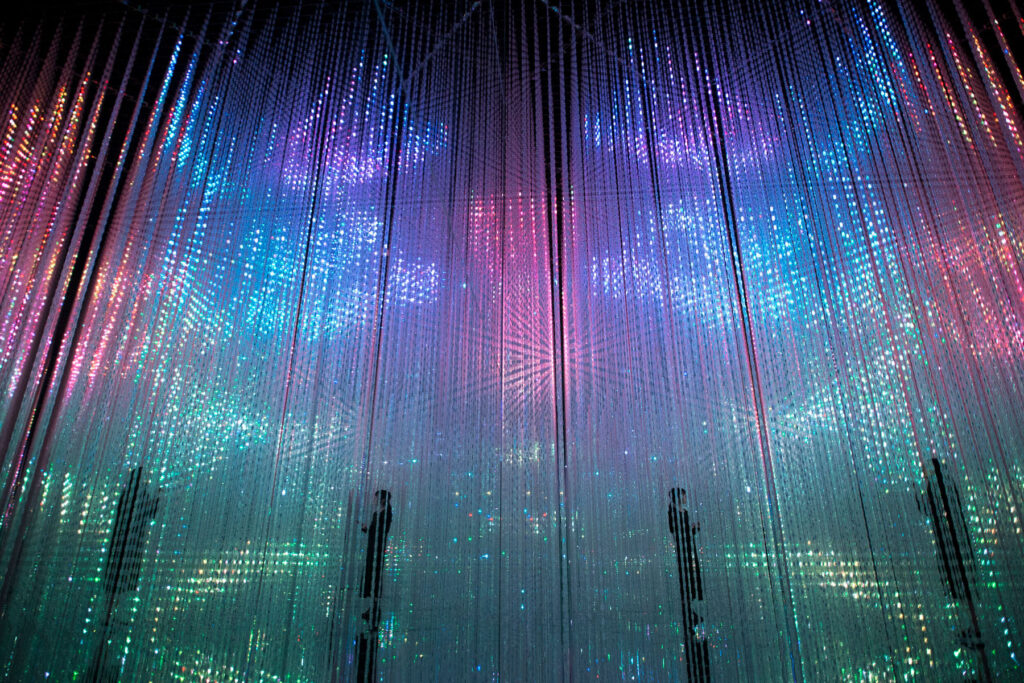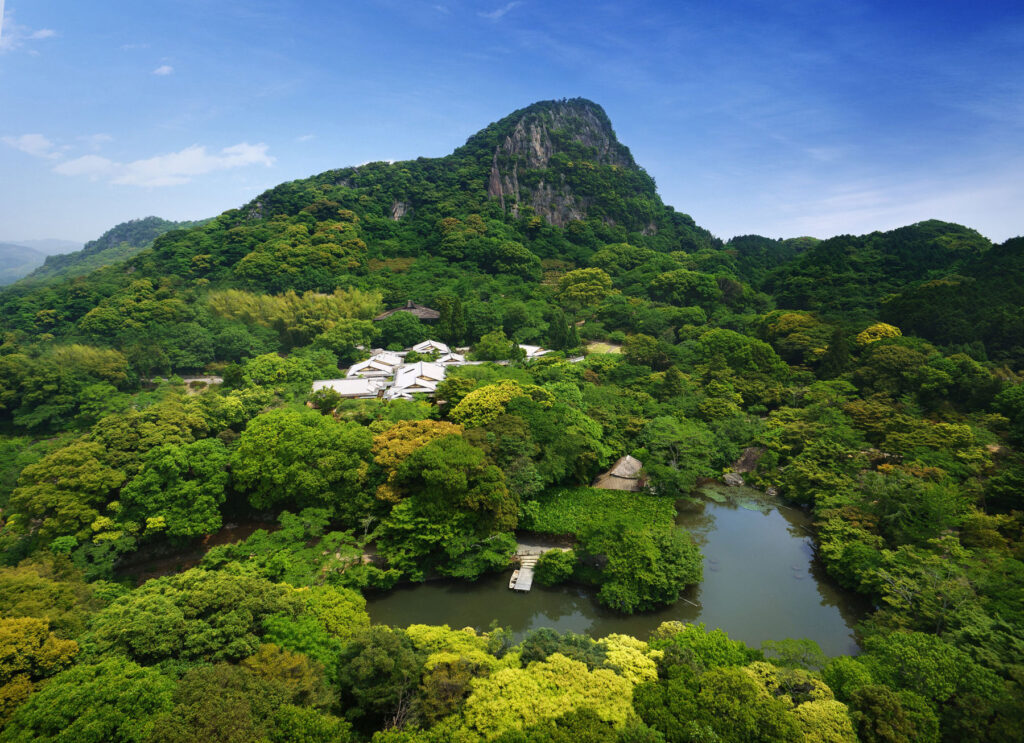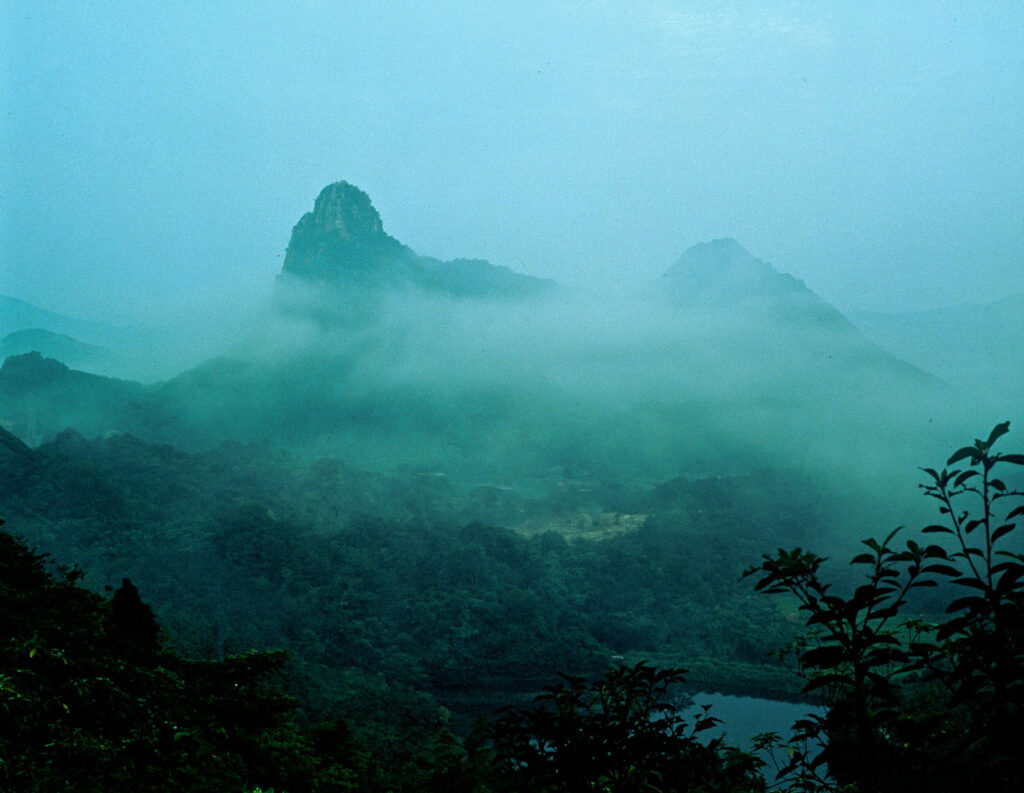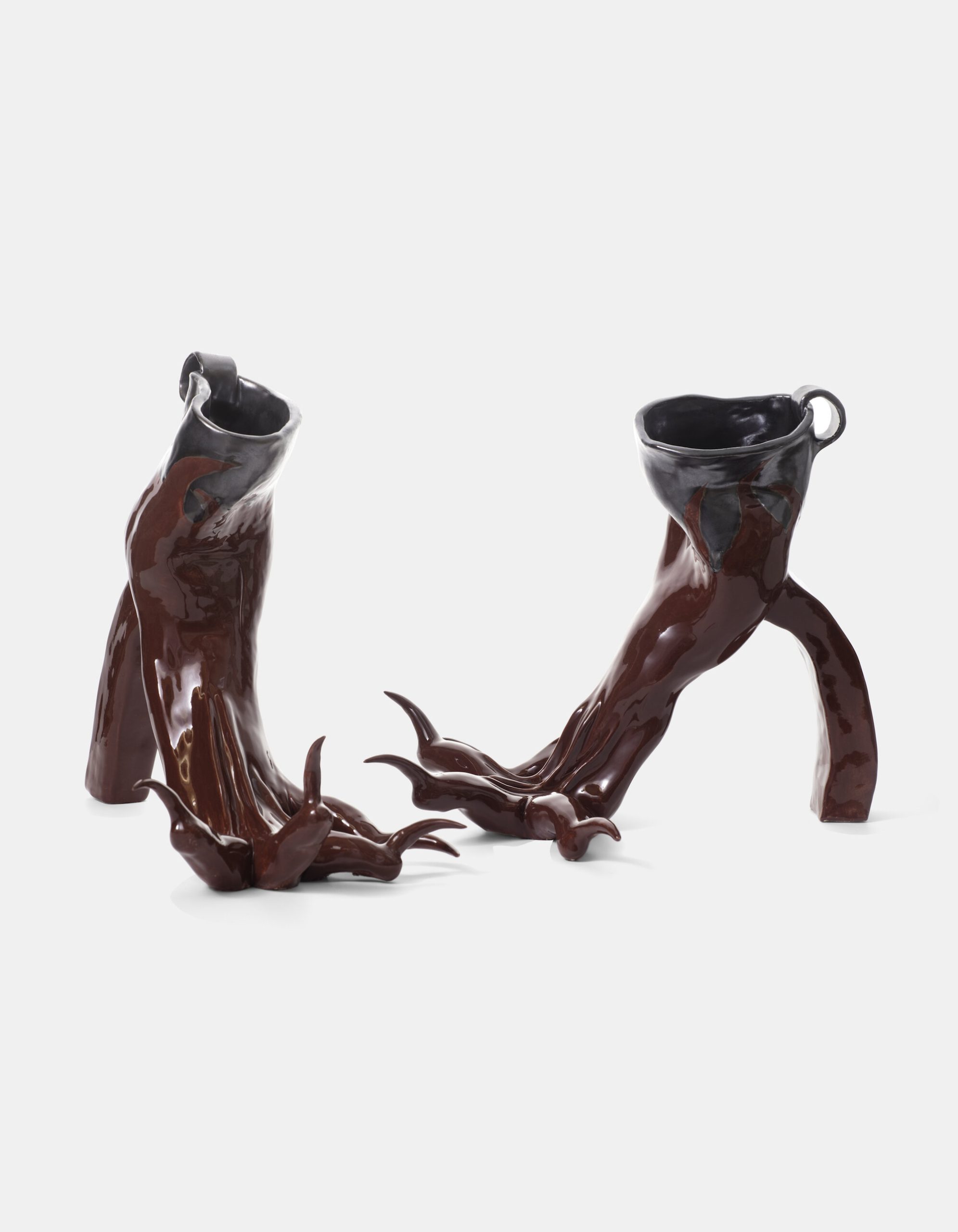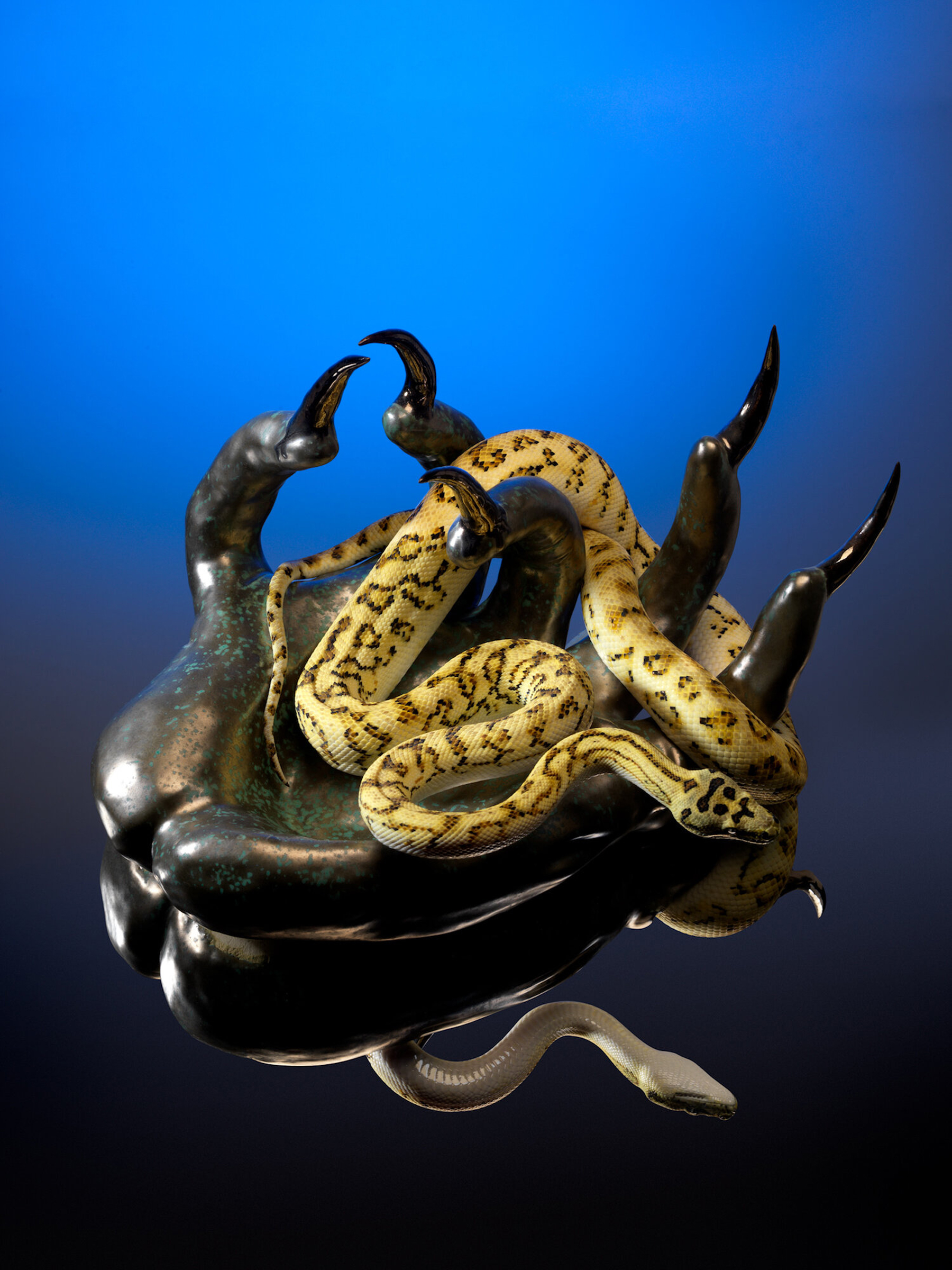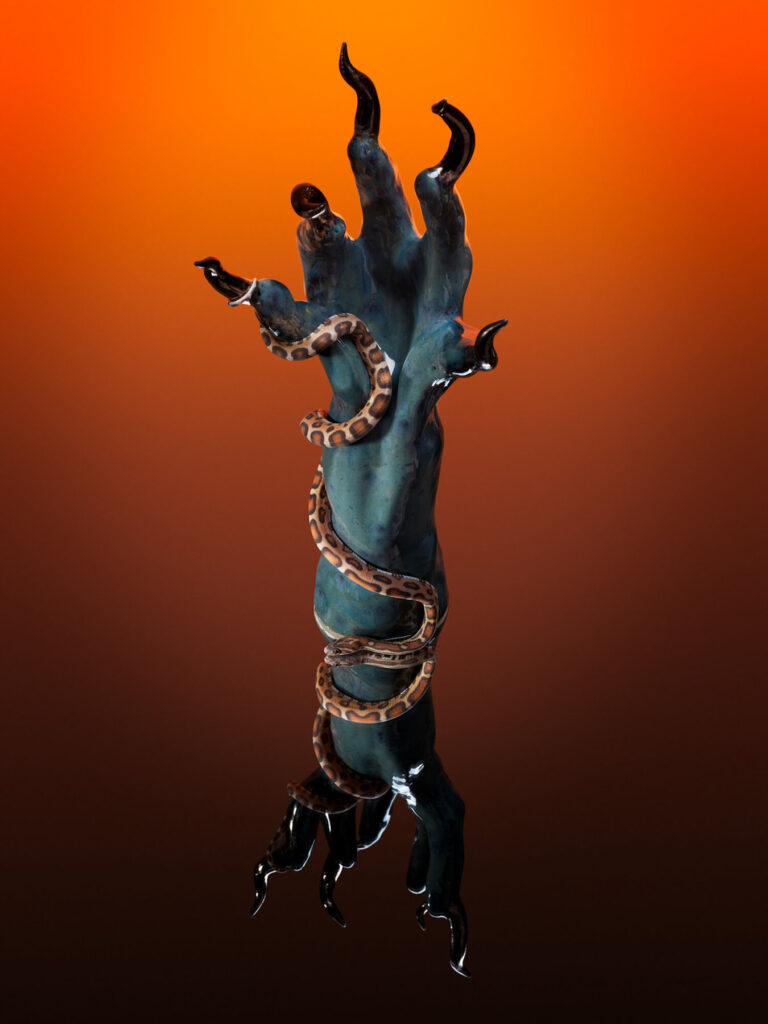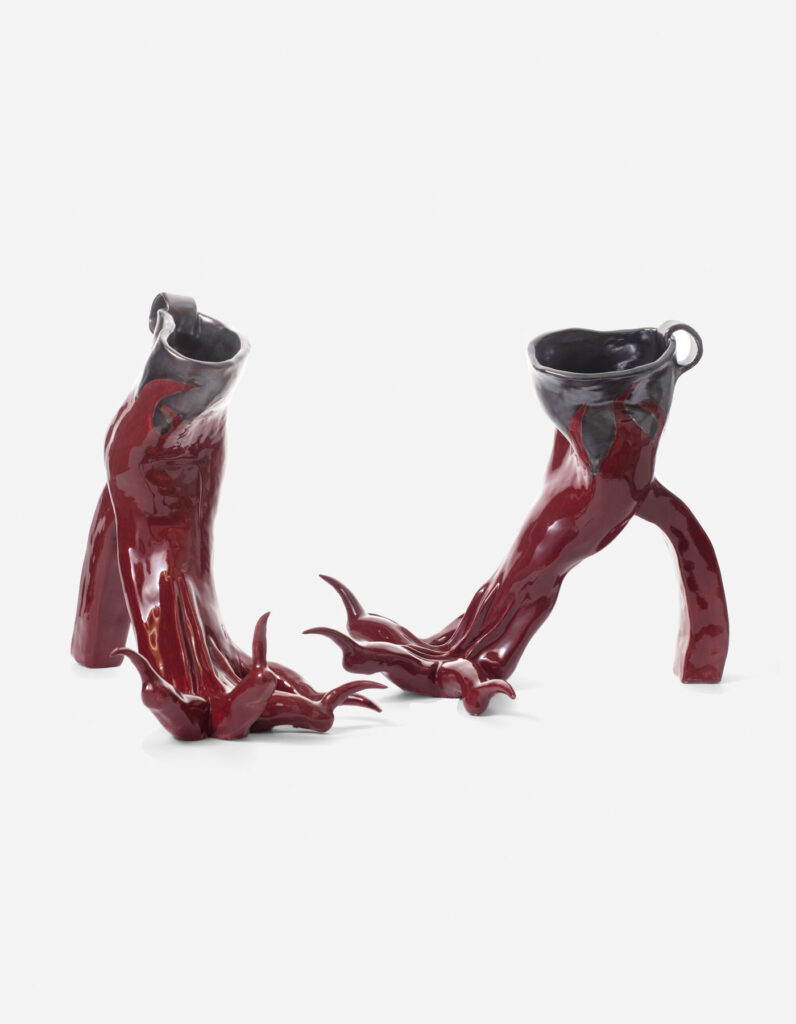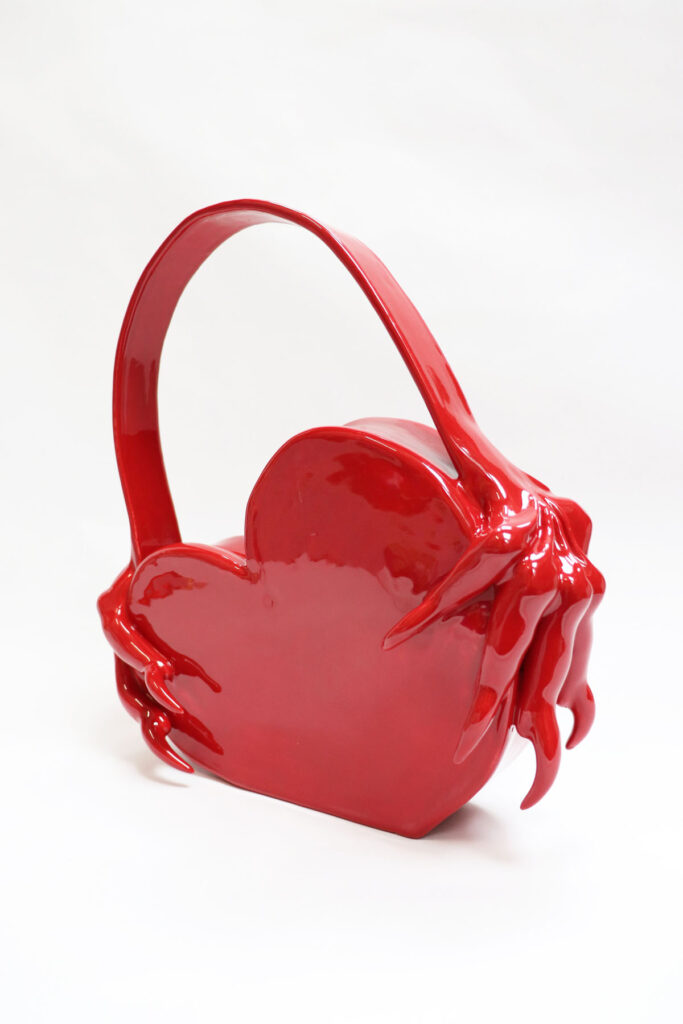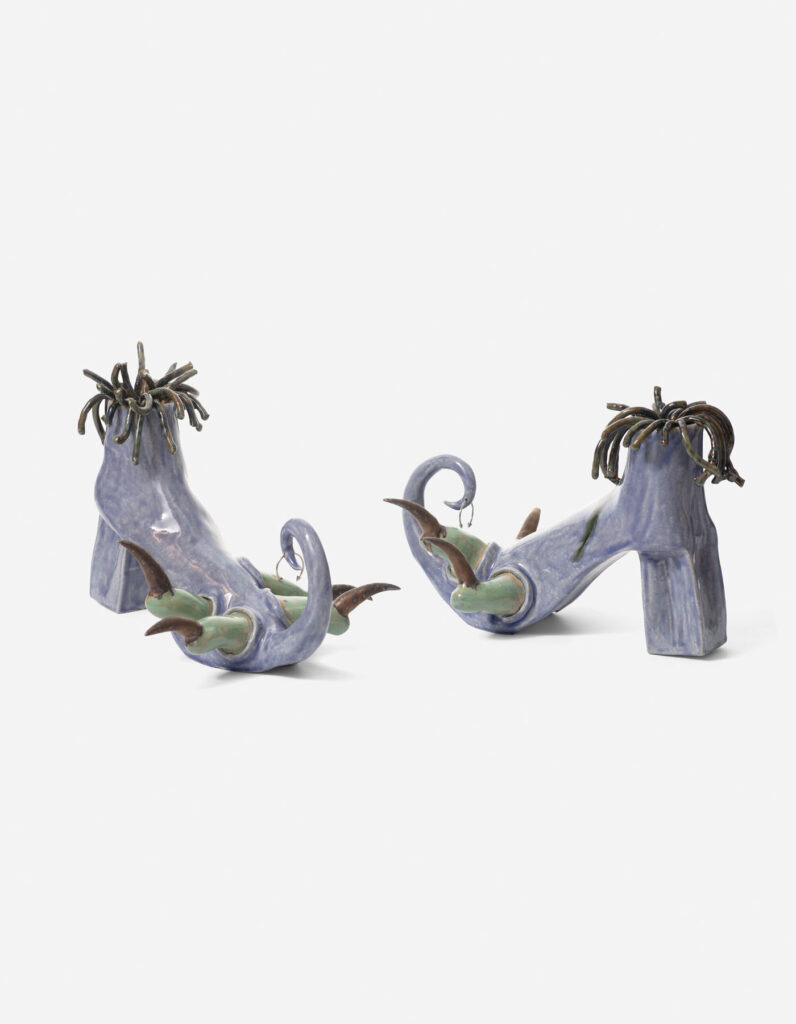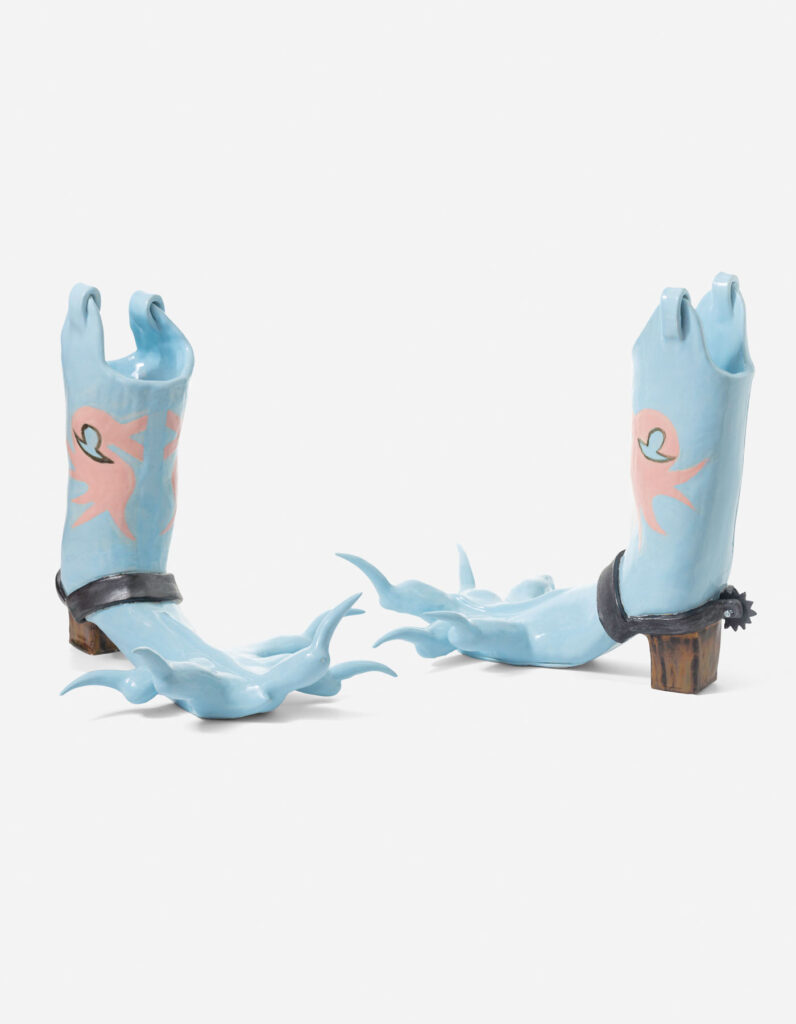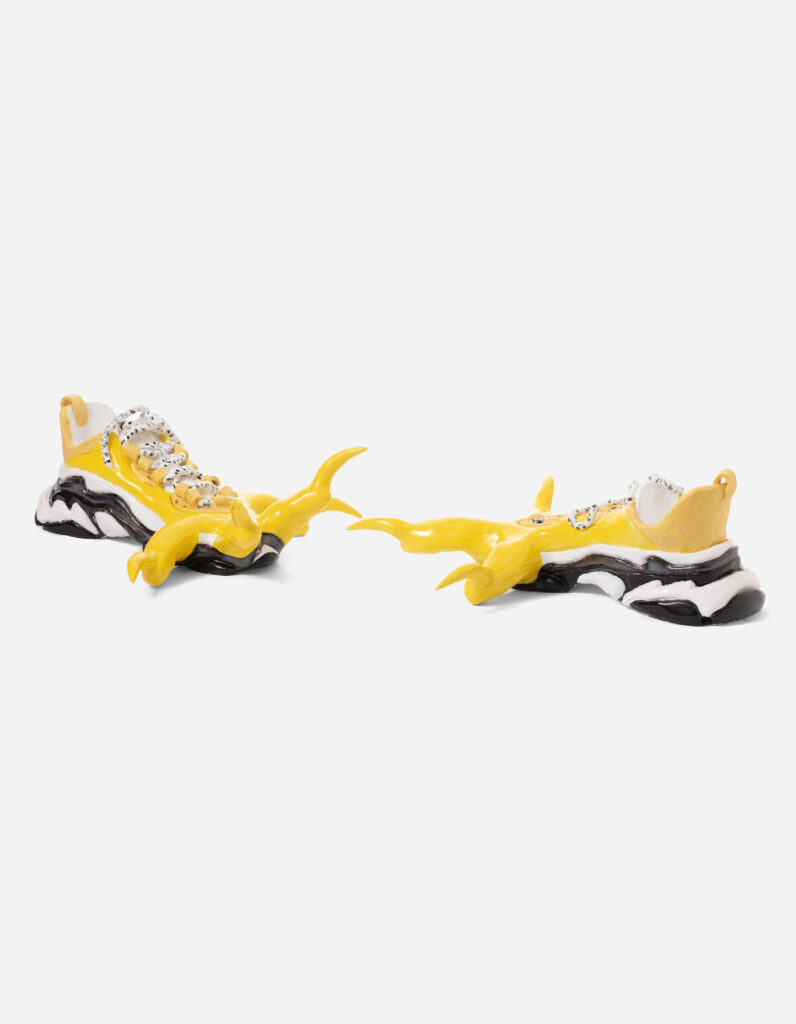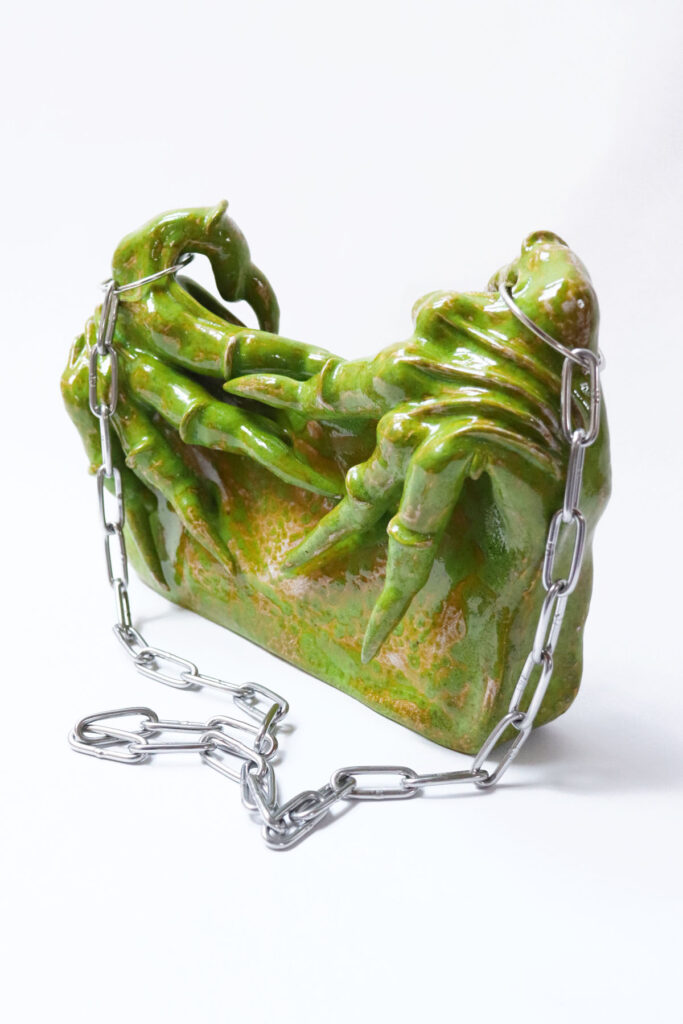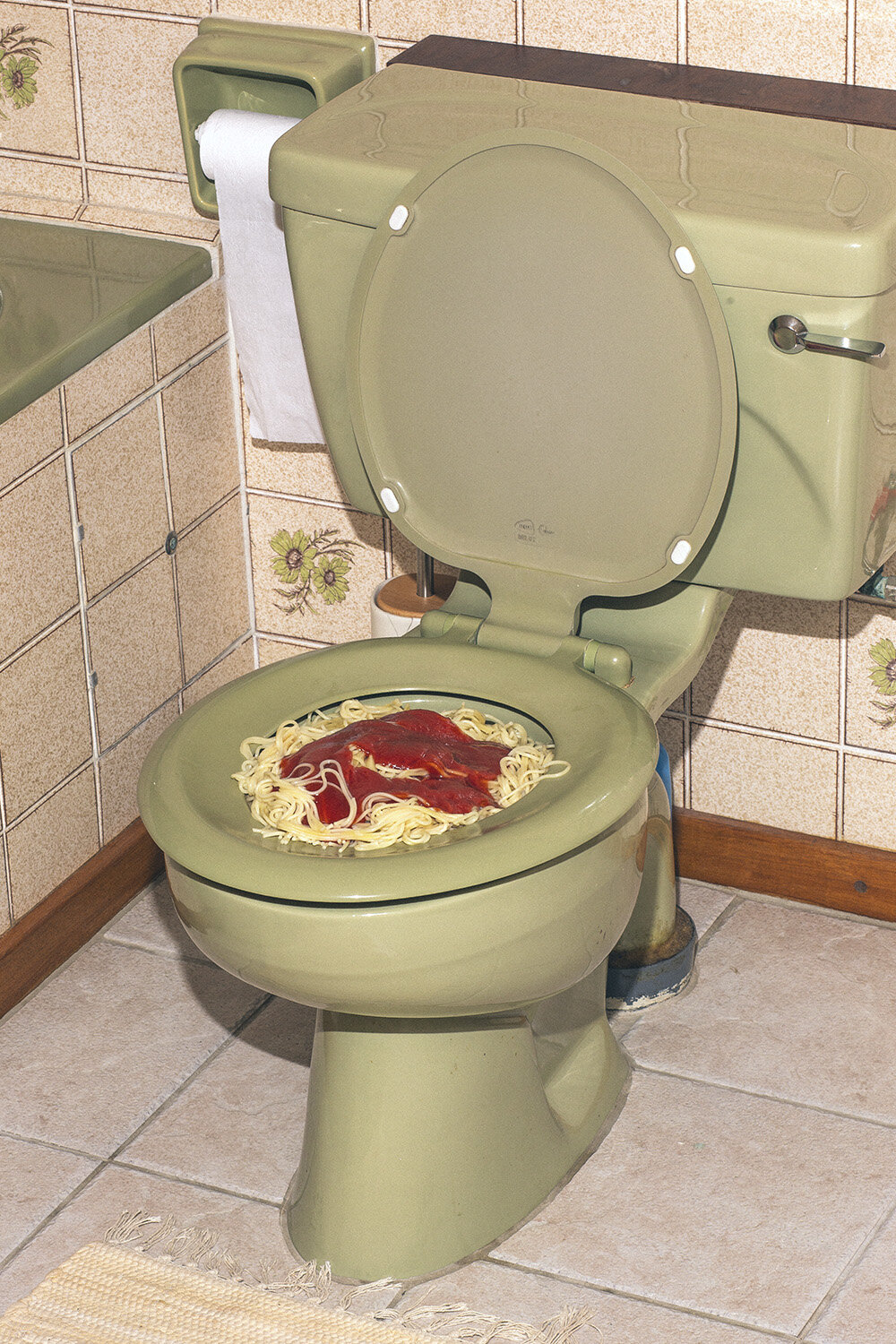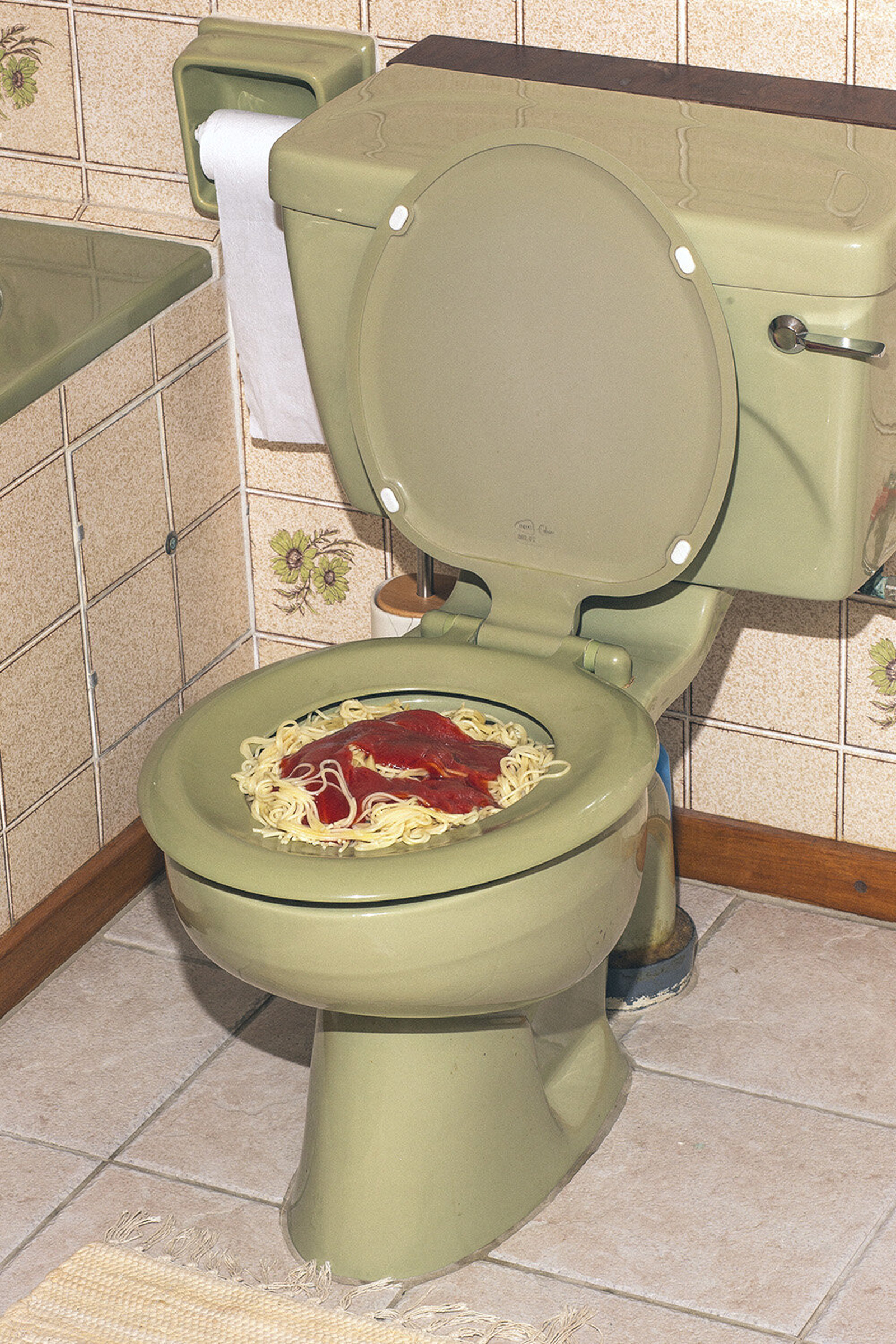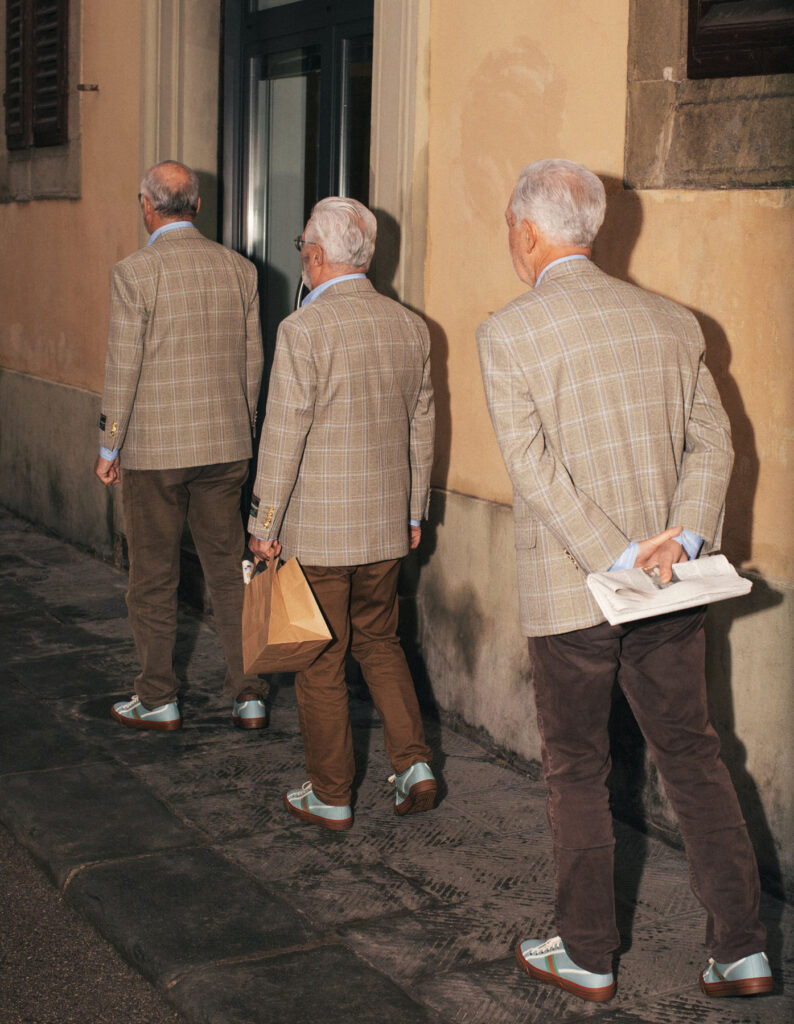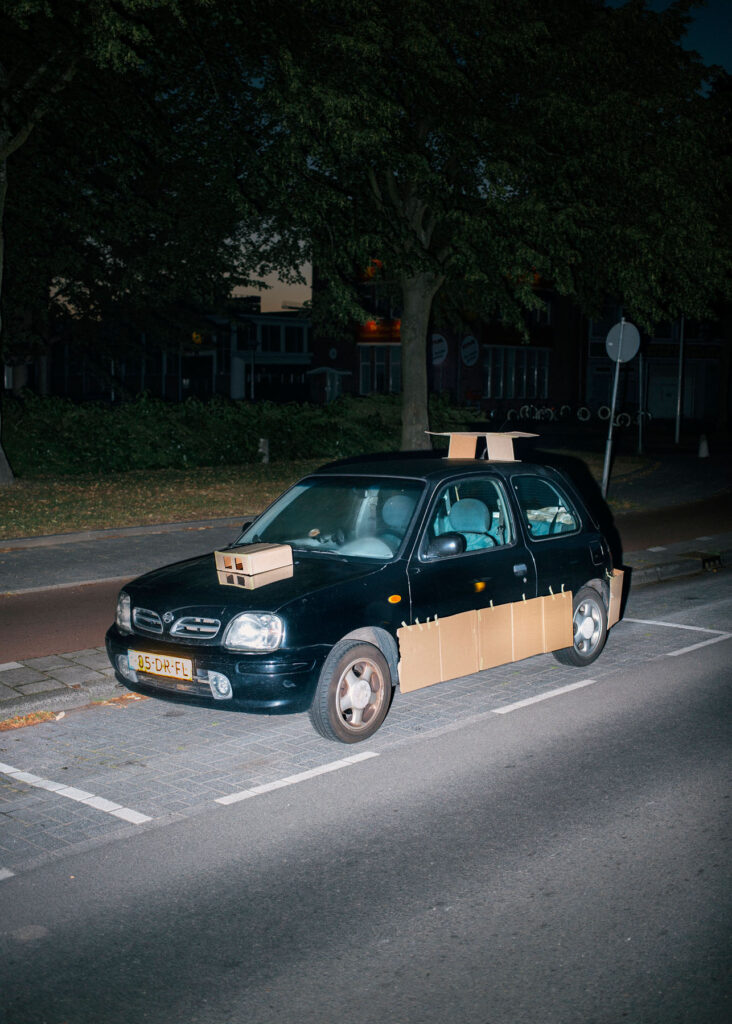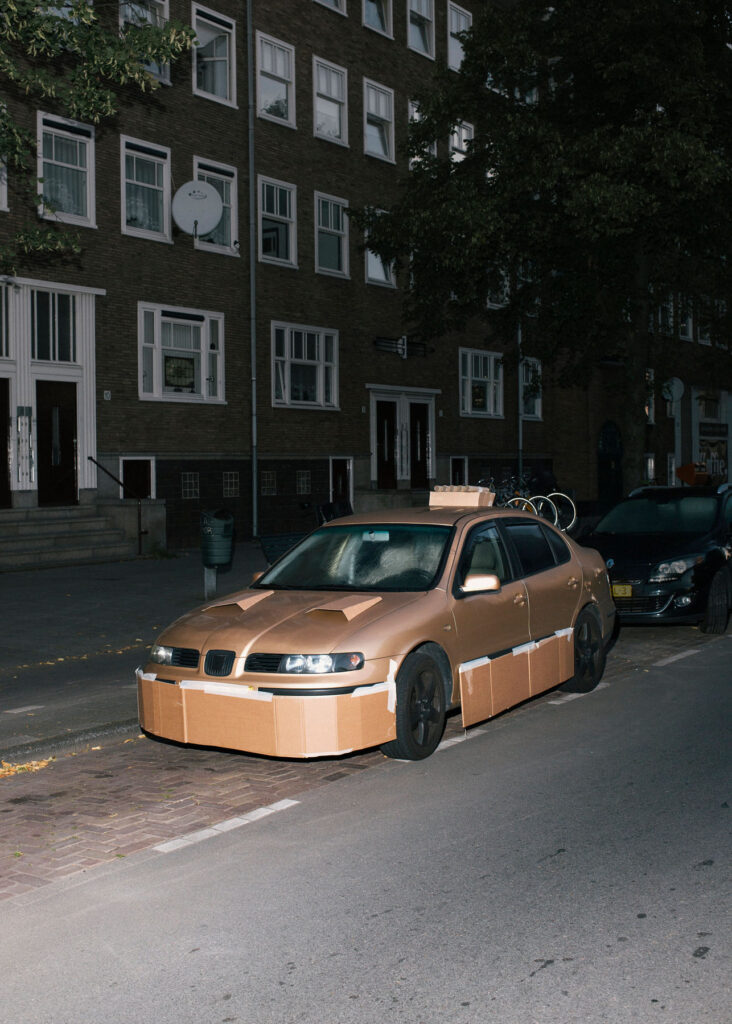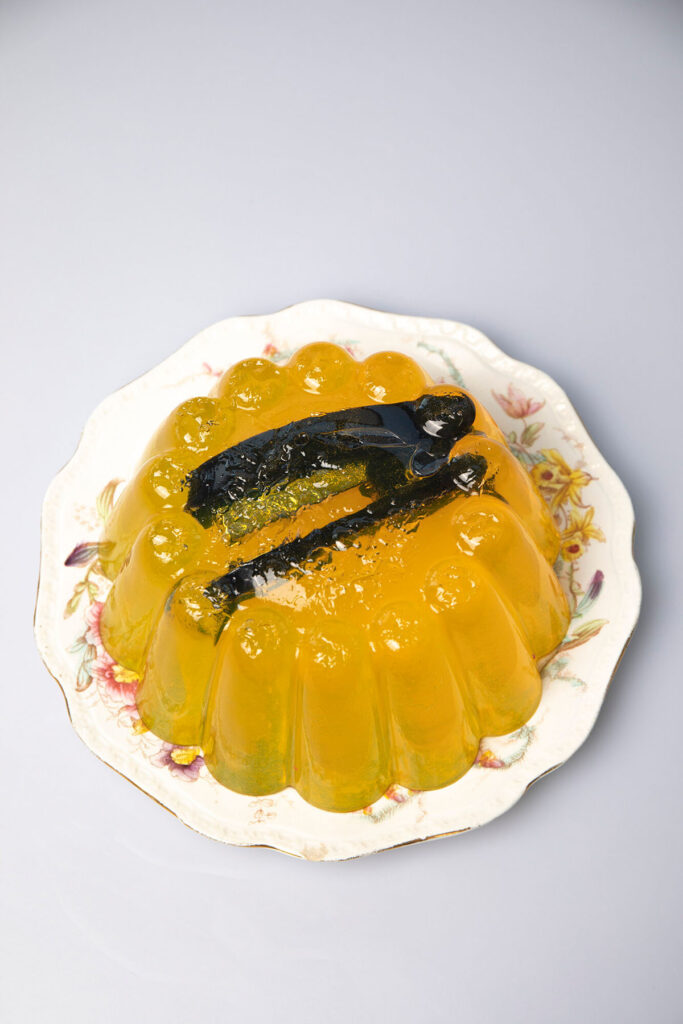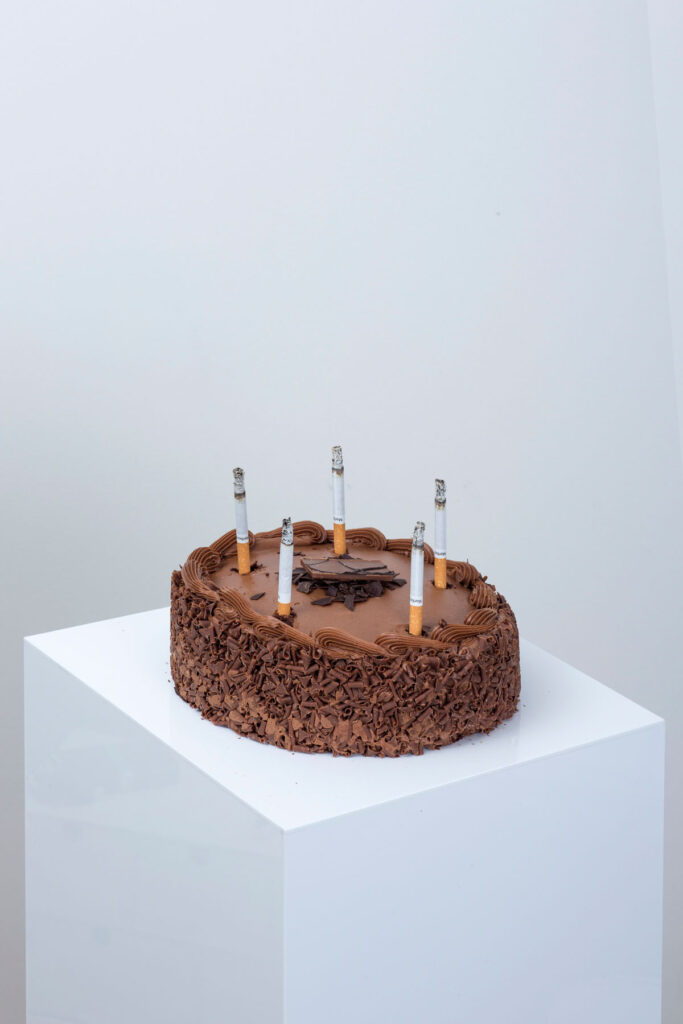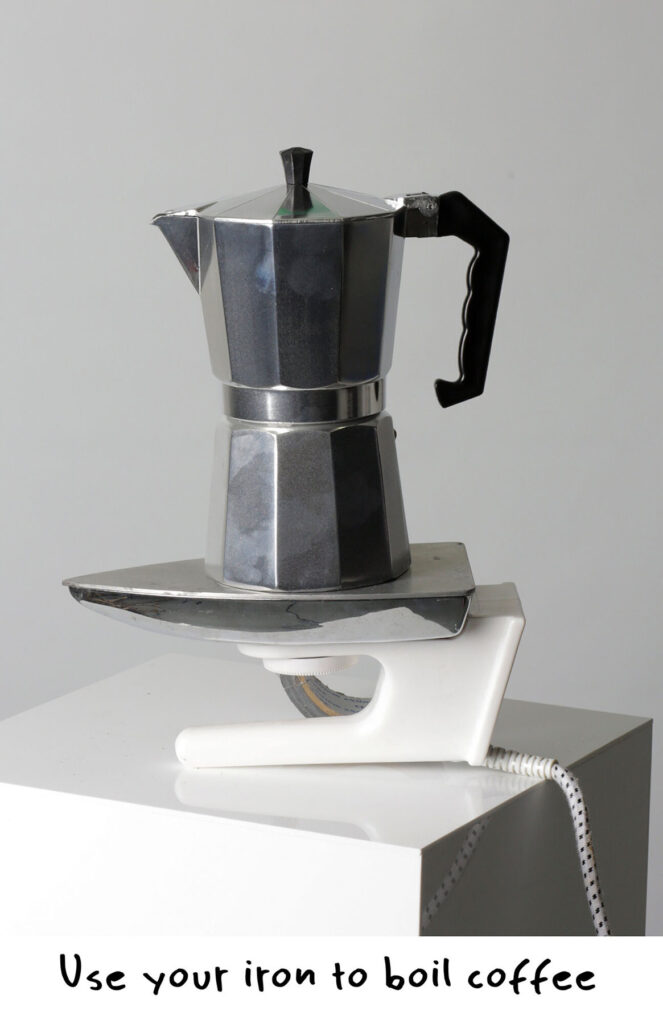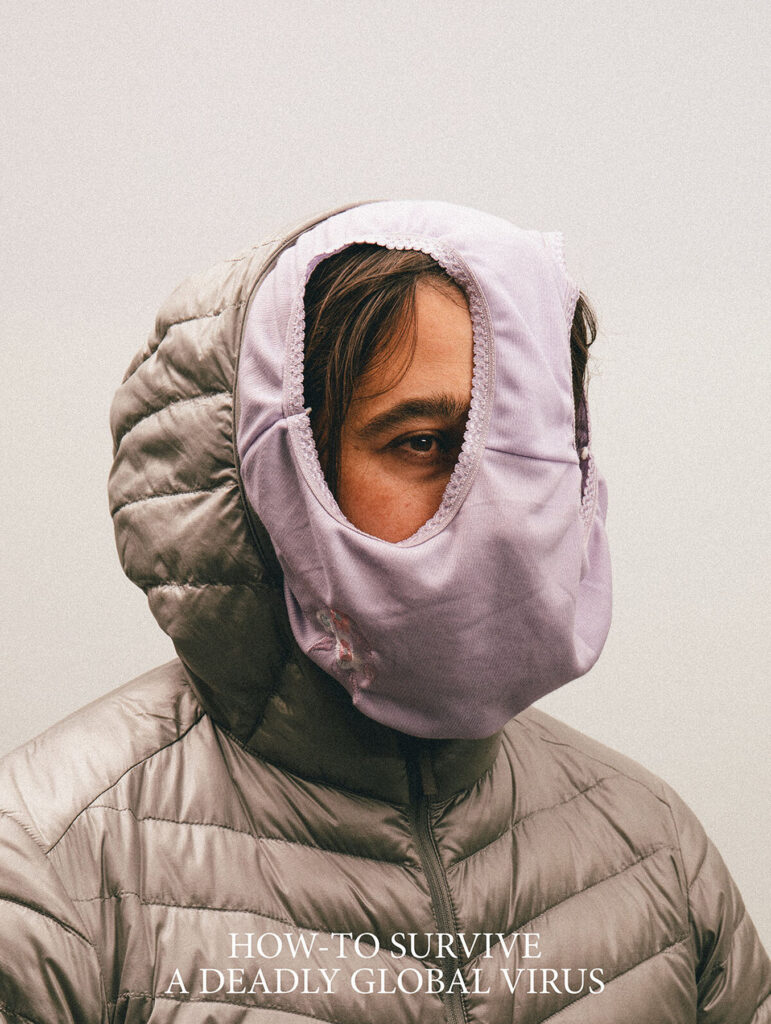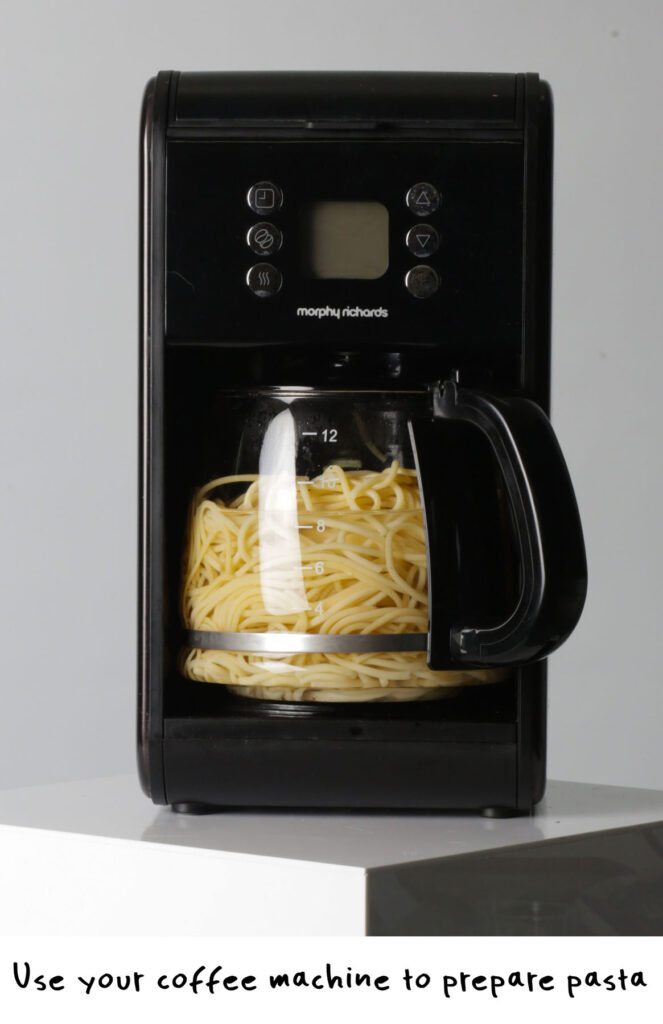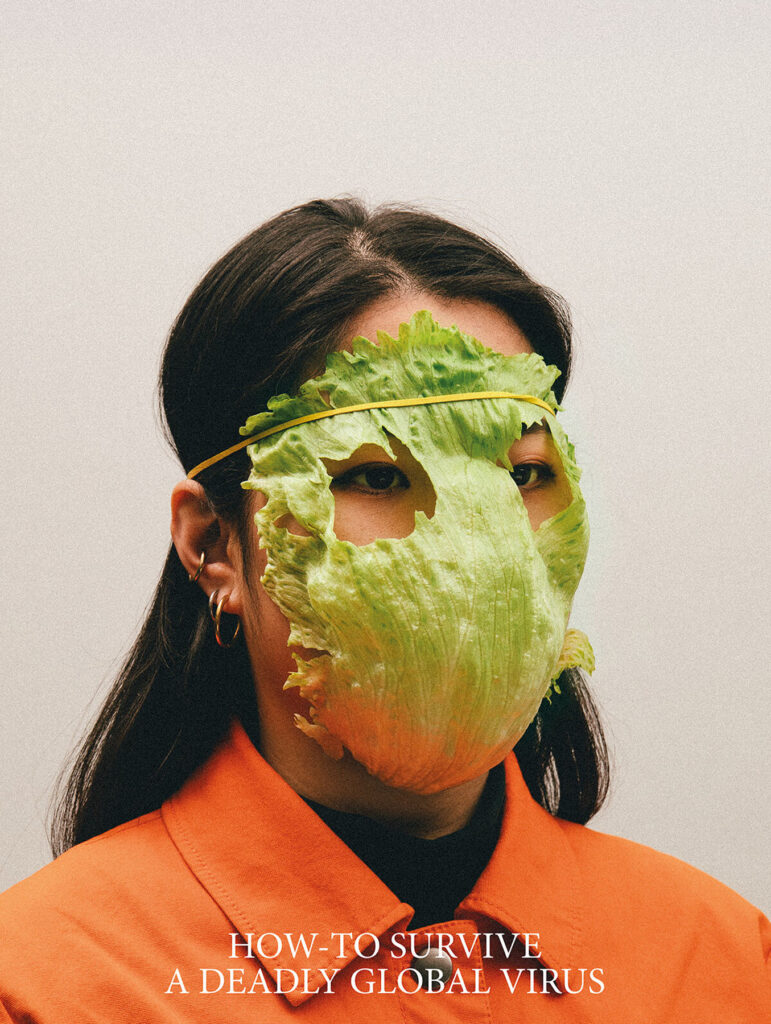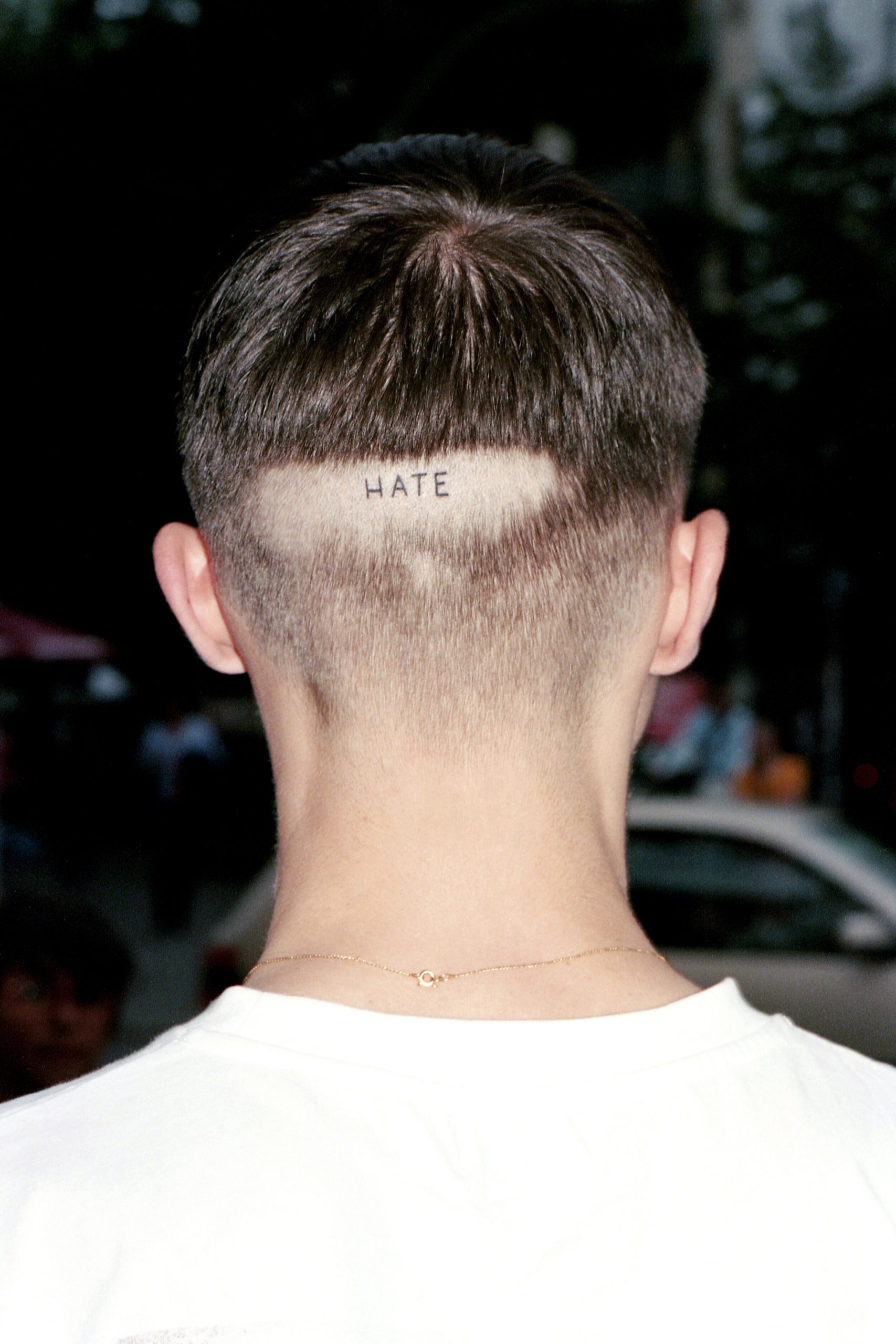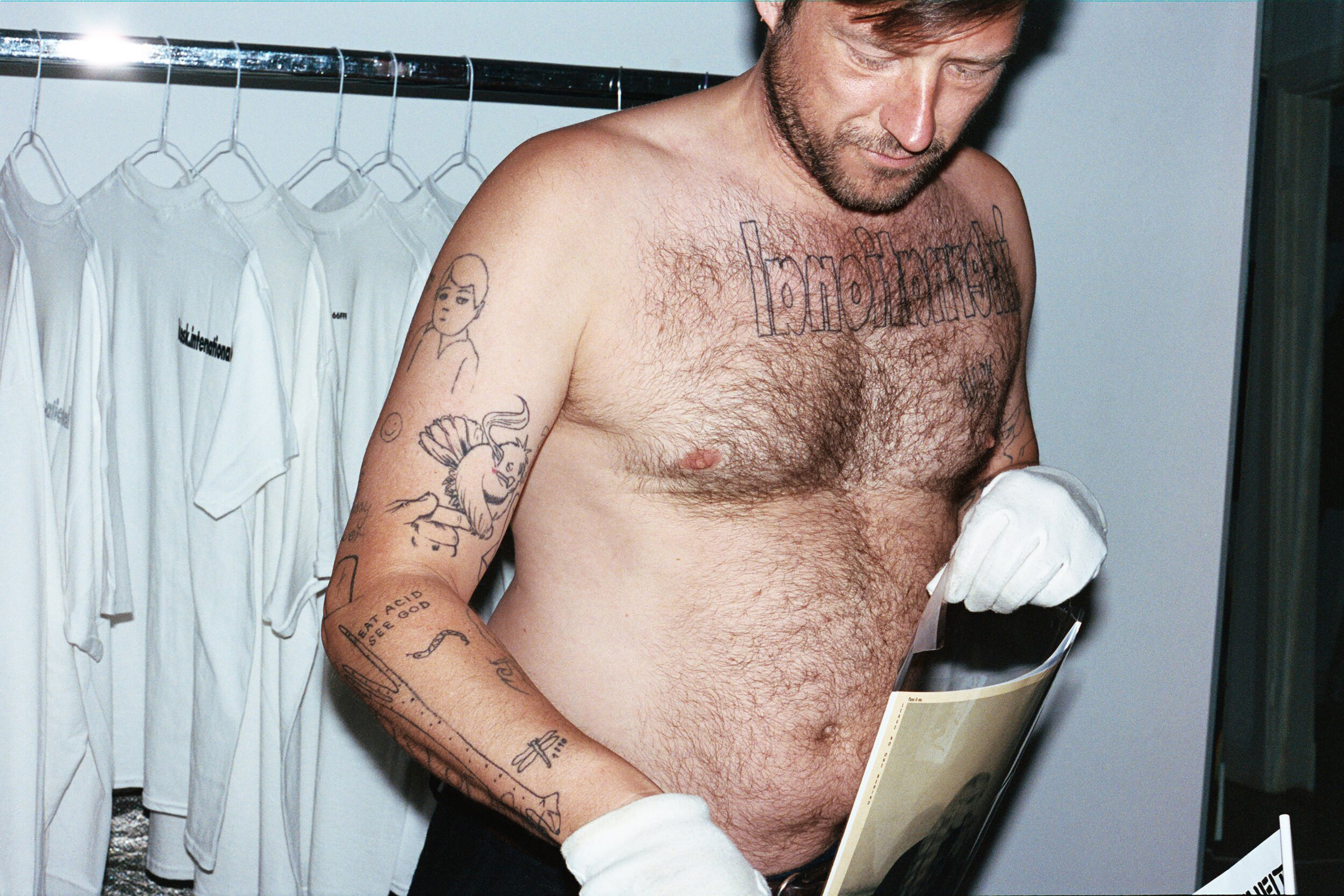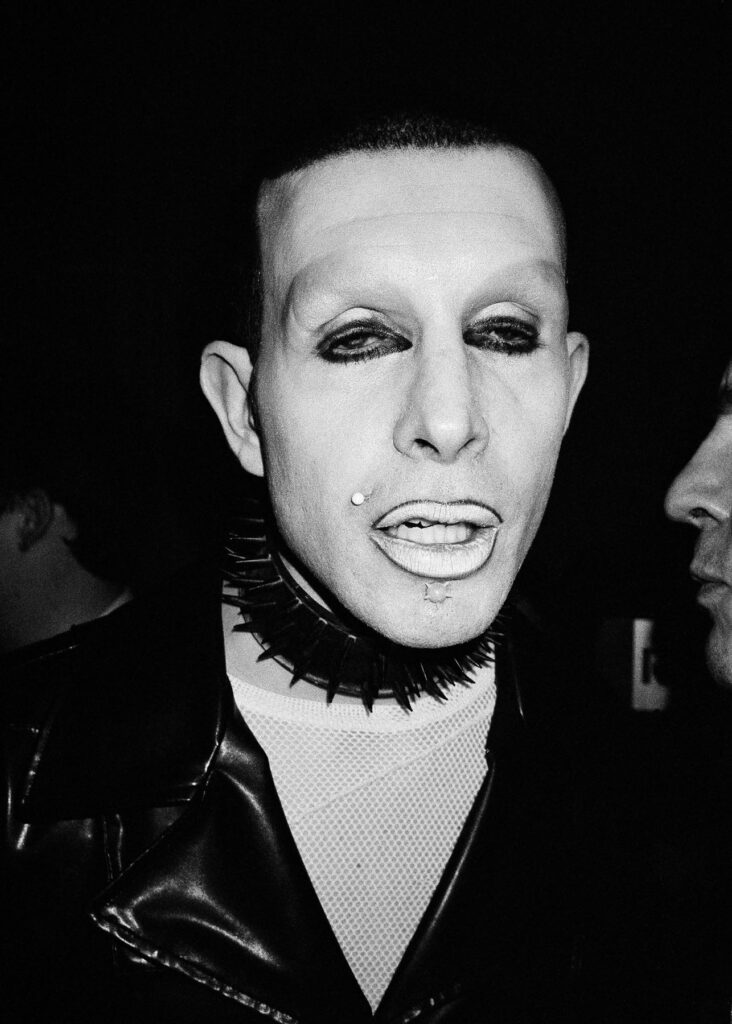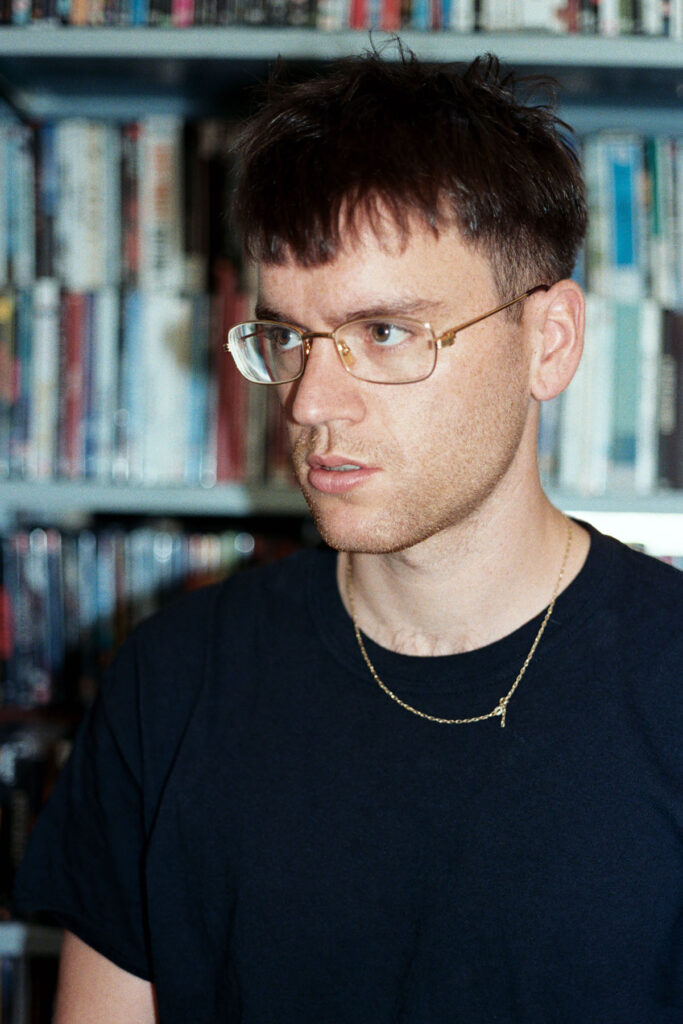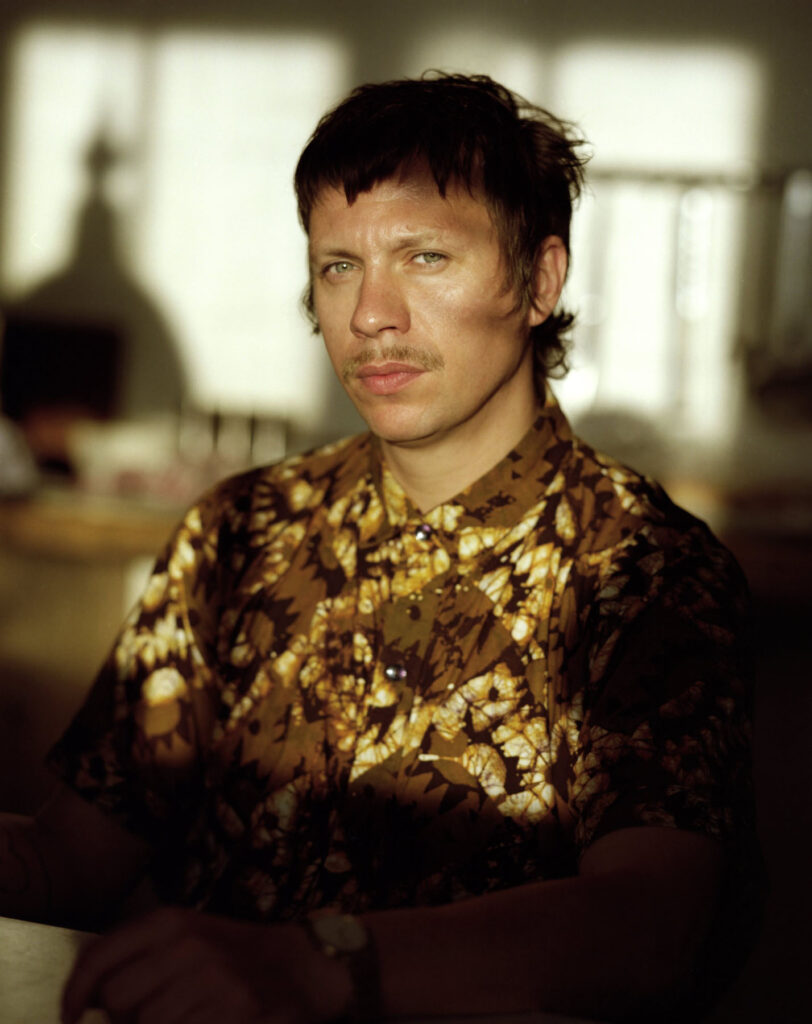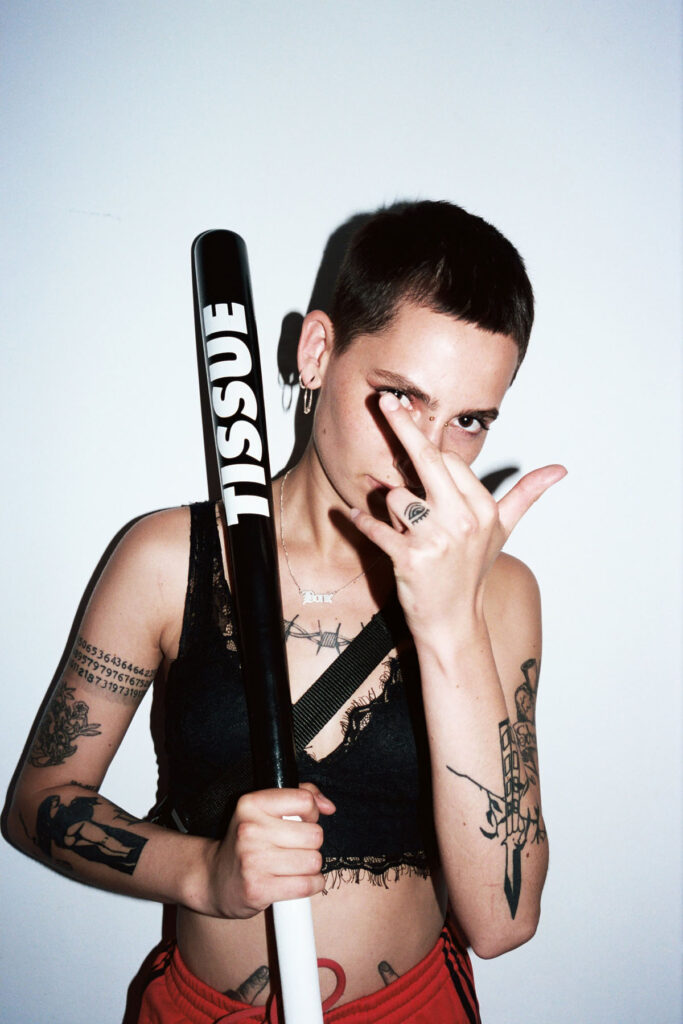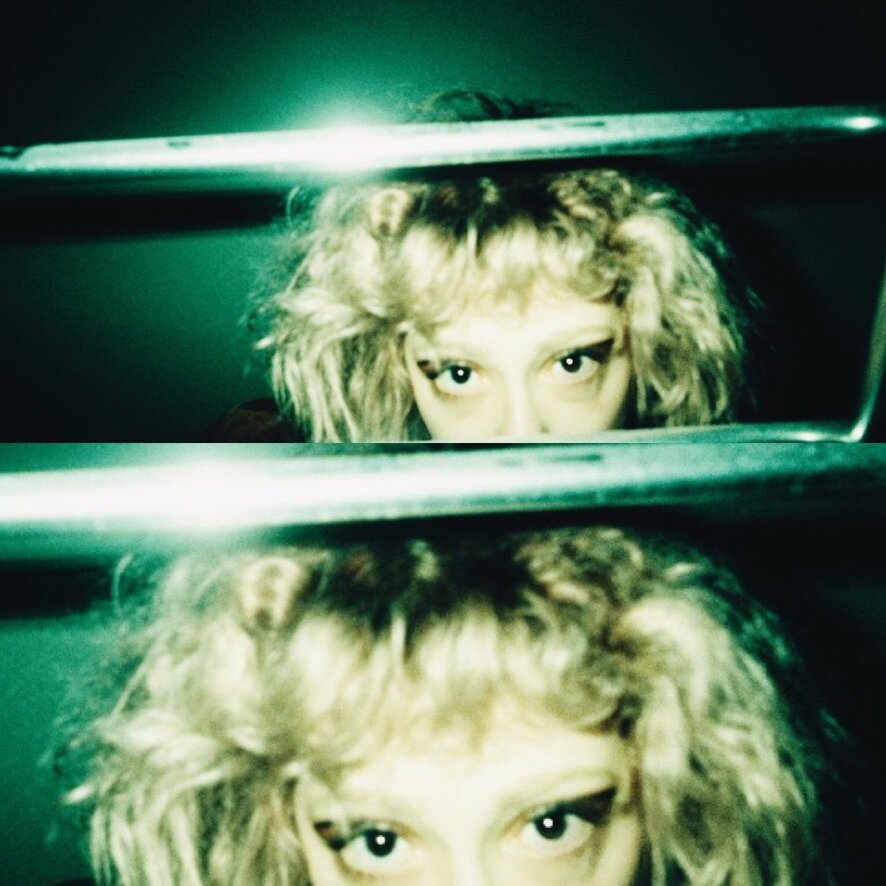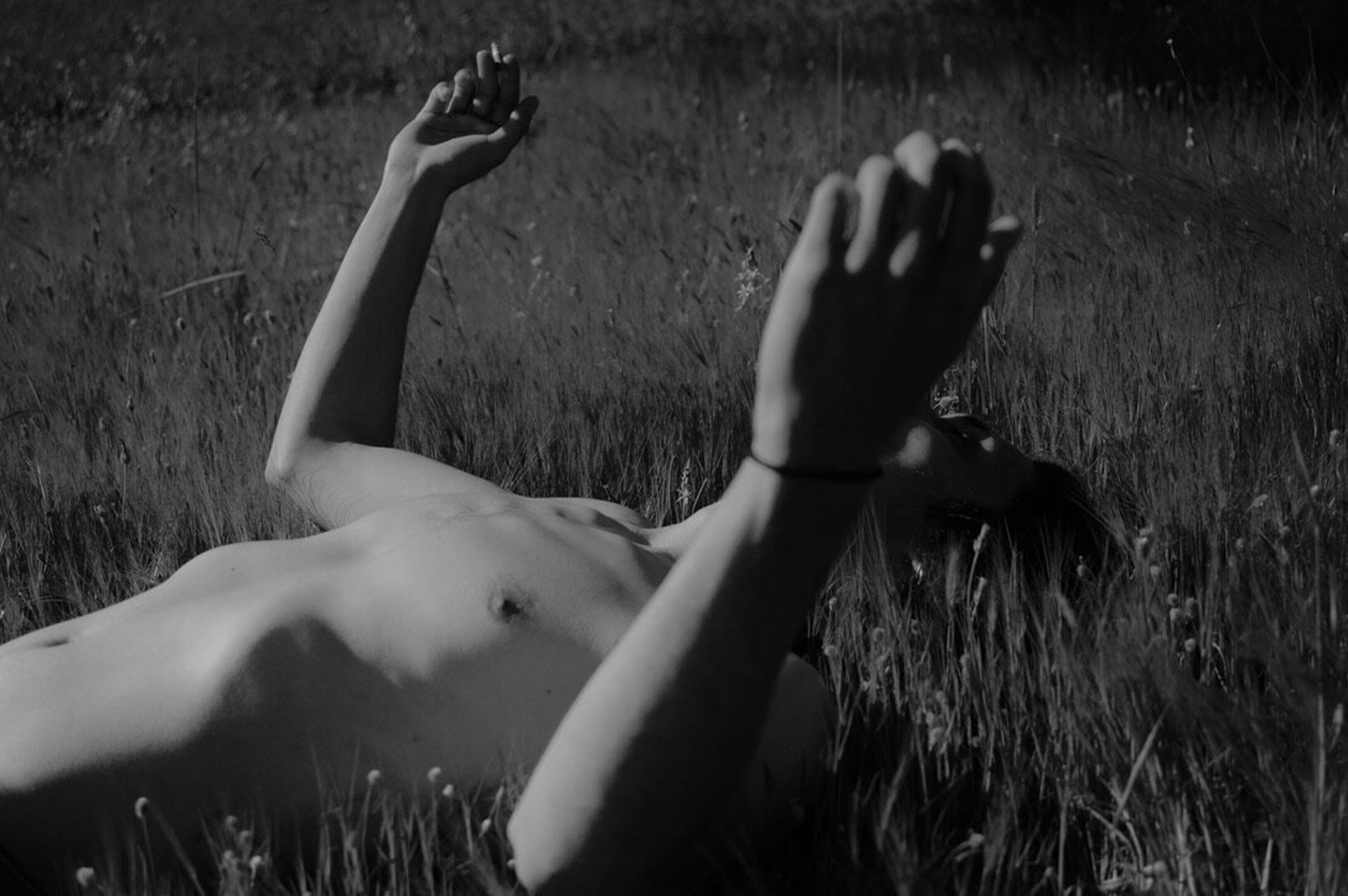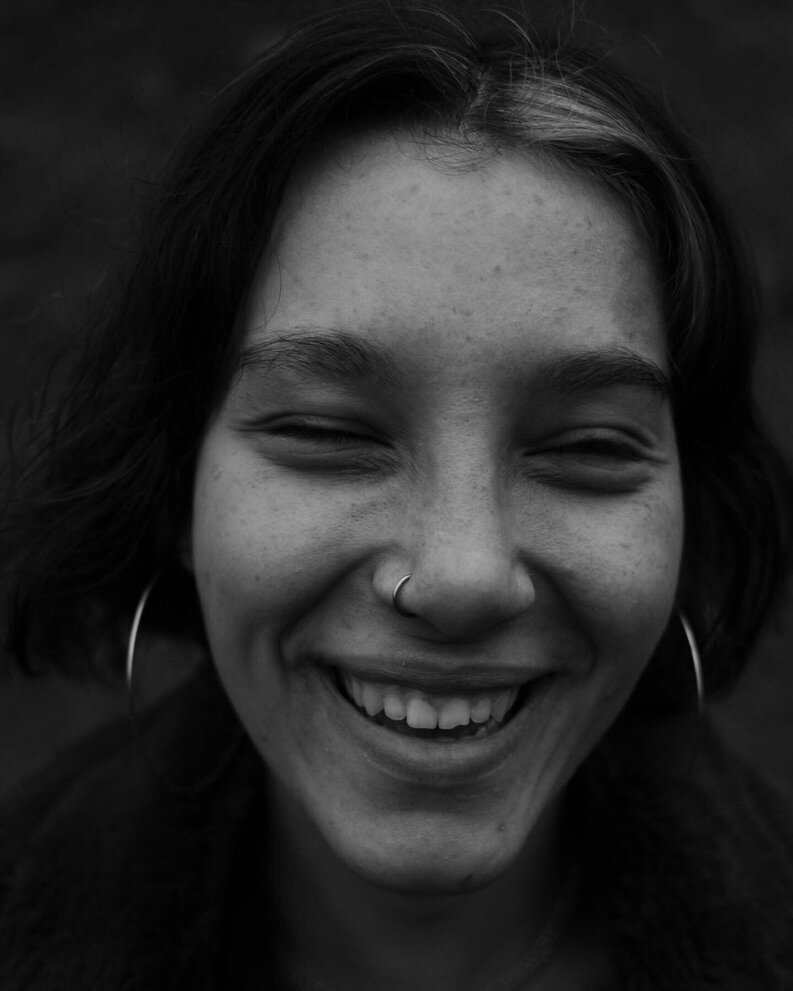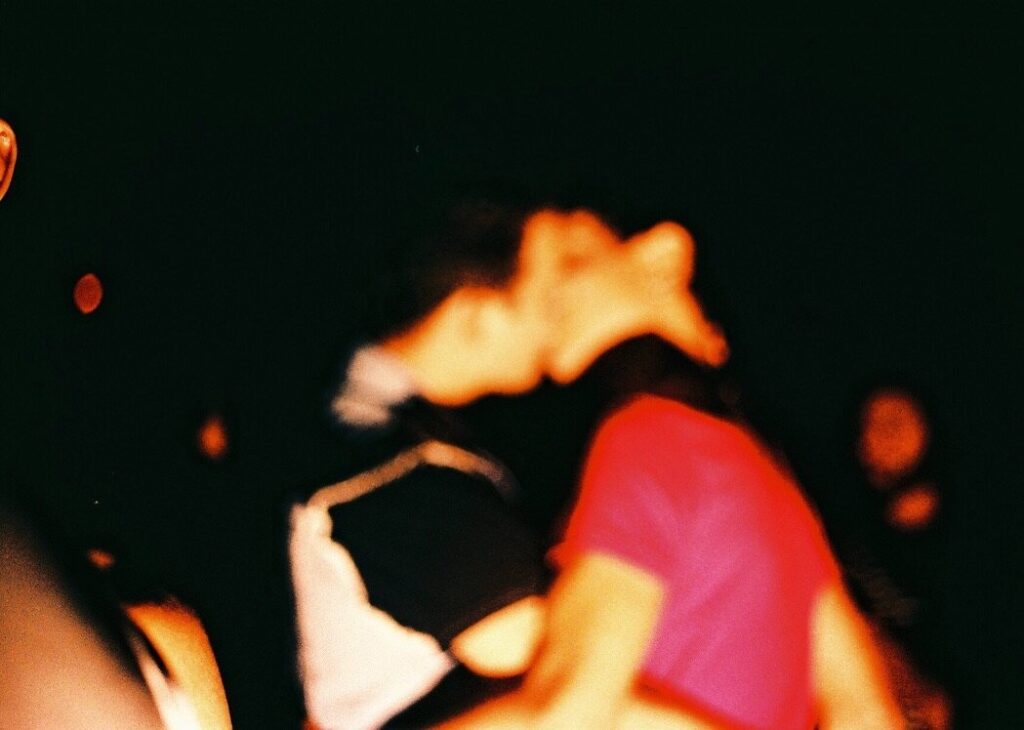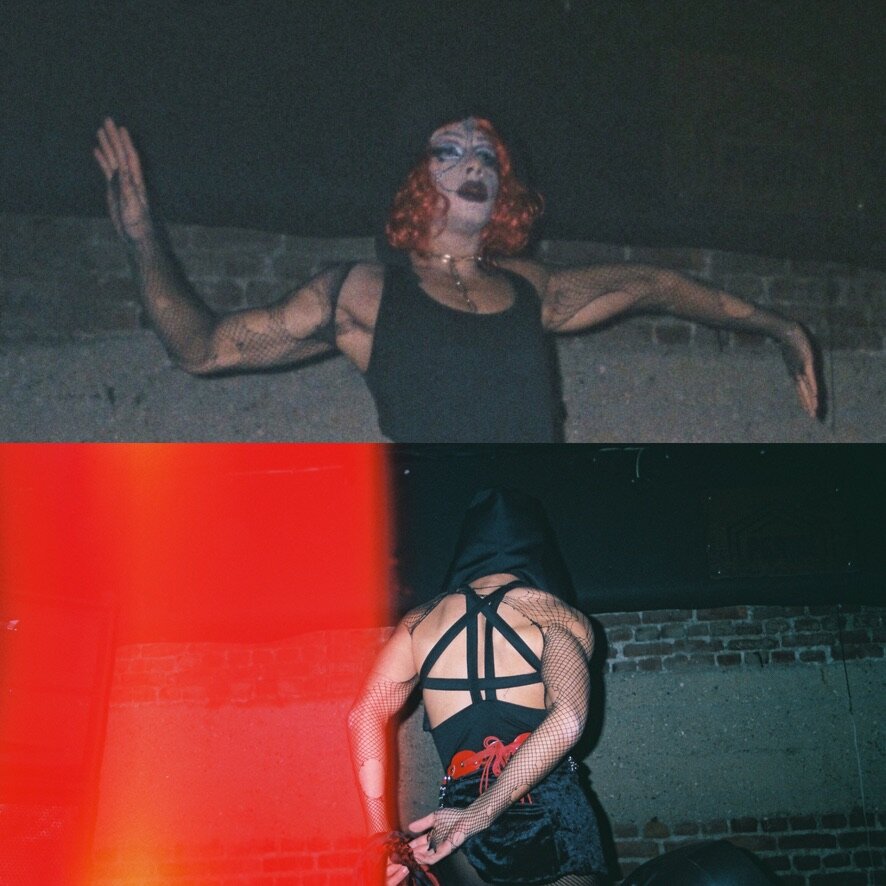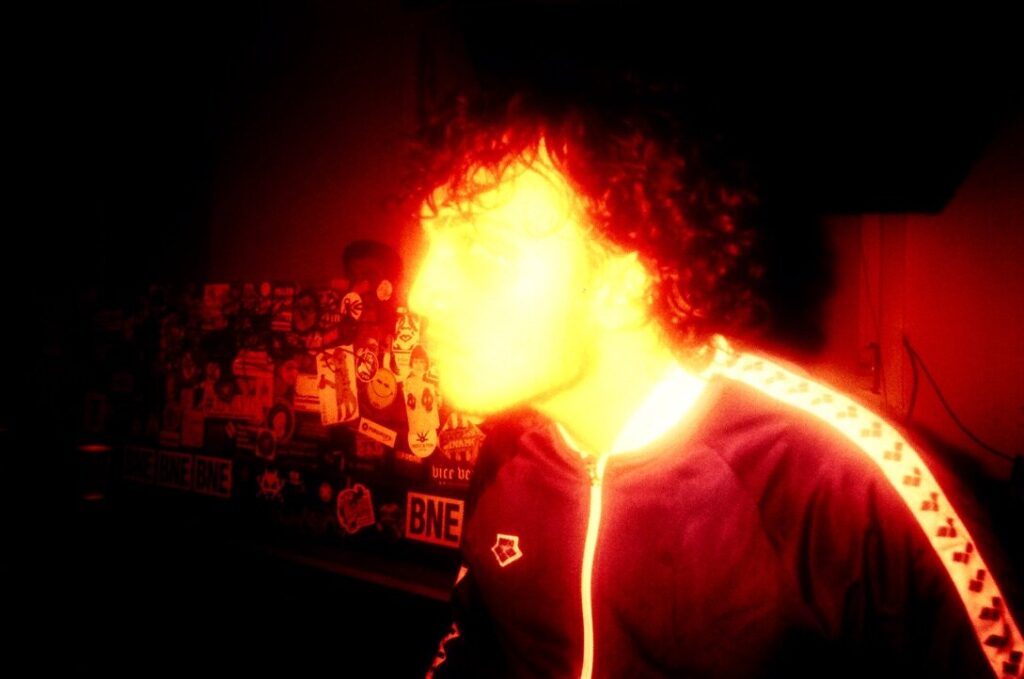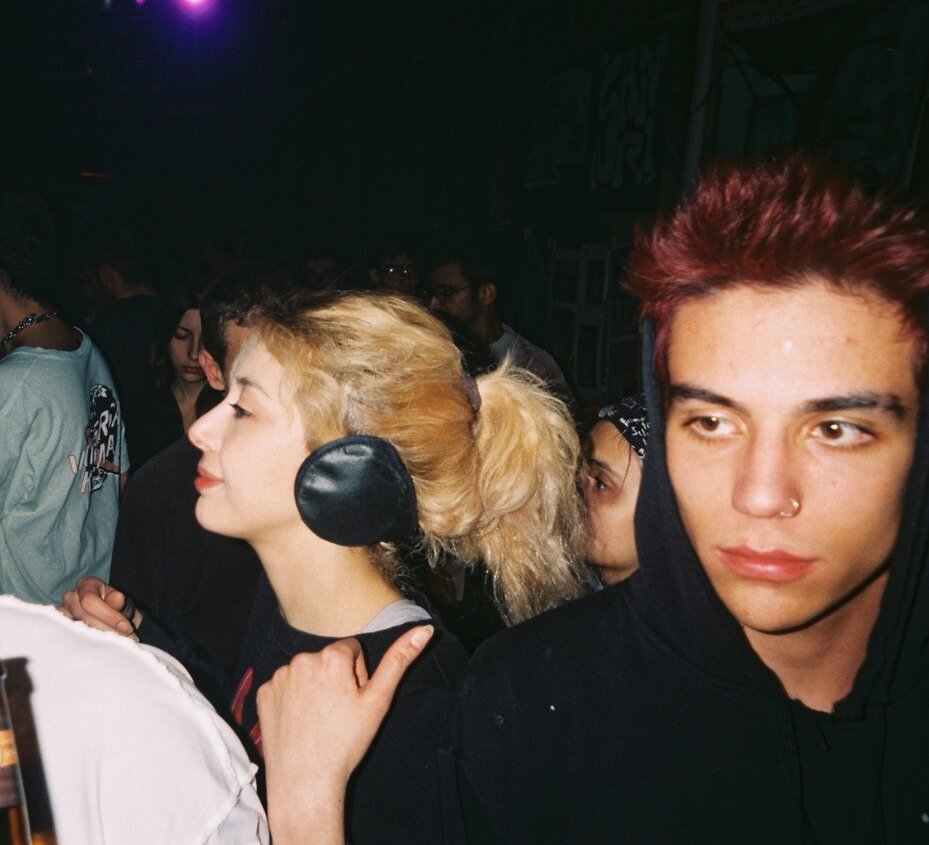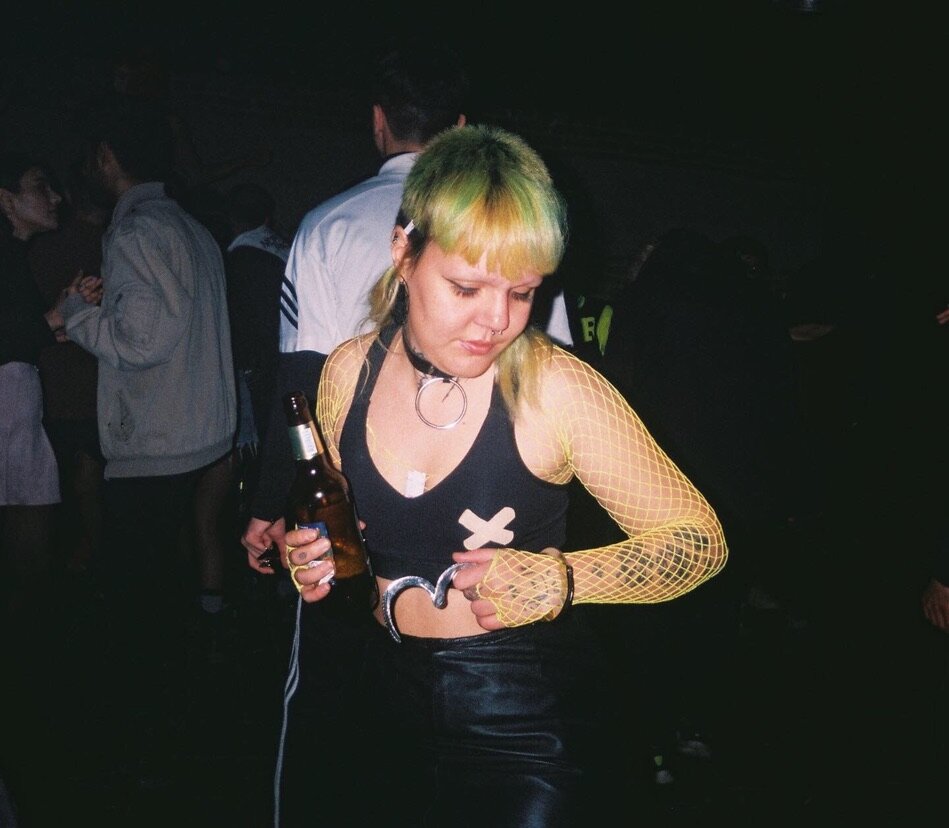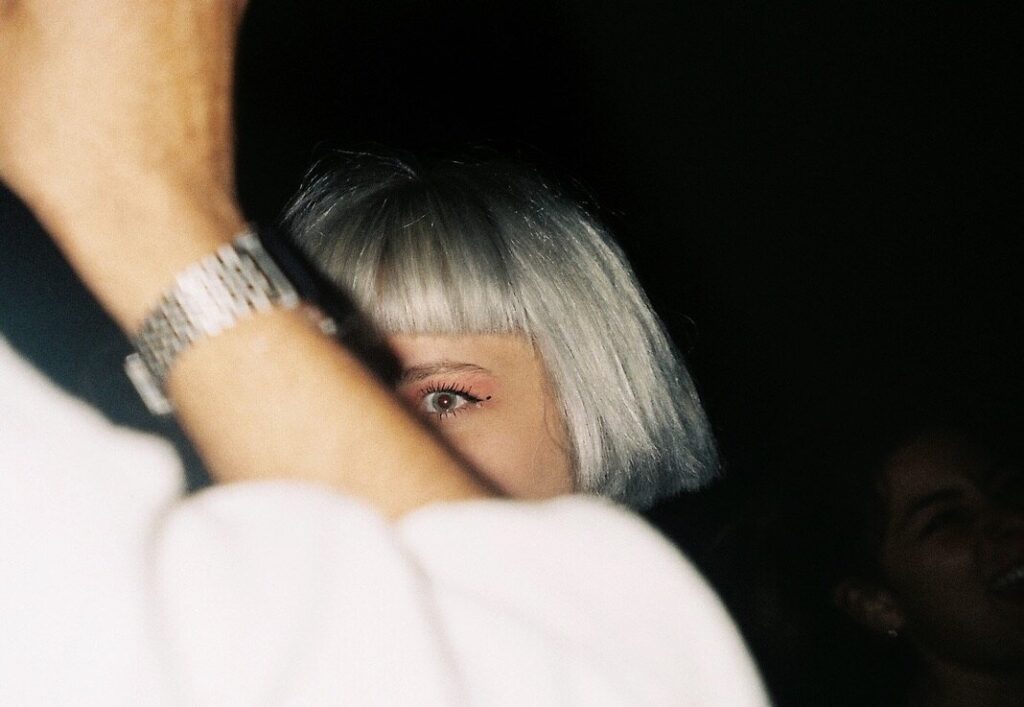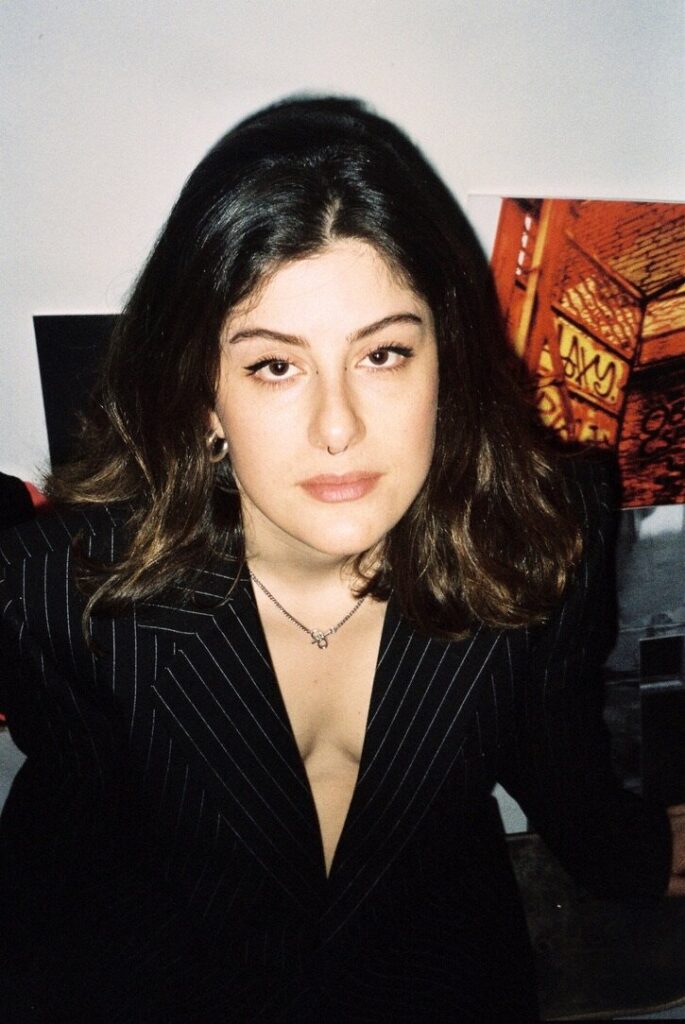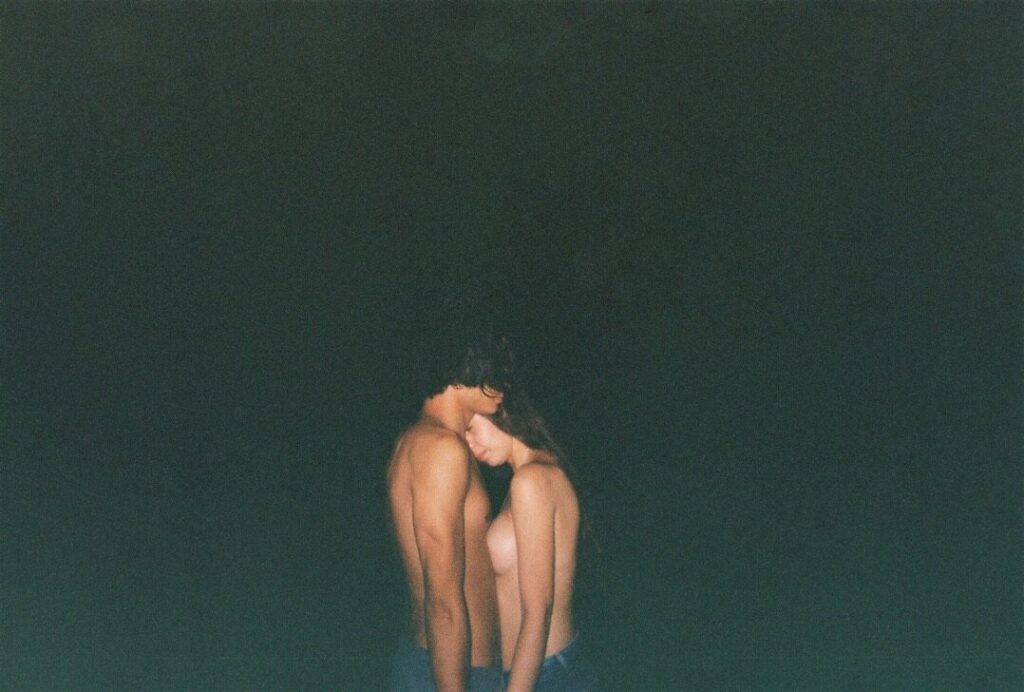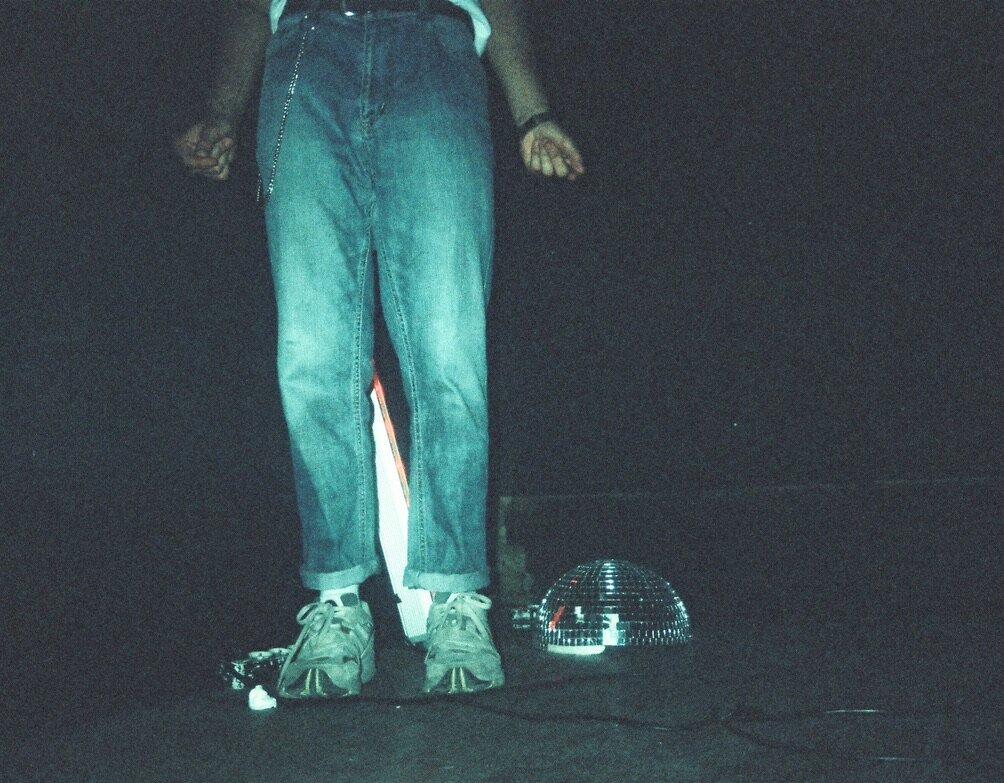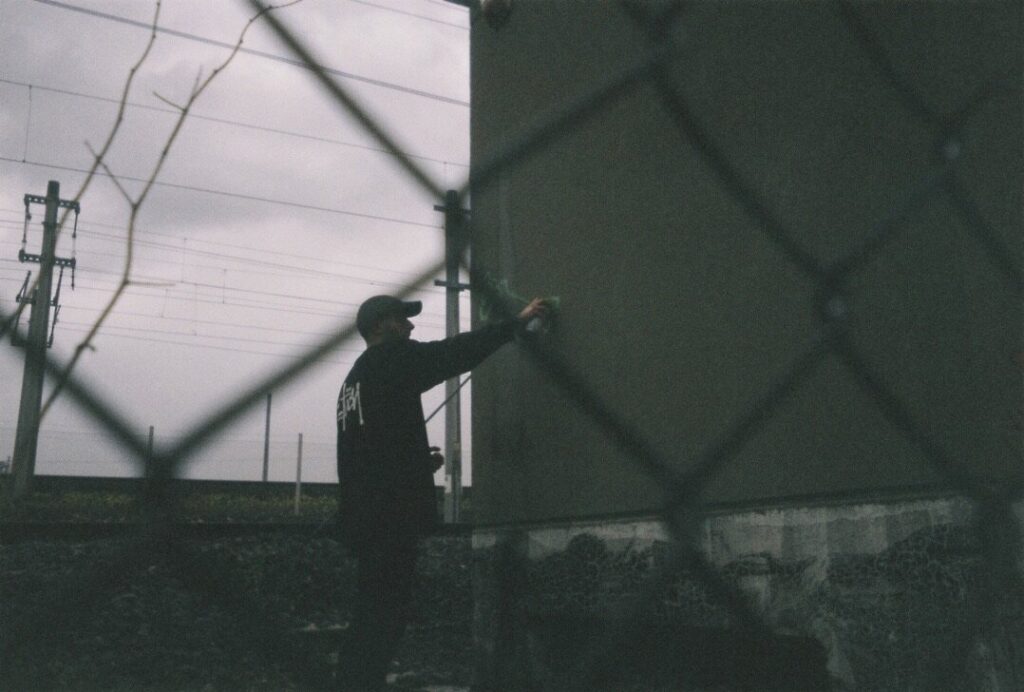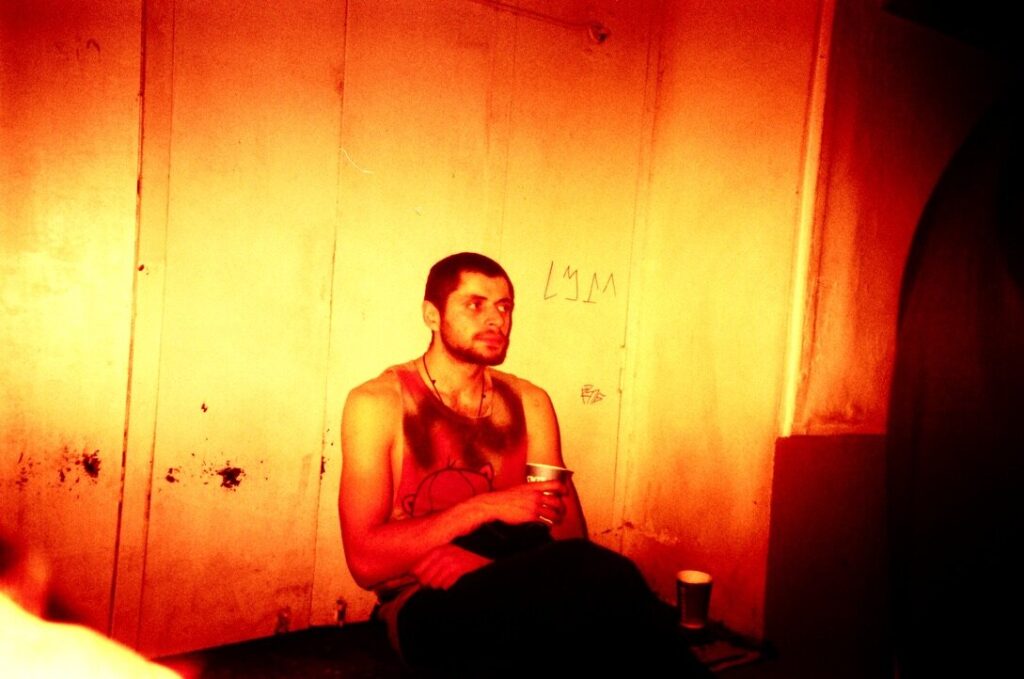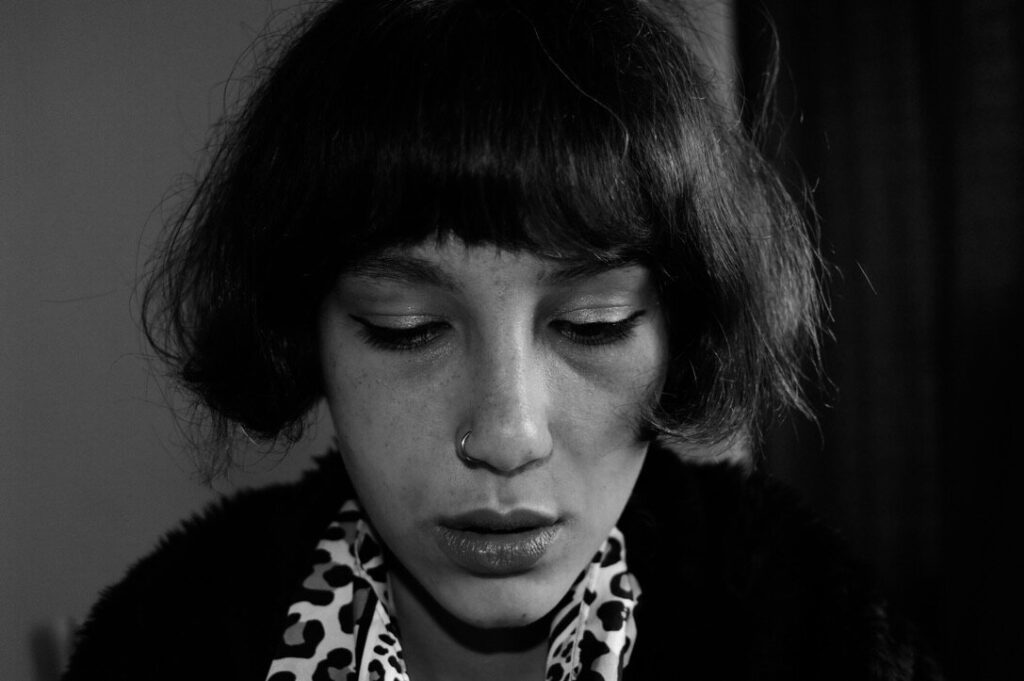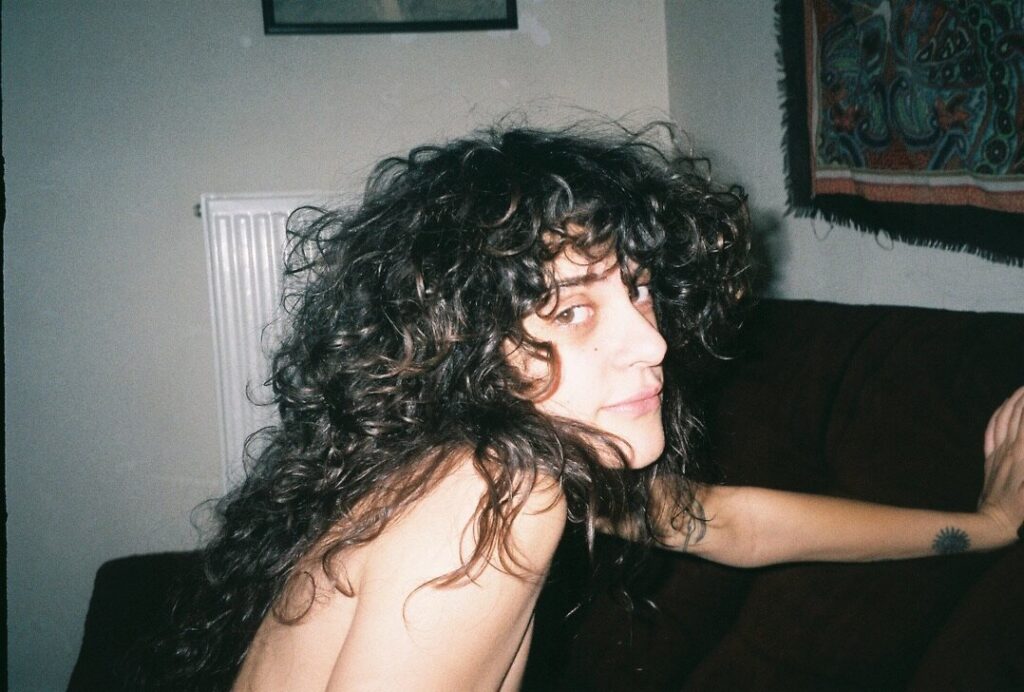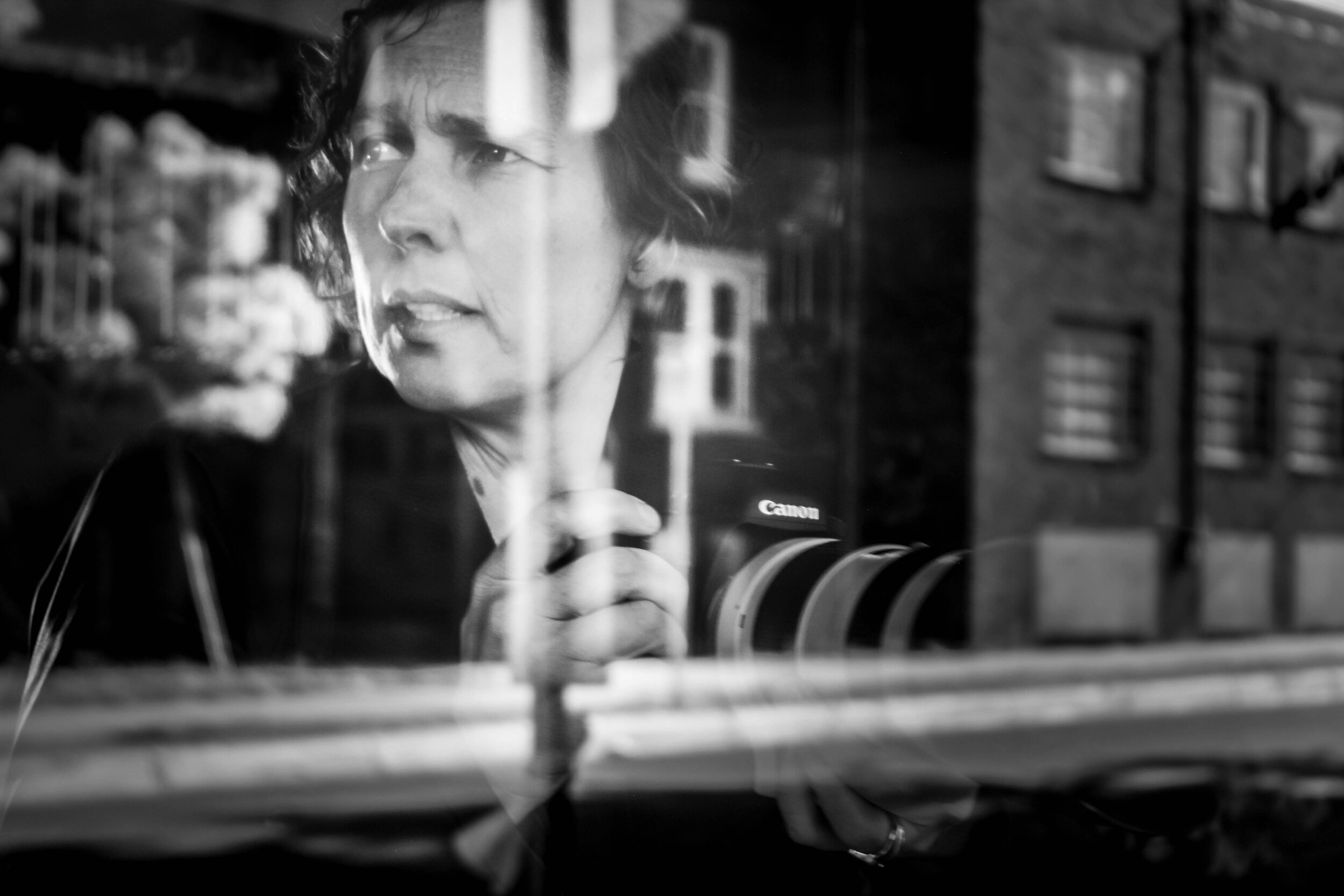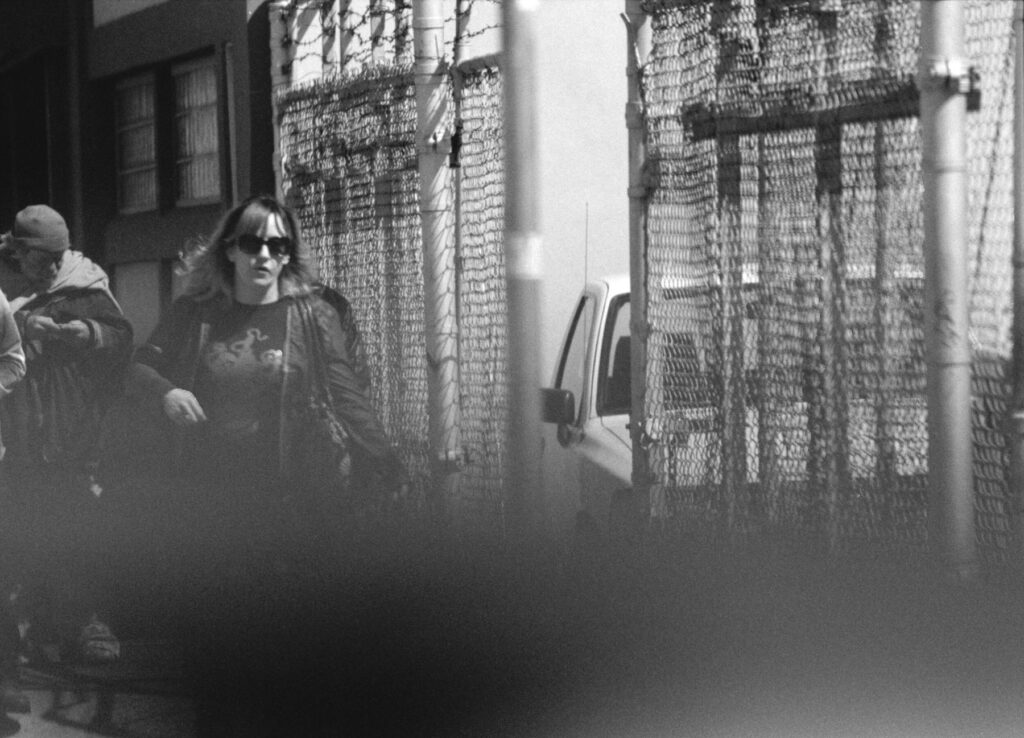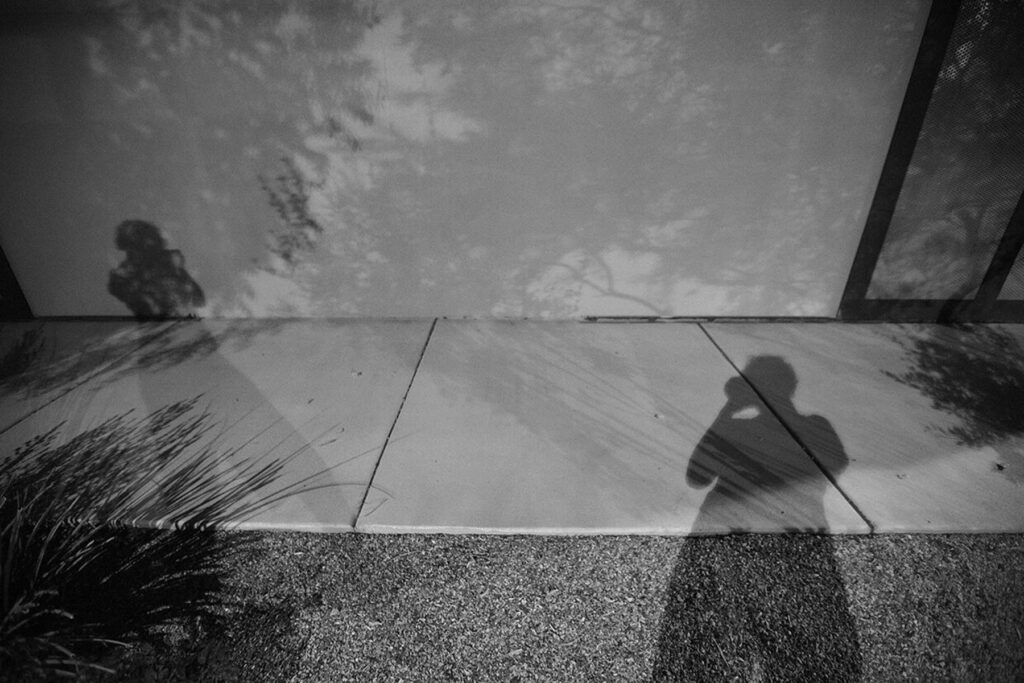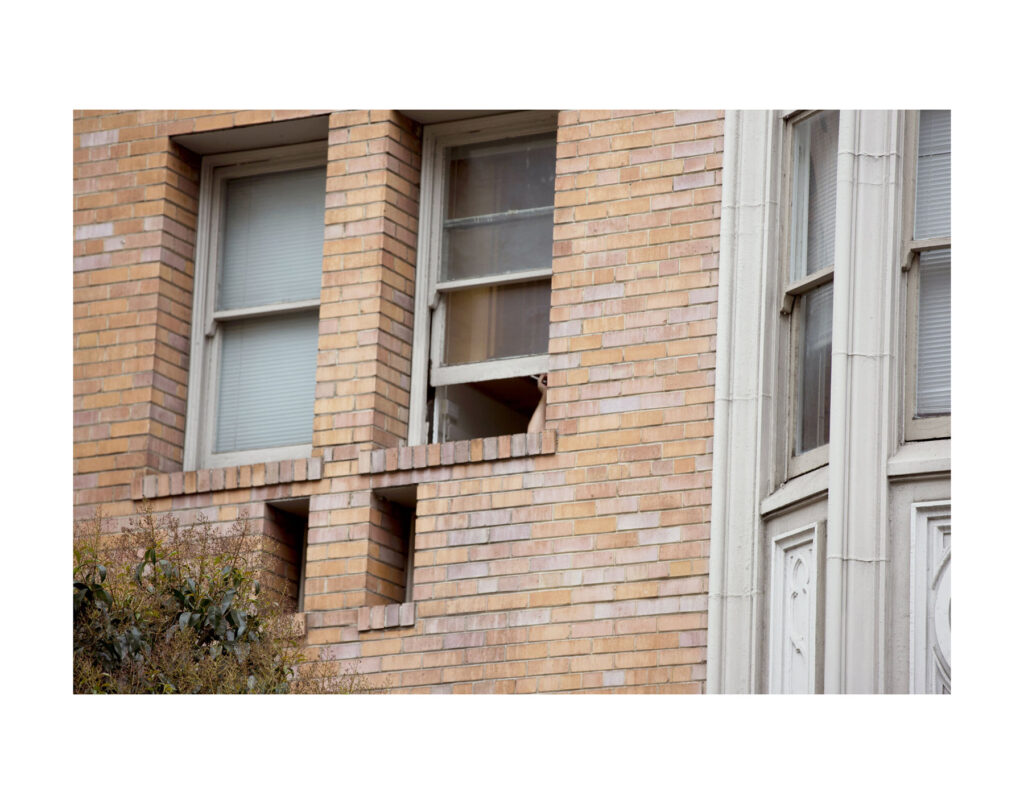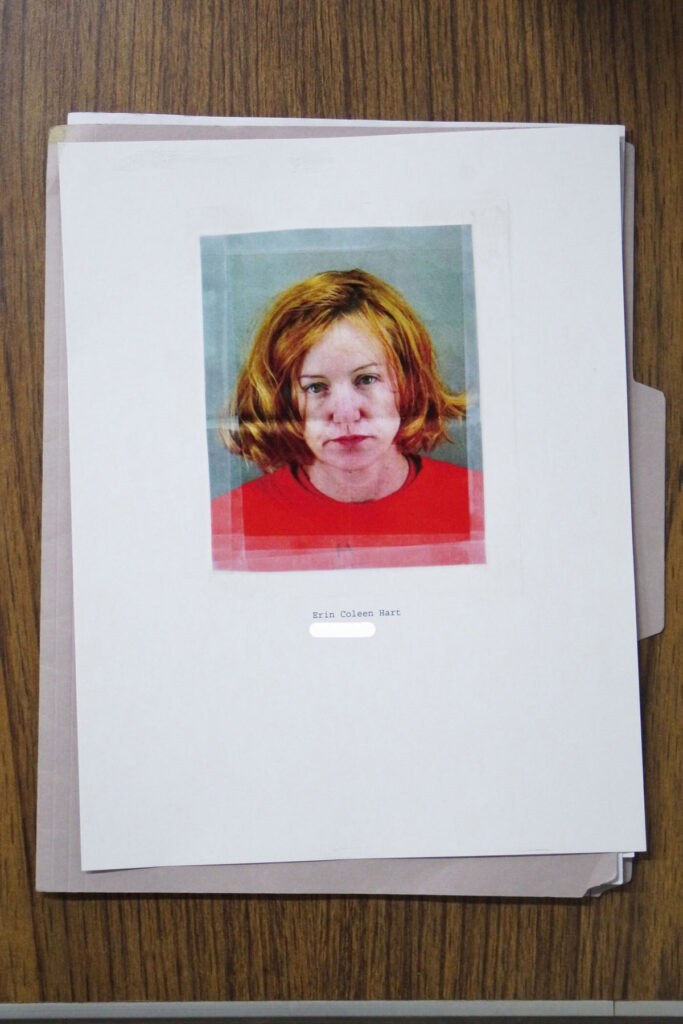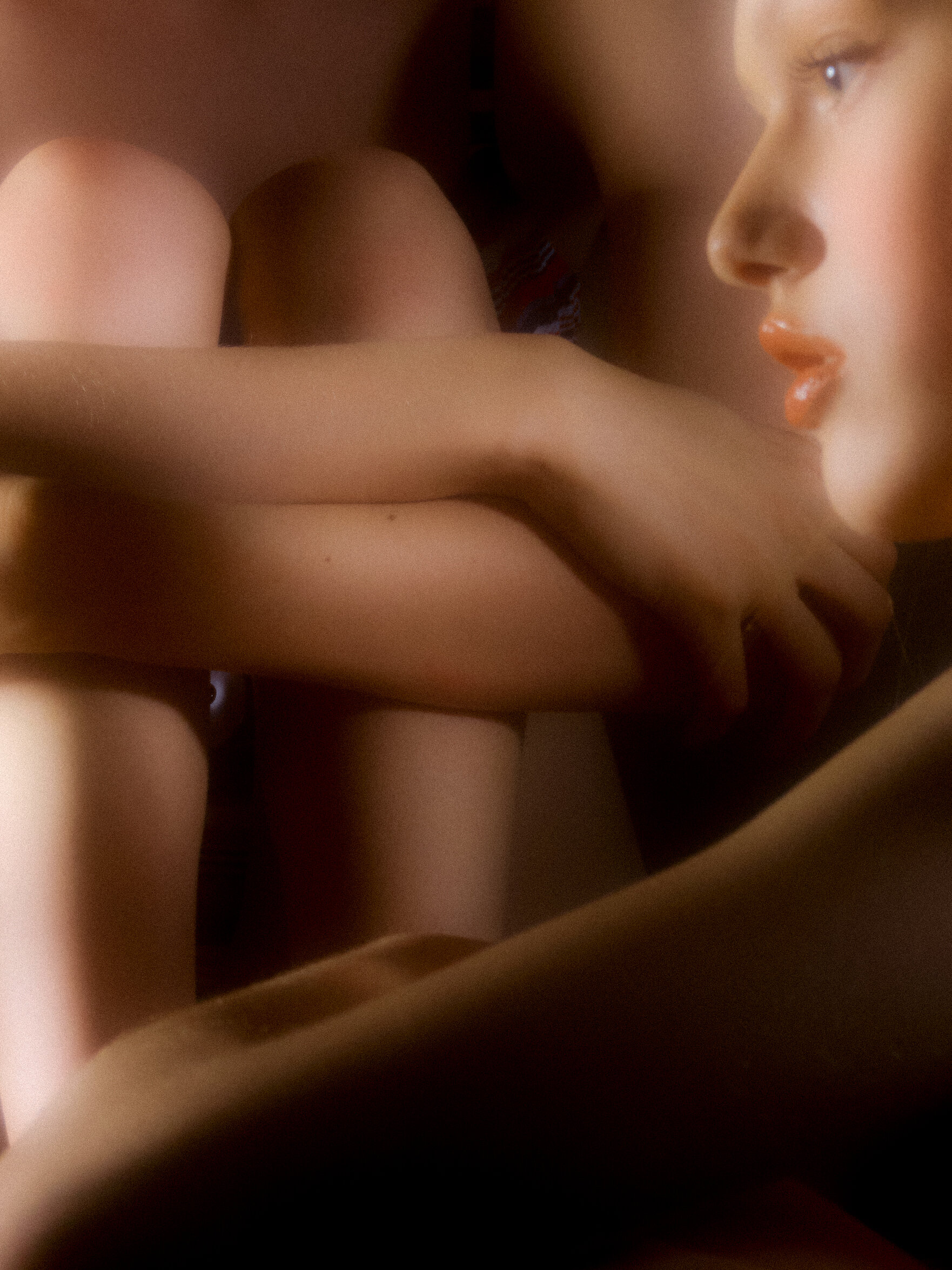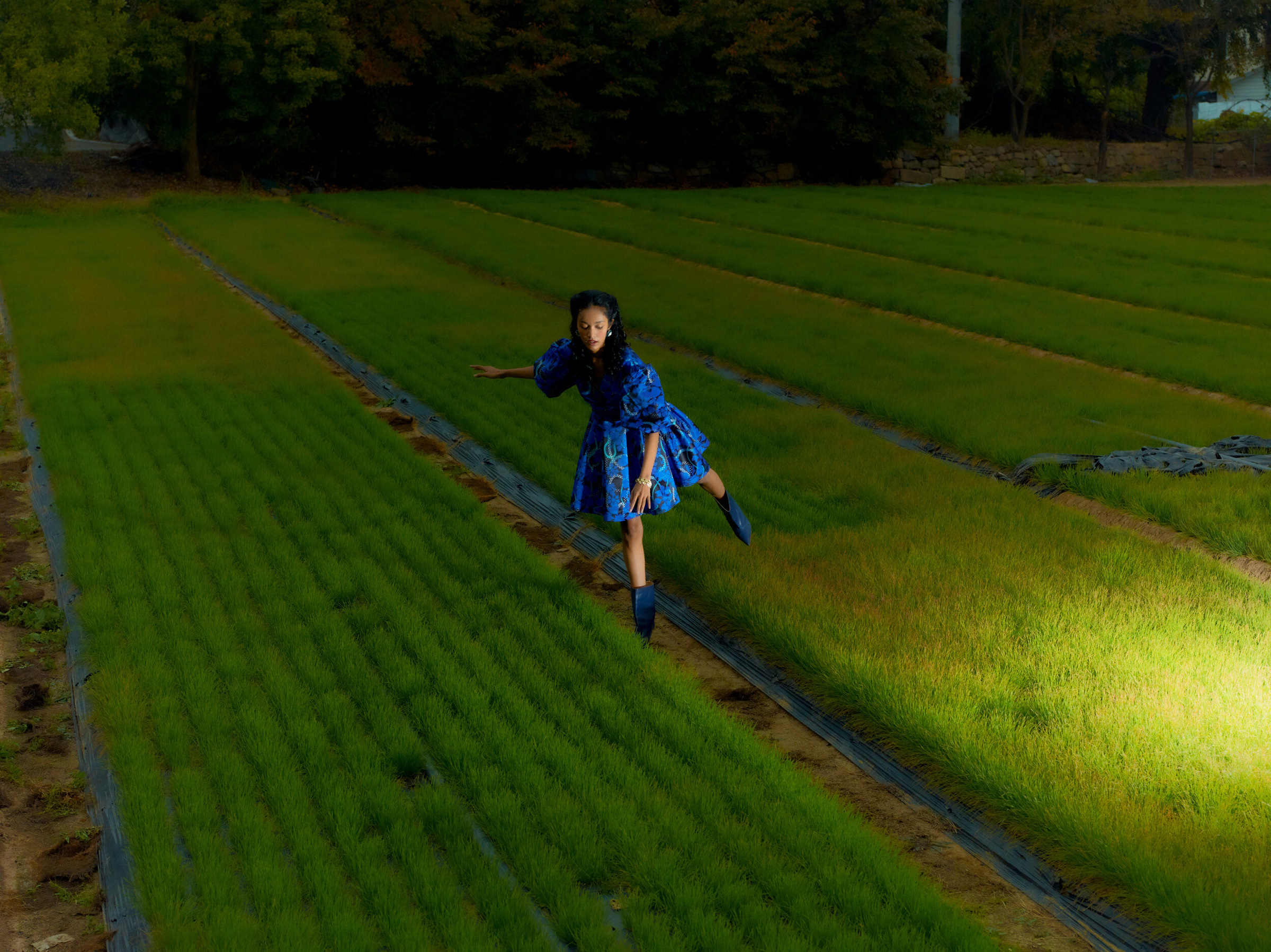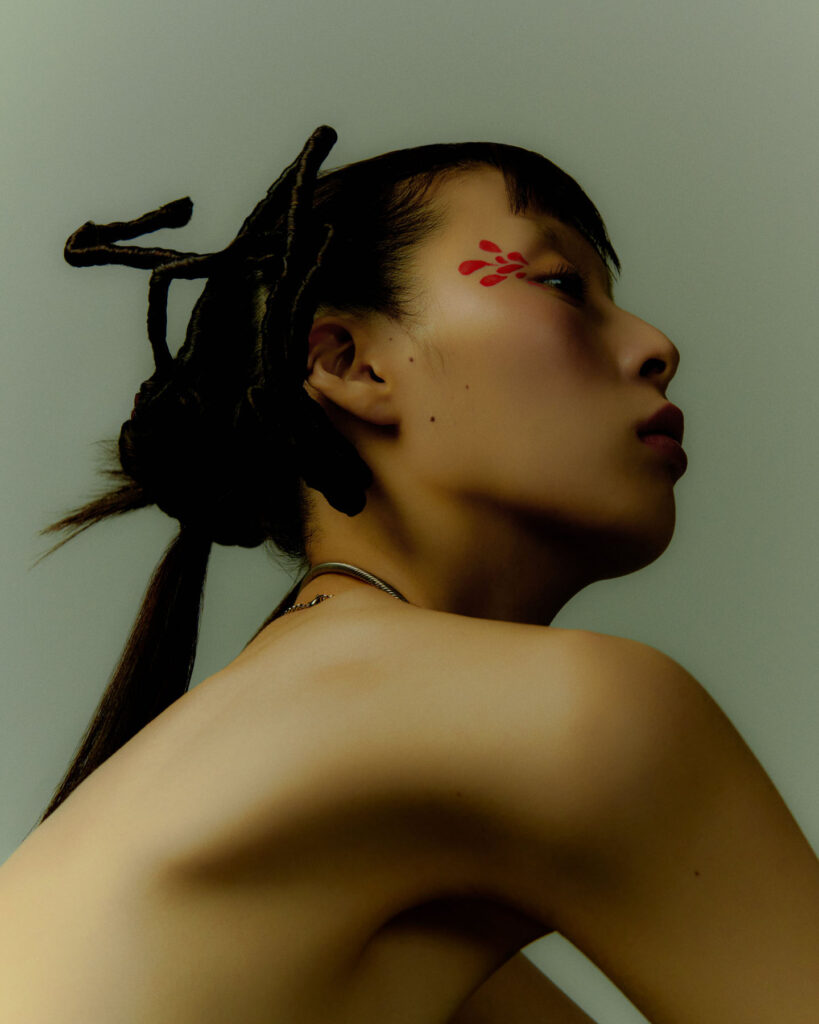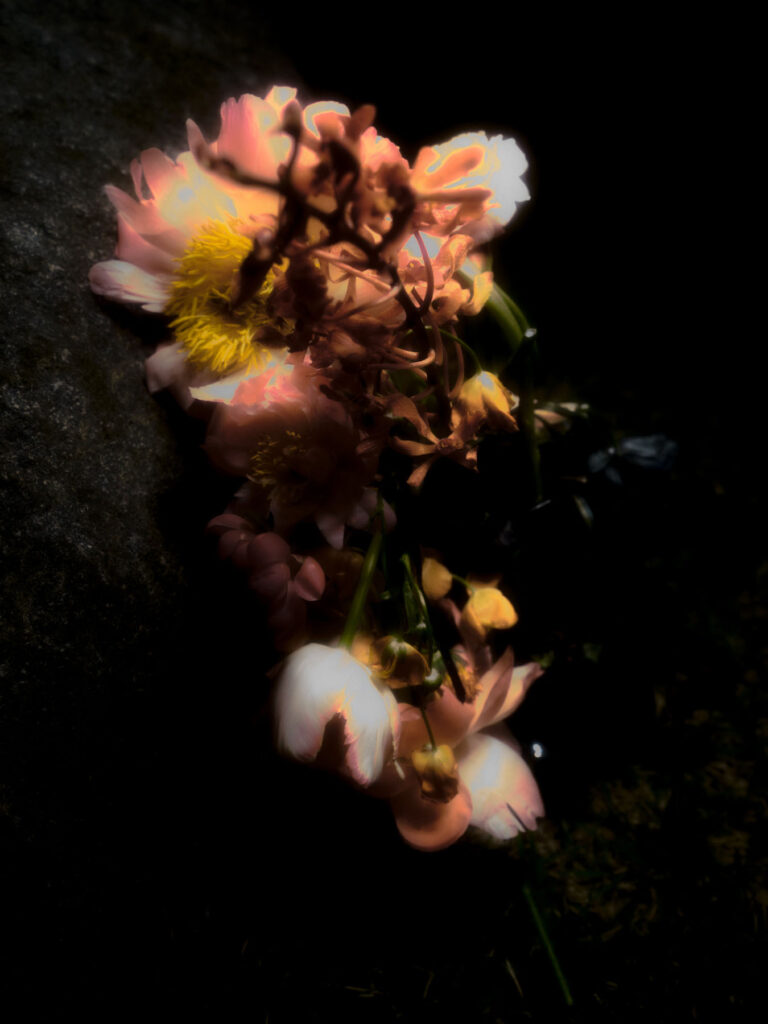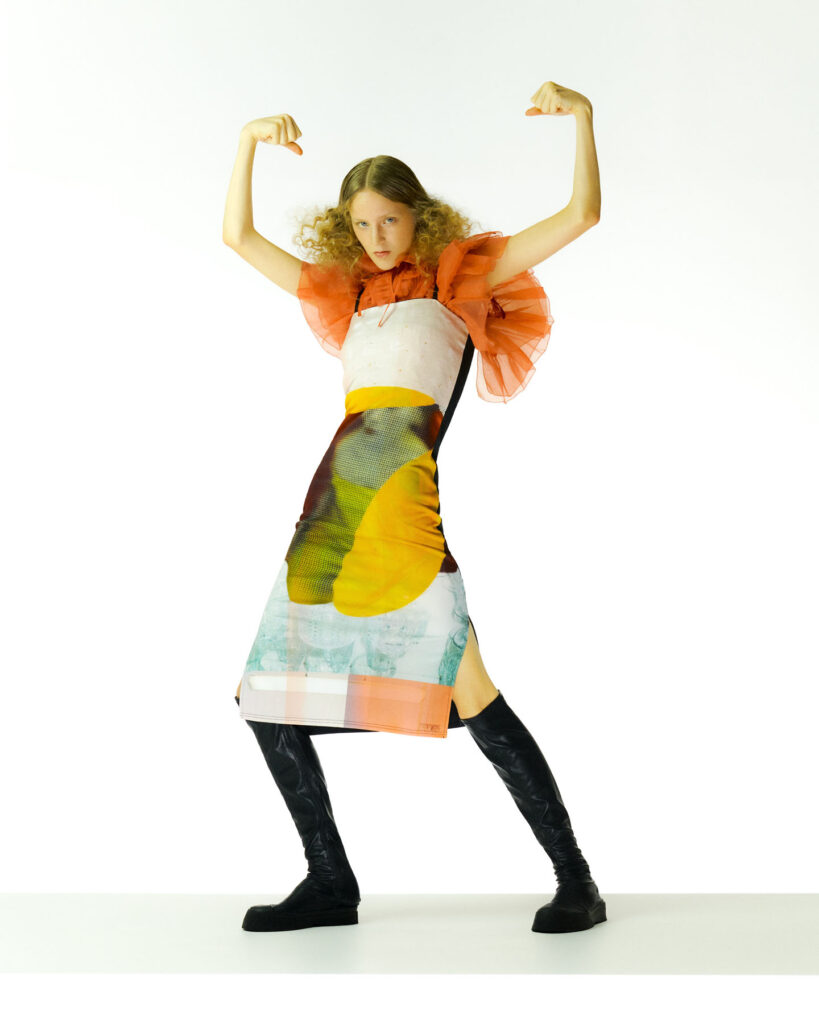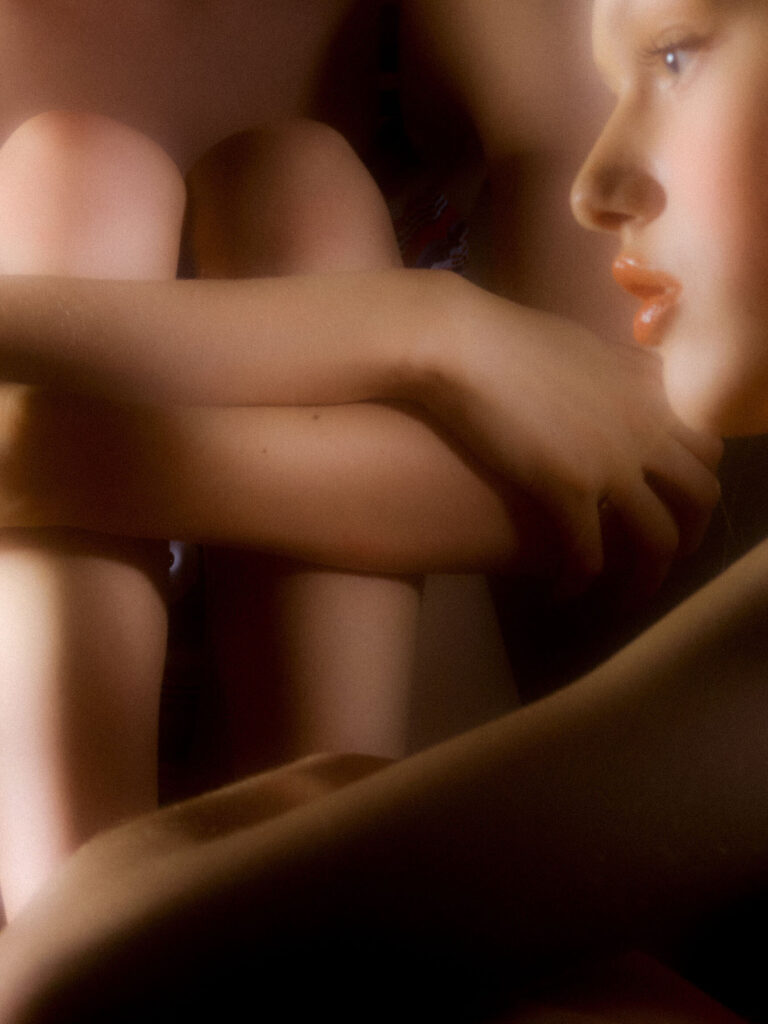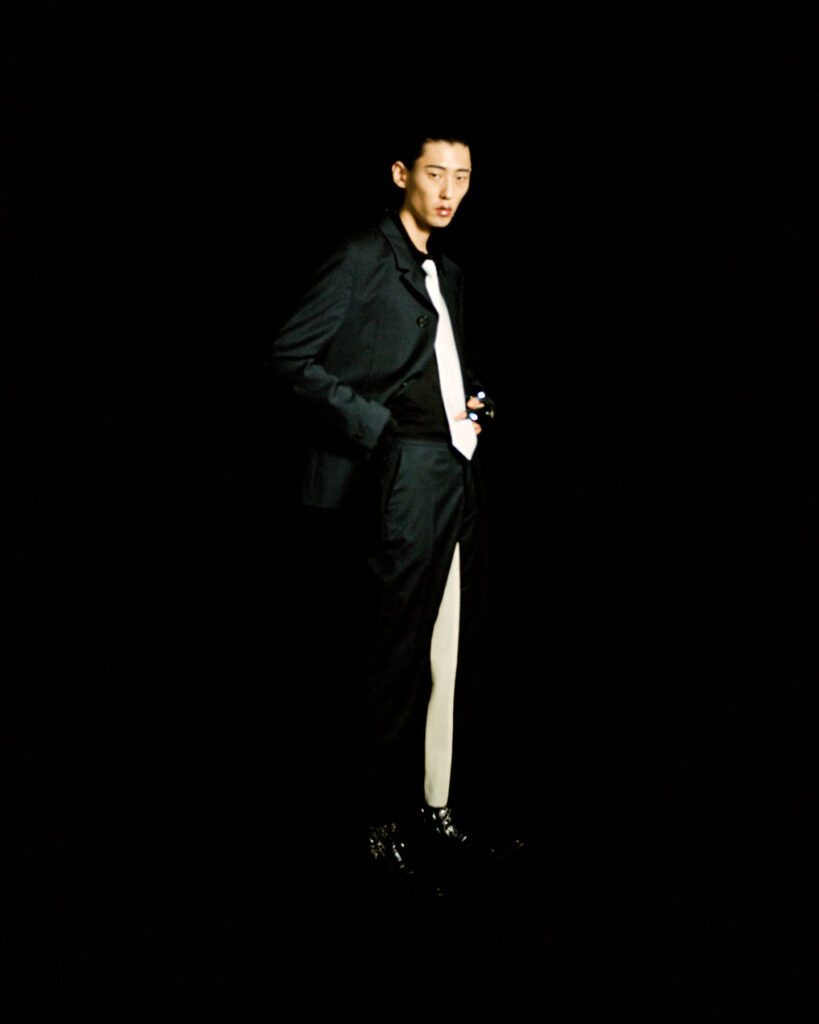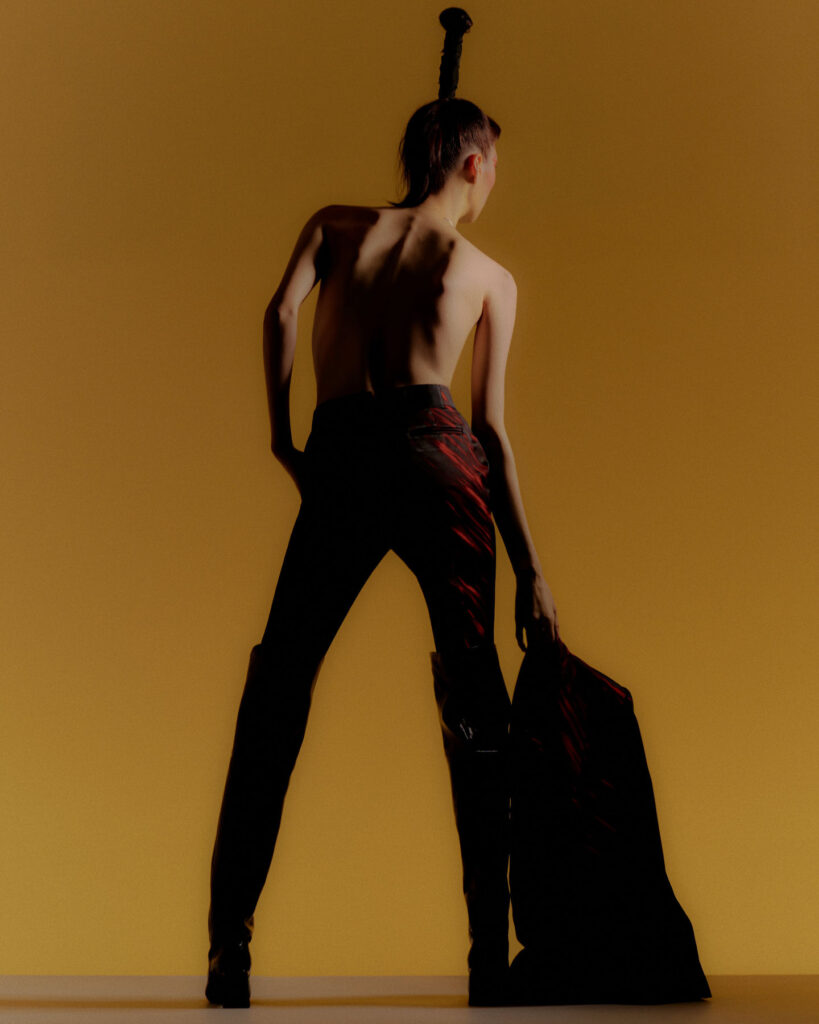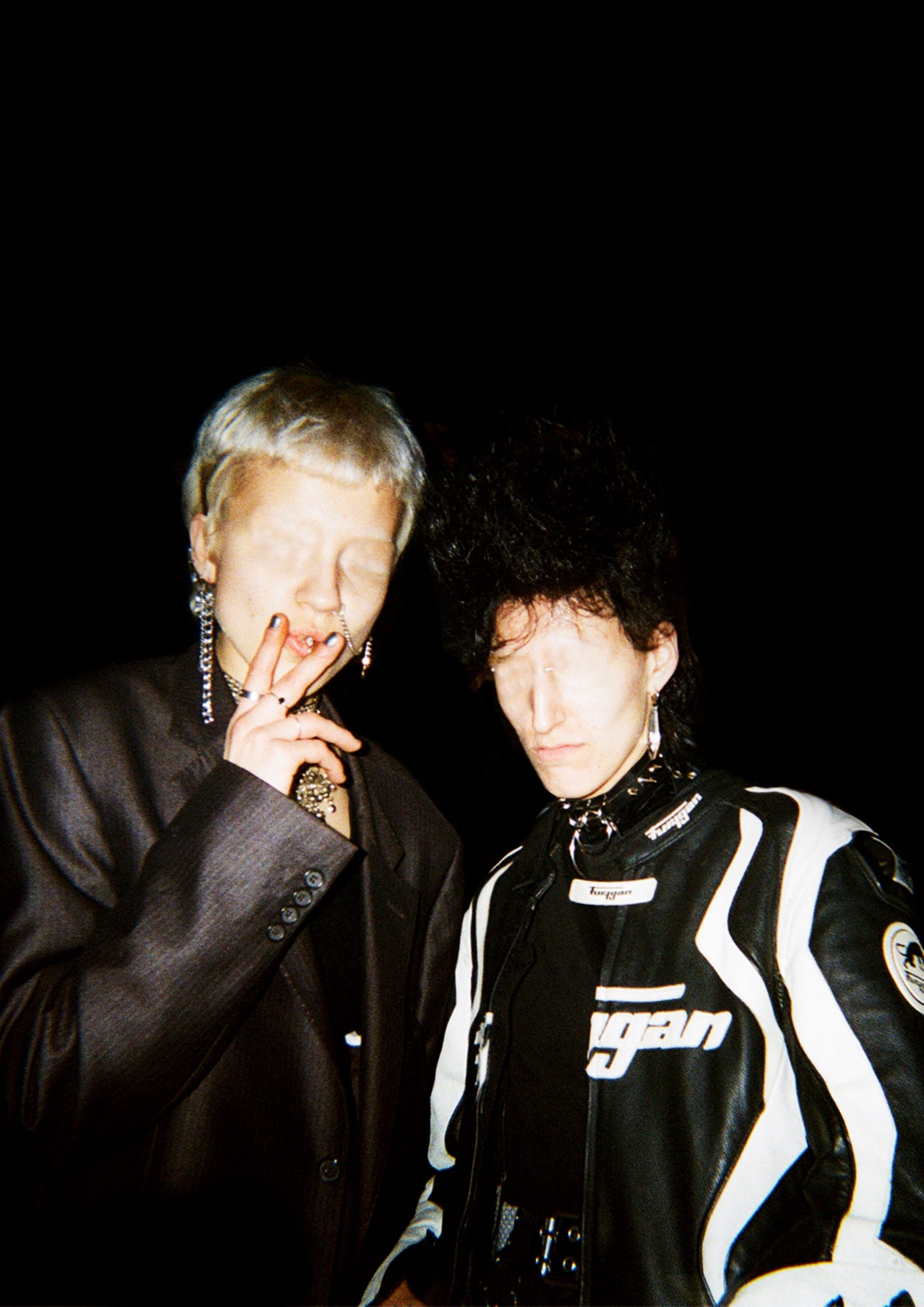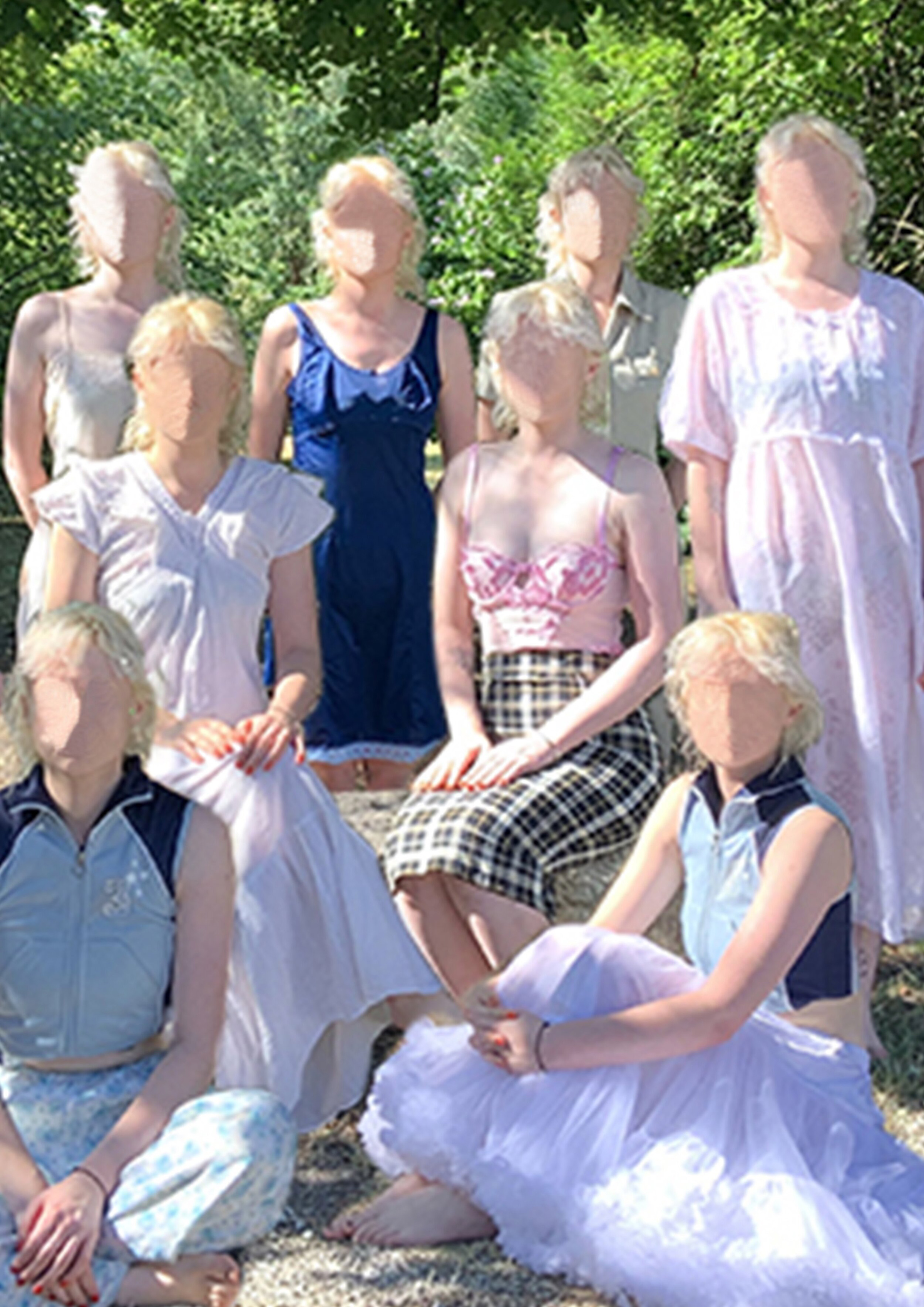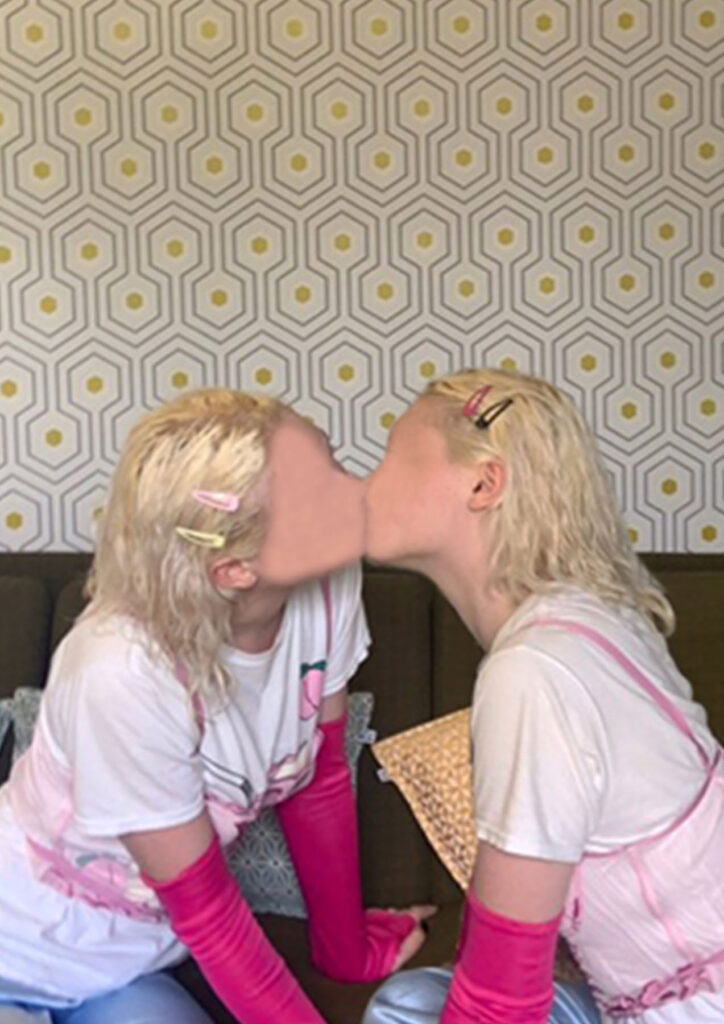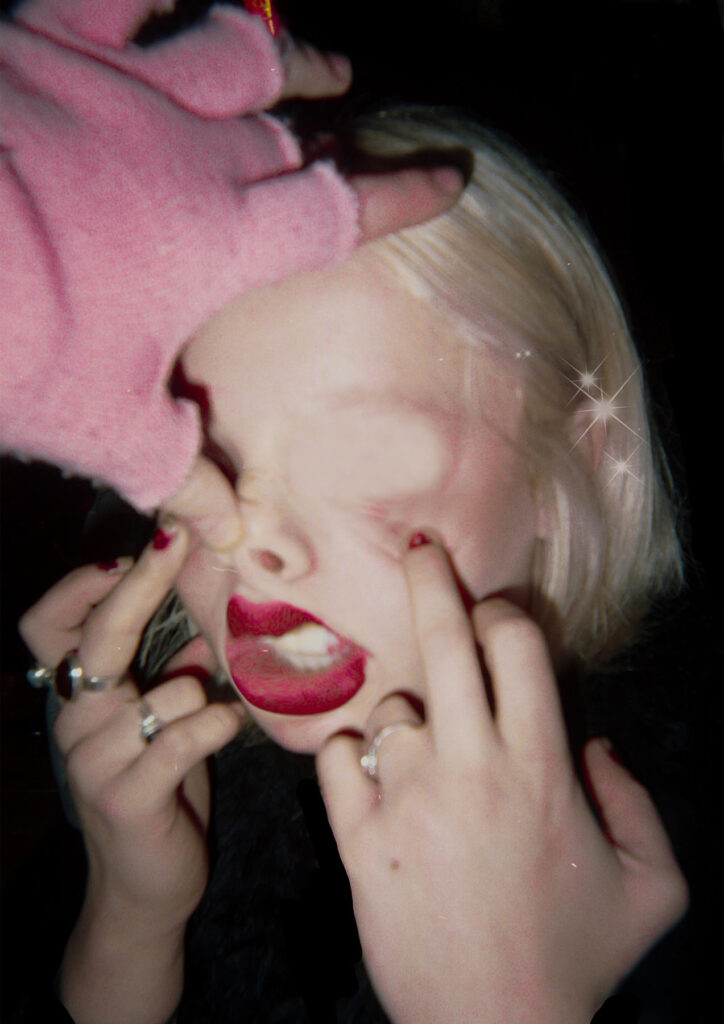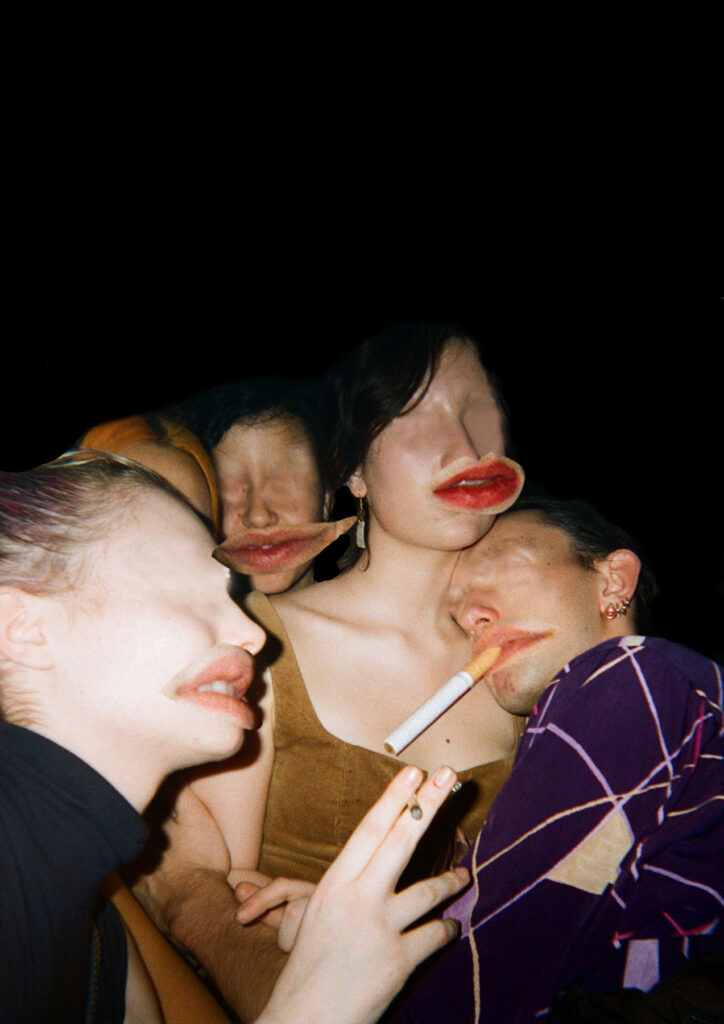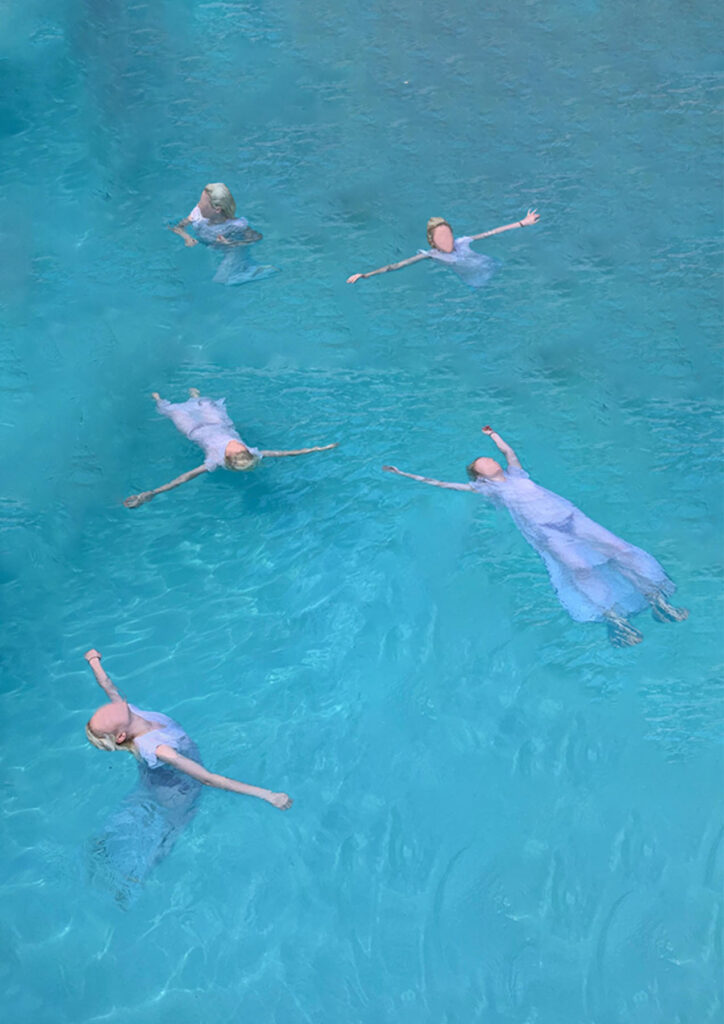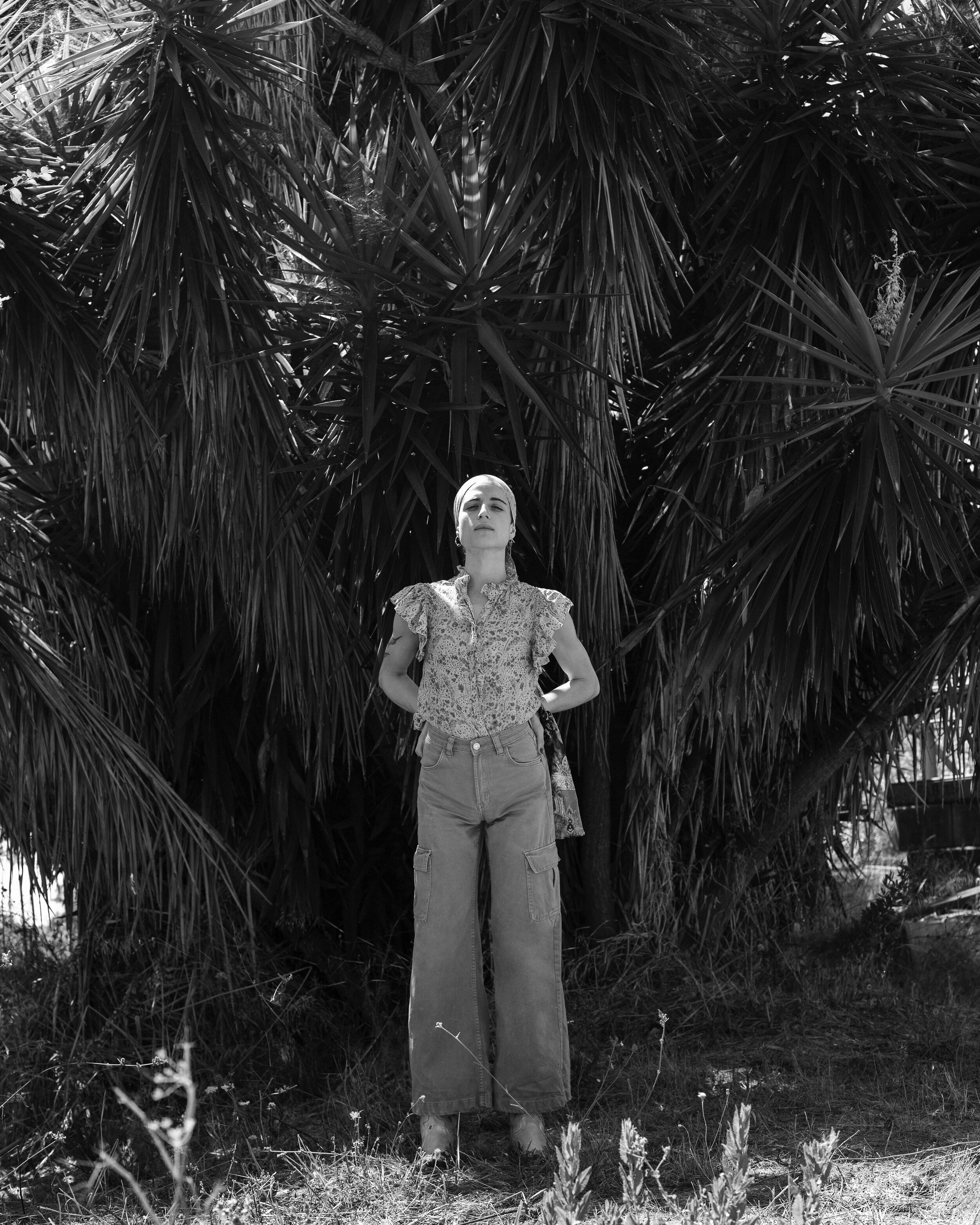
“This is my dream, of being a new creature, half-human, half fish, to be a hybrid, something that can’t be recognised or put in a box.”
During May of this year, while we were just emerging out of a third lockdown and entering a world that was both forever changed and somewhat the same, something else, or rather someone, was also in the midst of transformation. In an abandoned health centre in Belsize Park the art installation/performance Transgenesis curated by The Orange Garden and Charlie Mills, was taking place. Over the course of twenty-three days, Italian artist Agnes Questionmark (Agnes?) climbed into the body of a giant octopus sculpture, which took up the entirety of a drained swimming pool, and stayed there for eight hours every day until the exhibition was over.
For Agnes Questionmark (Agnes?) the start of the exhibition was also the start of her transition from the gender she was assigned at birth. However, she also considers herself trans-species, stating that her “dysphoria is not only gender-related but of species too. I wish I could find a hormone that allows me to become an octopus.” The sea plays a big part in Agnes Questionmark (Agnes?)’ work, she grew up on her father’s boat and being underwater is a comforting experience for her, which she has likened to returning to the womb. NR Magazine joins the artist in conversation.
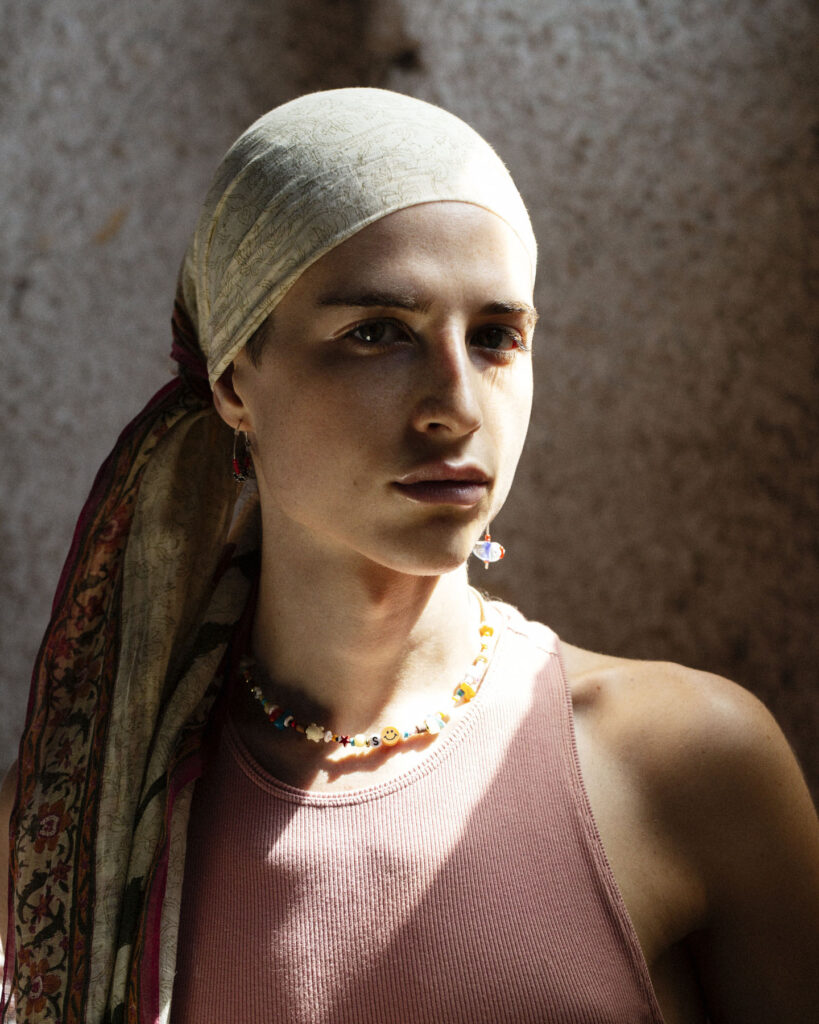
Your father was a sailor and you grew up on a boat. What was that like and how do you think those experiences have influenced your artwork specifically?
I grew up in my father’s boat. At the age of three, I discovered the underwater world holding his hand and at the age of eight, I dived for the first time by myself. The experience of being underwater was always a comfort zone, a familiar place where I would feel at home. I would fish and hunt, explore the fluid element with my body, feeling part of that habitat.
Being completely submerged was what I liked the most. In that precise moment, which only lasted a few seconds, I would feel at peace. Under the water, where sound is muffled, where sight is blurred, where touch is slimy, my body becomes light, my skin soft, I feel a sense of belonging, it’s like going back to the origin and falling into the arms of mother sea.
When my mother told me that, before she gave birth, I would hide in the womb, I realised that I had an unresolved relationship with my mother’s womb. I realised that my whole life I was trying to go back into my mother’s womb. I am trying to recreate that sensorial experience, being into the amniotic liquid, in the placenta. And the place where I felt closer to my mother’s womb is under the water.
Through my art and my performances, I am creating the feeling of being inside my mother’s womb, to perhaps solve my relationship with it.
I also grew up by the sea and one of my favourite games was to grab a big rock and sink to the seafloor to see how long I could hold my breath for. You stated that “Underwater was always a safe place, a place of comfort.” Did you ever play similar games and do you consider your artwork an extension of the play and exploration the ocean encourages in our childhood?
Holding myself with a rock underwater is still my favourite game. I can now hold my breath for about two minutes, so I have lots of fun holding myself with whatever I find under the water. As I said before, while I am underwater I remind myself that I am still in the womb. I like to watch around me and feel part of the habitat, I would look at the fish and pretend to talk to them, I would look at the rocks and pretend they are part of my house.
Your performance in Transgenesis lasted eight hours a day for twenty-three days. How did you cope with such long performances and did the experience affect you after the exhibition was finished?
Transgenesis was a ritual of self-destruction that announced the beginning of a new transformation. The day I started the performance was the day I started my hormone replacement therapy (HRT). While my body was standing at the top of a giant octopus, inside my body a real transformation was taking place. I was changing in real-time in front of the spectator. Even though the changes were not visible I would feel them. Since the first day I felt my body differently, touching myself felt different, my mood was different and my body began little changes that only I could perceive. Alas! I could not enjoy them because I was trapped and chained in the octopus. Every day I had to stand for 8 hours and perform.
It was devastating, an extreme action that consumed all my forces and all my energies. I felt exhausted, the more I would keep going the more I would feel the pain. I needed this process of destruction, I needed to die, to let a part of myself decay in order to flourish a new being.
After the performance, I felt like a new person. Agnes? Was finally born and my new life began. It was the most dramatic ritual I could ever stage and I decided to share it with everyone. The show went viral, more than four thousand people booked themselves in and walked along my installation. There was a sort of peregrination towards the octopus. Everyone wanted to come see the great mother.
Over the course of the twenty-three-day performance that you did for Transgenesis you must have seen a lot of visitors. How did they normally react to your work and what was the most interesting reaction you witnessed?
Most visitors couldn’t believe their eyes. I immediately felt that I created something out of normal by looking at their faces, they were all scared but somehow enchanted by me. The experience was sublime, in a romantic view of a tragedy happening in front of their eyes, like a shipwreck. The viewer was contemplating a suffering being from a safe position, but they were still scared of falling, they wouldn’t get too close, they wouldn’t talk too loud, they would carefully choose their movements, they were all attracted by me but also very frightened. The energy in the room was very dense, all day there was a constant flux of people entering in the dark and loud space. Sometimes I would rest, sometimes I would be very angry, sometimes I would be calm and quiet. Often the spectator determined the energy of the room, I would perform with them at an unconscious level.
One day, a lady came right in front of me, she looked directly into my eyes and we looked at each other for a long time, I was repeatedly moving my arms back and forth following my breath, slowly she started synchronising my movements, it felt like an instinctive reaction to the connection we established. We performed for some minutes, together, moving our arms, looking directly in our eyes without touching but still connecting.
A man used to come every other day, he used to sit down in front of me with dark sunglasses and watch me for hours. No movements, he would just sit down, listen and watch me perform. One day towards the end of the performance he stood up and started dancing like crazy. At that point I was exhausted, it was almost 8 hours of performance, but suddenly I felt all the energies recharged, he gave me strength and I started to perform with him, I felt like laughing and screaming but I could just express myself through my arms and my breath. Later on I discovered he was the singer of R.E.M.
Since the show was completely free we had the most disparate range of audience, from kids to adults, young students, to curators and gallerists, bougie of the neighbourhood or those who lived or were just lost on the street. An old woman came twice, I recognised her because she was holding the same plastic bag, she was messy and dressed as if she just came out from a Tim Burton movie. She wasn’t scared at all, she immediately came close to me, she came very close until she touched one tentacle. She was the one who came closer and stood up next to me and watched me from a very close distance. At first, I was scared because I felt vulnerable, I felt I had no vantage point towards her, she made me feel tiny and shy even though I was a giant octopus 5 metres tall and 9 metres long…
Your work is very personal and explores your transition. Do you think that the pandemic and subsequent lockdowns have allowed people more time and freedom to explore their own gender identity?
Yes, of course, statistics say that gender transition triplicated after Covid. I don’t think it was a matter of having more time to reflect and think but rather we were forced to face our own body because we were left alone with it. There was no opportunity to escape or avoid ourselves, no places to hide. Alone with our bodies, so we all had to find new relationships with ourselves and new compromises.
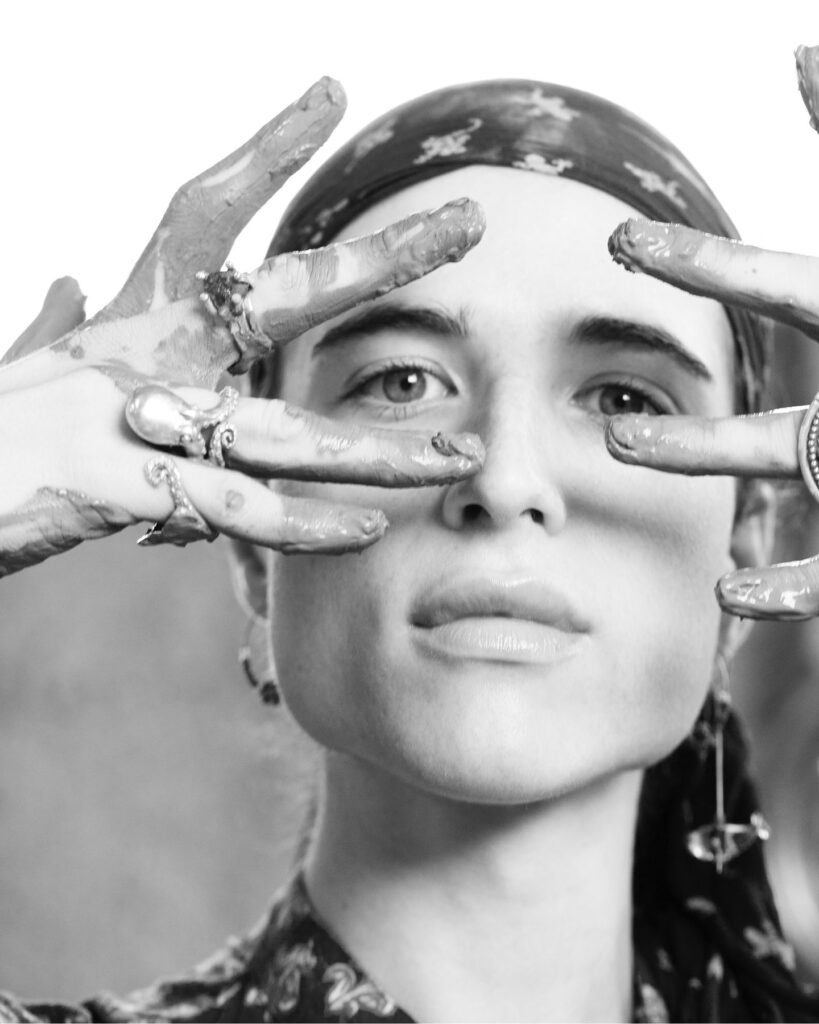
You have spoken of how your work explores the scientific, particularly in relation to the body. Do you think as technology advances the use of cybernetic body enhancements will become commonplace? Is that something you would potentially explore in the future?
I was always interested in re-shaping and re-exploring my body. I feel our body is a potential machine in constant transformation. Watching my body changing radically through medicines is inspiring me to transform it at an even deeper level. Gender transition is the first step towards my cybernetic future. My next step would be exploring the possibility to expand my senses towards other beings in the sea, and therefore use extensions of my body to connect with them.
You have stated that your dysphoria is not only related to your assigned gender but mainly caused by your assigned species. Recently there has been a rise in popularity in non-human x human relationships in media. Do you think there is a collective desire for marginalized groups to move away from ‘humanity’ and escape post-capitalist patriarchal trauma by becoming and embracing the otherworldly?
Fascination with the non-human is becoming more popular and of a trend. Human prostheses, body extensions, claws, tentacles, tails, we dream of becoming a post-human creature to transcend our humanity and become something new. This is my dream, of being a new creature, half-human, half fish, to be a hybrid, something that can’t be recognised or put in a box. I am tired of being a human, my body is not representing what I feel. I feel more connected to the sea, I wish to talk with its creatures and connect with them and perhaps create new bonds. For this reason, we should rethink our way of communicating and relating to the world and start creating new ways of communication, starting with ourselves and our bodies. If we want to be post-human we ought to destroy our notion of being human and see ourselves as a potential being in constant transformation.
You have spoken often about wishing to return to your mother’s womb and your connection with female octopi who die when they become mothers. Do you consider yourself to have a fascination with the concept of motherhood and do you consider the creation of your artwork as a kind of birth?
The concept of the womb is the one of gestating life. I feel like my art is a womb, my studio is a placenta where things and beings are born. It’s a place that destroys to reshape itself, that kills and gives birth, like the mother. The mother has always been the figure of life and death at the same time. This is why we are all scared of our mother because we know she can kill us.
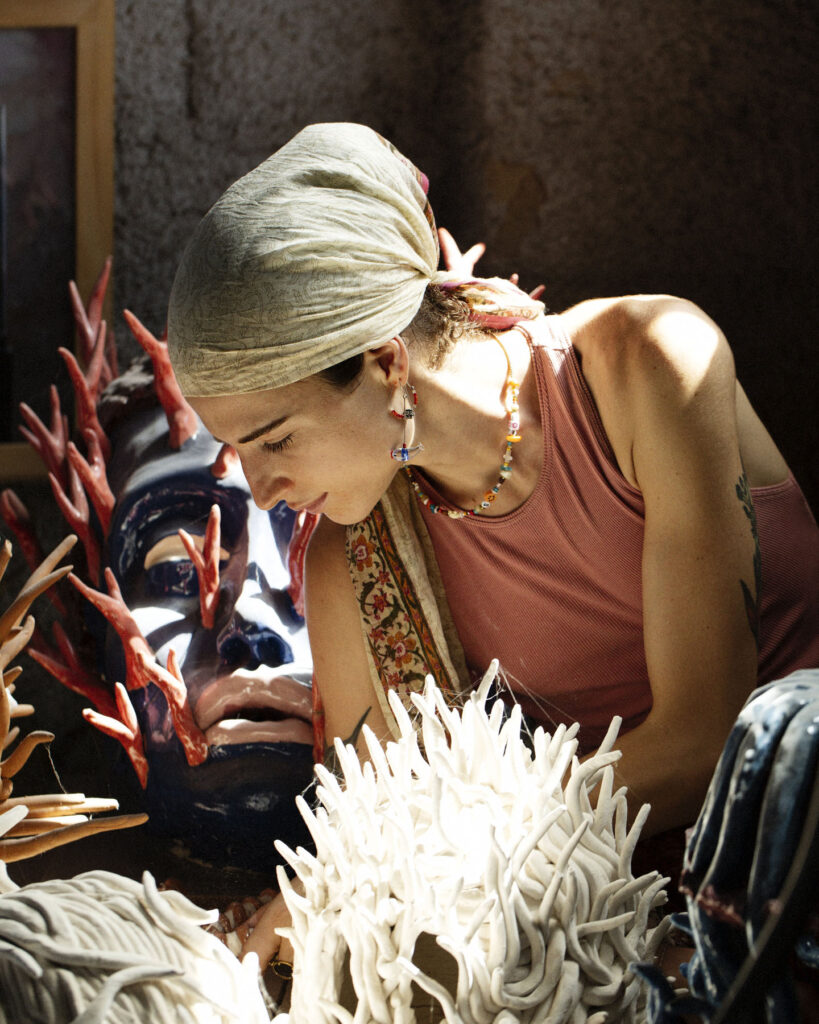
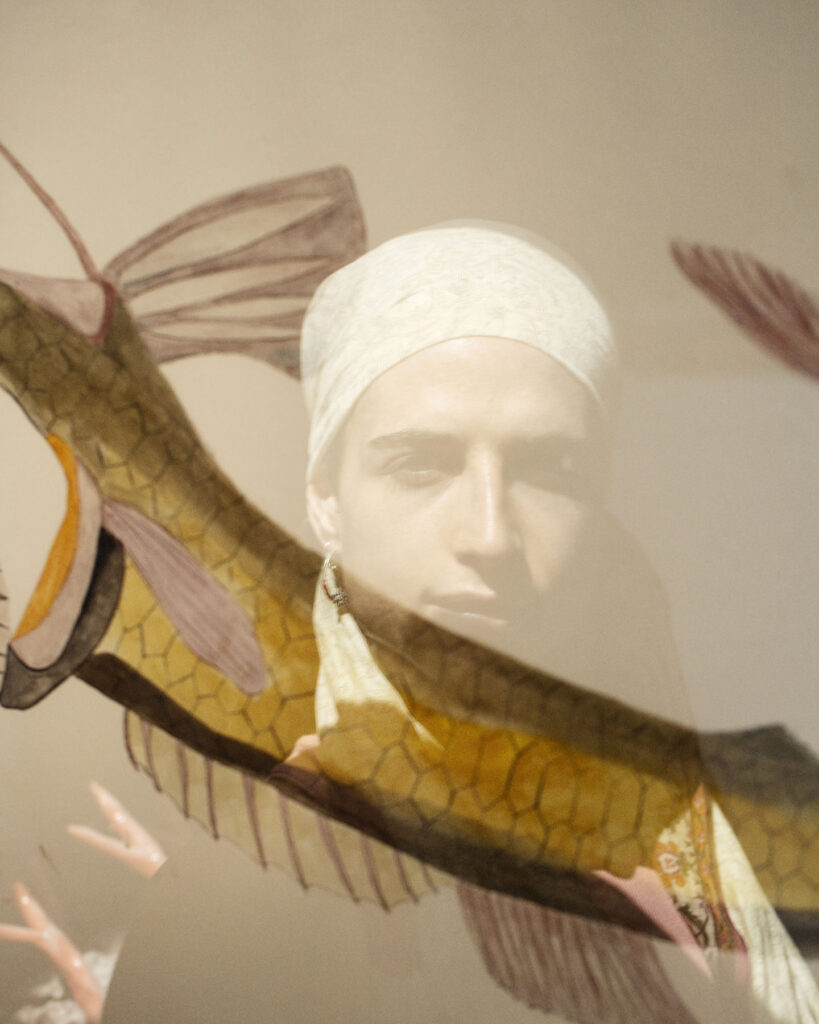
What advice do you have for young creatives looking to explore their identity and what does identity mean to you?
Identity doesn’t exist, gender is a construction of society. So forget about everything you learned and do whatever you like. You make your own rules. Be a rock star, be a rebel, don’t give a fuck about anything; don’t listen to anyone, follow your instinct and make lots of mistakes.
I always remember that I have the agency of being whatever I want to be, and If you want to be an octopus I am proof that you can do it!
Are you working on any projects at the moment and what plans do you have for the future?
I am transforming at a fast speed, everyday I am a new person. So my work is changing very fast too. I see and feel things differently, so I am enjoying my transformation and letting my new ideas come out. There are lots of projects I am working on at the moment, one of them is in collaboration with a great Greek artist who is also a trans-pieces queen so we are making something very special together.
